Seeing Chandni Chowk


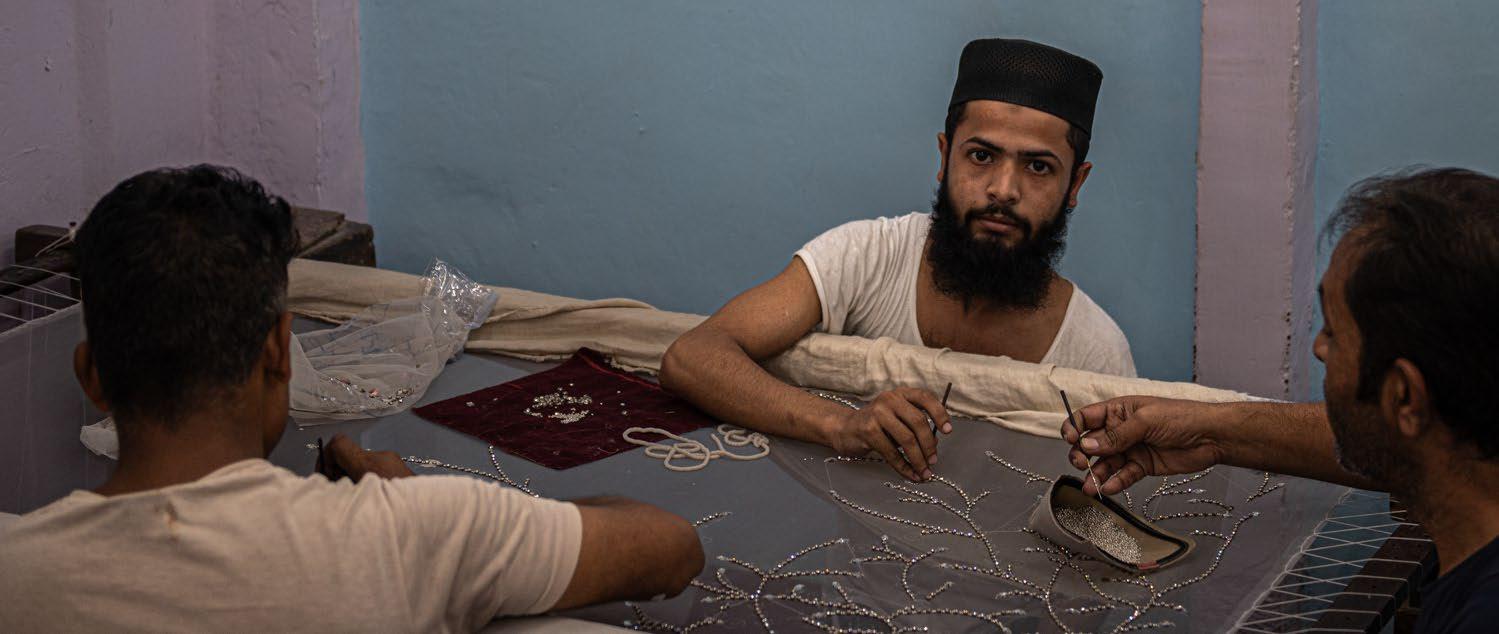
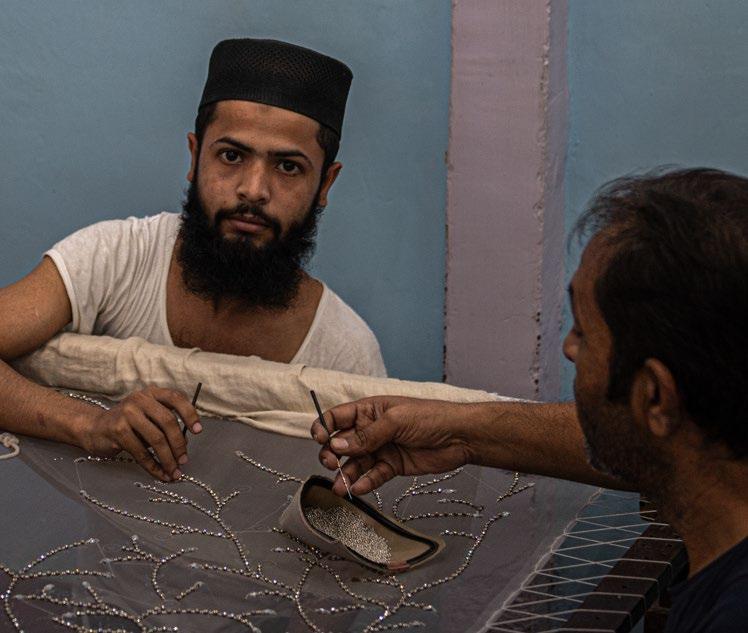



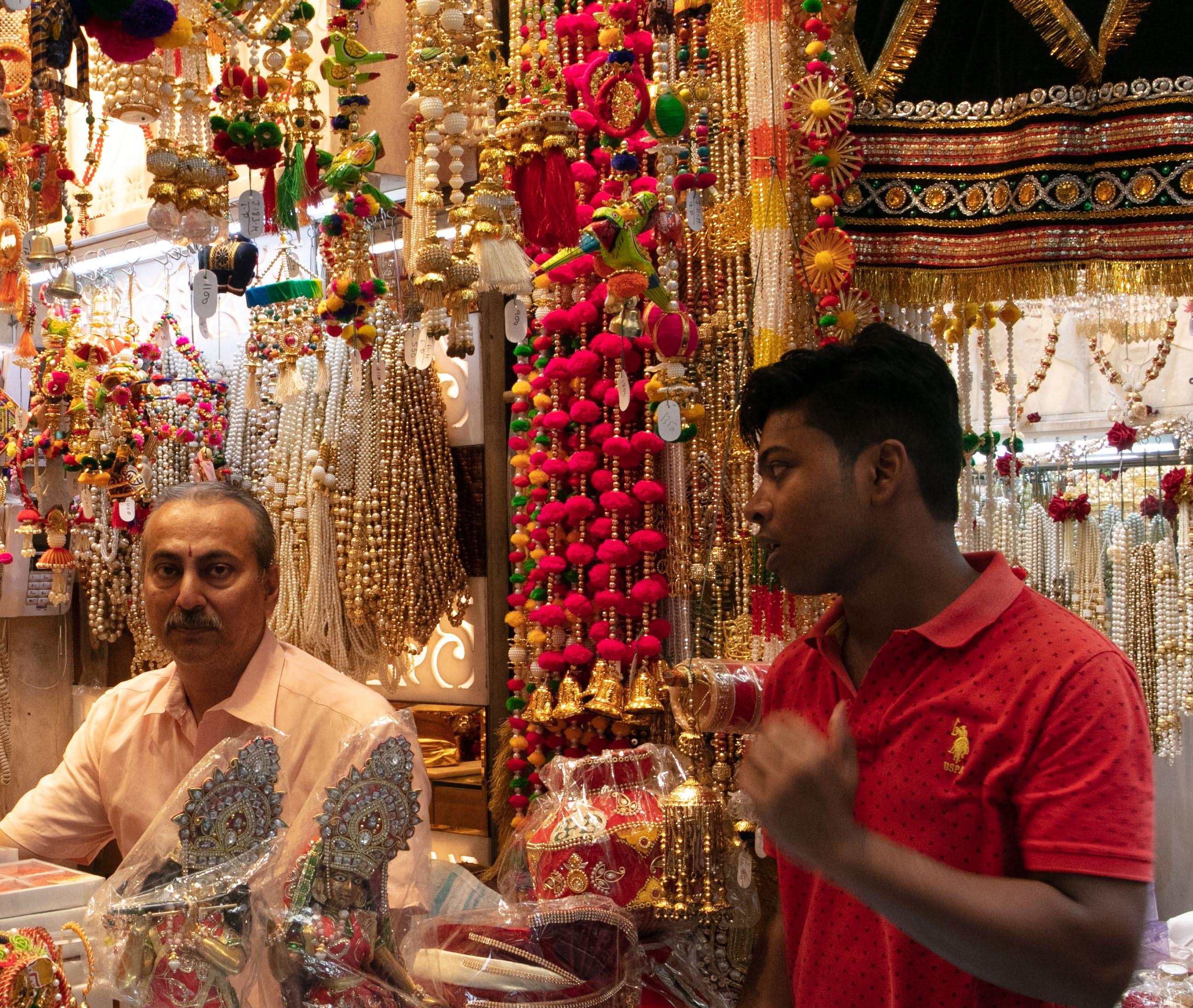


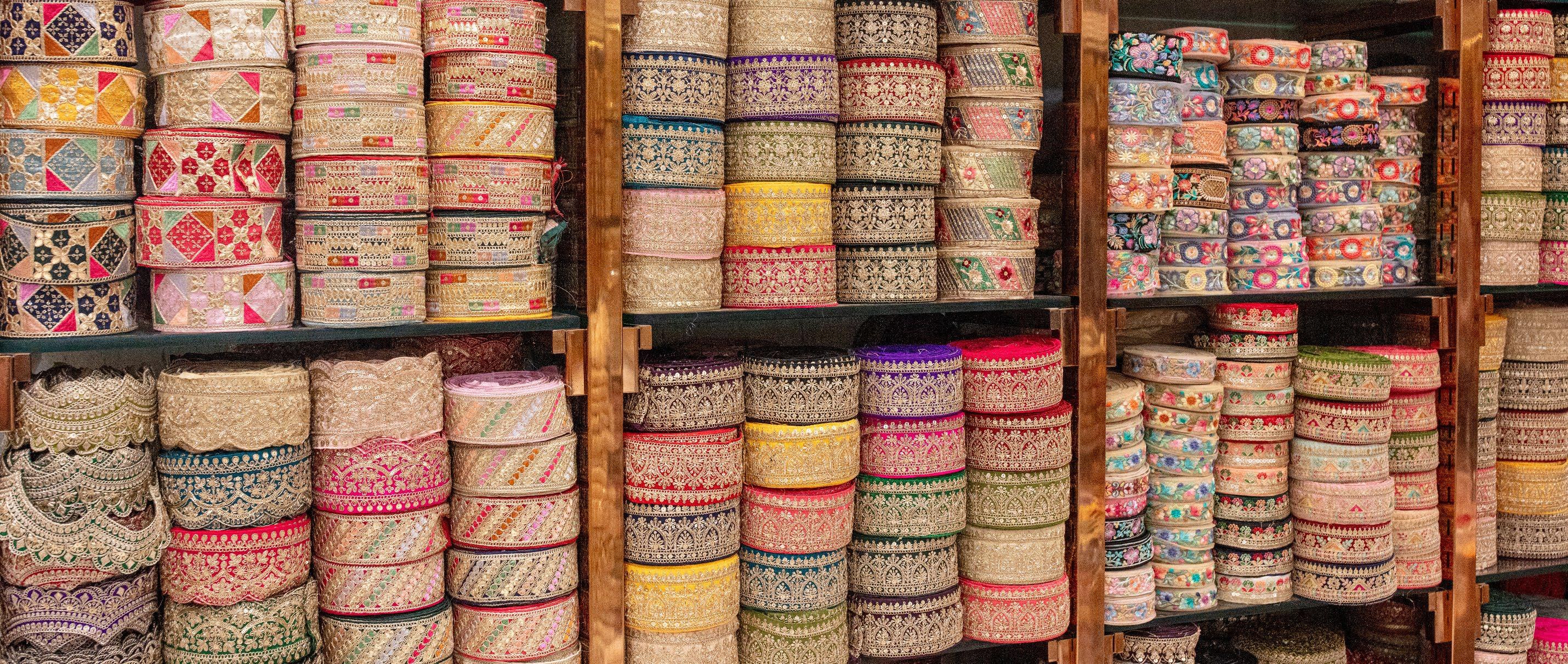

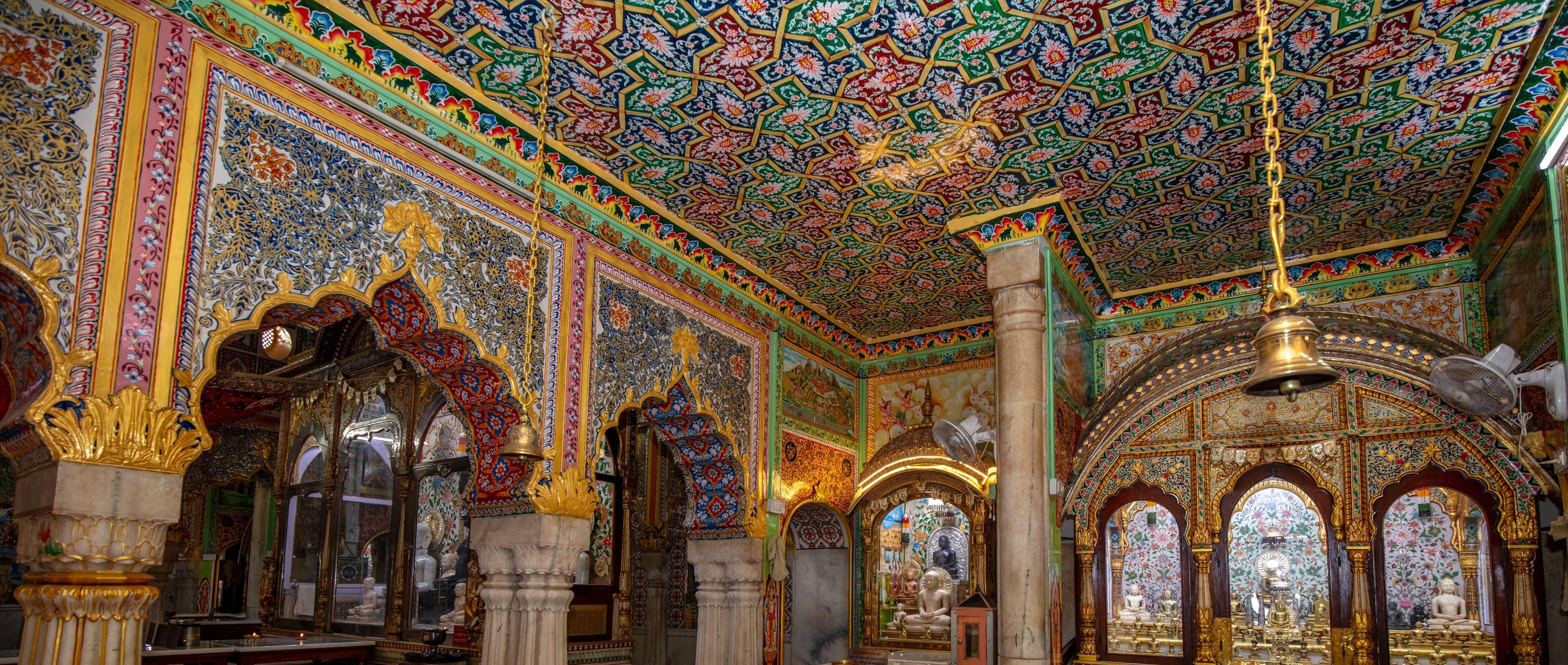
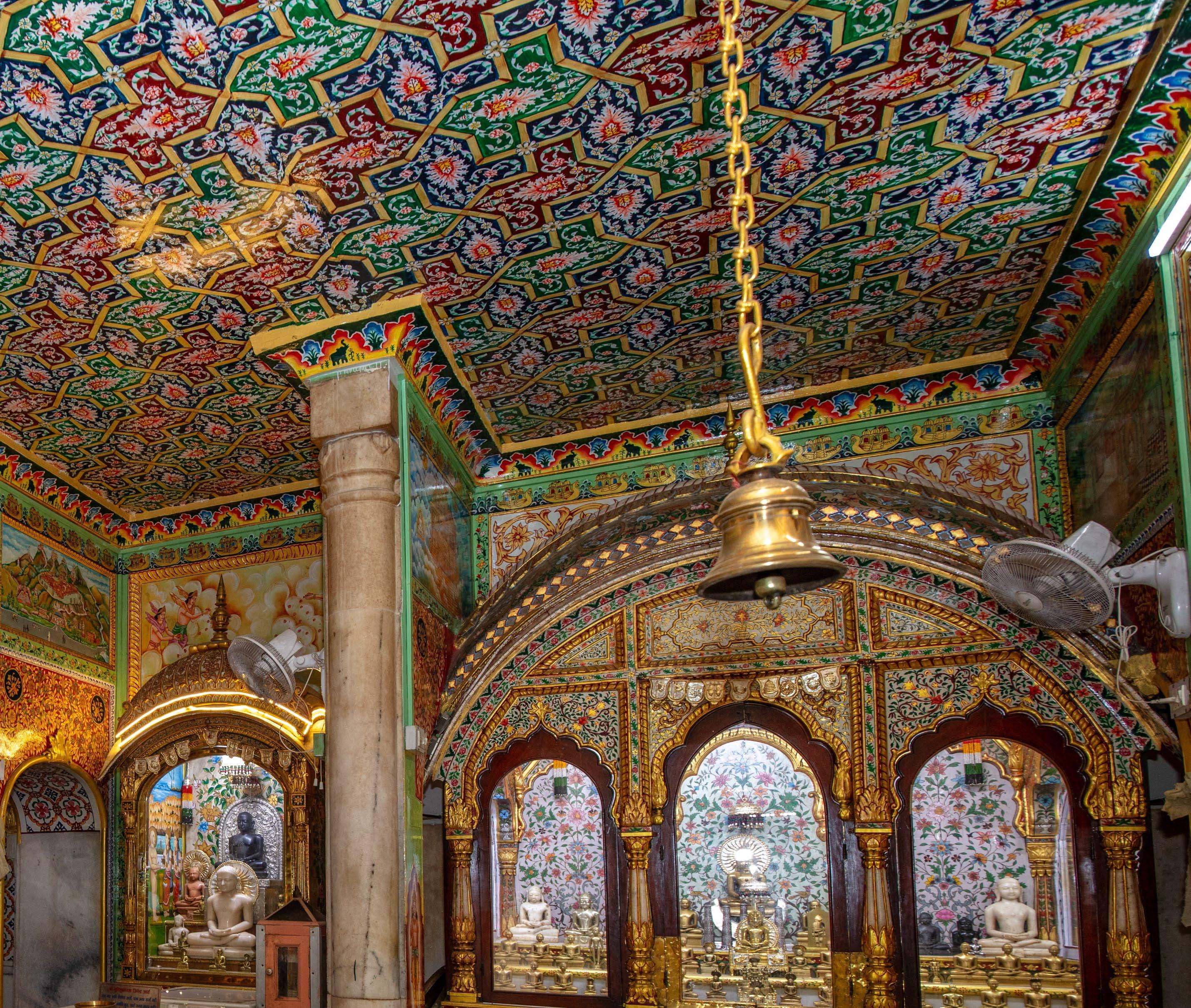
Introduction – Umesh Gaur
Table of Contents
Seeing Chandni Chowk – Swapna Liddle
Three Lenses, Many Histories: Photographing the Old City – Carol Huh
Chandni Chowk: A Photographer’s Paradise – Umesh Gaur
• The Iconic Markets of Chandni Chowk
• Life on the Streets
• Ancestral Families of Chandni Chowk
• Moving the City: The Human Engines of Old Delhi
• The Living Institutions
• The Living Culinary Heritage
• A Sacred Mosaic: Faith in the Old City
• The Last Keepers of Craft
• Renaissance · Rejuvenation · Resurgence · Revival
Authors and Photographers Biographies
Glossary
Acknowledgements
List of photographs
Introduction
This book is a testament to my enduring love for Chandni Chowk, a place that has been a part of my life for decades. It is not just a place I have photographed; it is where my story begins, a place that holds a special place in my heart.
My mother, Jagrani Gaur, was born in Haveli Haider Quli in Chandni Chowk. My father, Harish Gaur, came from a relatively modest background in a village on the outskirts of Delhi. However, with his hard work and intellect, he rose to become the Dean of the Science Faculty at the University of Delhi, one of India's most prominent universities. He joined the university in the 1950s, during an era when waves of young scholars traveled to the USA for further postdoctoral research. My father went to the University of Illinois for two years. While he was in the US, my sister, mother, and I lived with our grandparents in Chandni Chowk. It was during these years, while walking through the streets of Chandni Chowk and enjoying the street food of Old Delhi, that I formed a lifelong bond rooted in memory, family connections, and enduring love for Chandni Chowk.
My father's love for America and photography was infectious. He brought back with him two cameras, one of which he gave to me. On Sundays, we would venture into Old Delhi together, capturing the essence of Chandni Chowk through our lenses. Under his guidance, I developed a deep love for photography, particularly for Chandni Chowk, a place I have been photographing for over five decades, always finding the poetry of light and shadow in its narrow winding lanes.
Years later, when I read Swapna Liddle’s book on the history of Chandni Chowk, it reignited my interest in revisiting these streets through my camera. I learned a great deal about the history and nuances of Chandni Chowk. At the same time, I realized that a photographic study of this area has never been published. It was this deeply personal encounter that sparked the idea of creating an extended photographic project on Chandni Chowk. What began as a personal response to Swapna's scholarship has now blossomed into this book, which I am honored to coauthor with her. I am deeply grateful for her insight, her generosity, and the wisdom she has brought to this collaboration.
I followed in my father's footsteps and came to America for graduate studies in the 1970s. After obtaining a doctorate, I started working at Johnson & Johnson. After a few years there, I took up an academic position at Princeton. At Princeton, I developed an interest in financial markets, which led to the formation of my asset management firm in the 1990s, which continues to thrive today. Owning my own business allowed me the time and resources to pursue serious photography while traveling worldwide.
It was also around this time that my wife Sunanda and I developed an interest in collecting modern and contemporary Indian art. In the 1990s, auction houses in New York began offering works by senior Indian modernists. Iconic works were coming onto the market, and the collector base was still limited, with few collectors competing for them. Consequently, we were able to rapidly build a significant collection of these works, to the extent that in 2004,
we were named among the "Top 100 Collectors" in America by Arts & Antiques magazine, alphabetically listed just below Bill Gates!
As our collection gained recognition, we began collaborating with museums to organize exhibitions featuring modern and contemporary Indian art. In 2007, I helped organize a major contemporary Indian photography exhibition at the Newark Museum by introducing Paul Sternberger and Gayatri Sinha to the museum, who became the exhibition's curators. Working on this project, we developed an understanding of what makes a photograph a work of art. We learned that art photography transcends representation to evoke emotional and intellectual engagement with the viewer through the interplay of elements such as composition, framing, and lighting. The concepts of gaze, photographic structure, and visual storytelling in a picture became a thrilling discovery. Shortly thereafter, we began adding photography to our growing collection.
One of the first works we acquired was a set of twenty prints by Atul Bhalla based on the Piaus (public water faucets) in Chandni Chowk. As a novice in collecting photography, I reached out to Mary Sue Price, the Director of the Newark Museum at the time, to inquire whether Atul Bhalla's work was included in the upcoming exhibition at the museum. She responded by saying that not only was Atul Bhalla included in the exhibition, but his work was slated to be featured on the cover of the exhibition catalog! This beginner's luck steered us toward building a substantial collection of modern and contemporary Indian photography, which evolved into one of the largest collections of its kind in the US. In 2017, we gifted most of this collection to the Smithsonian National Museum of Asian Art. Based on our gift, the Smithsonian has organized two exhibitions of contemporary Indian photography, and a third one is currently under development.
Nevertheless, gifting our photographs was somewhat bittersweet. Although we were thrilled that our collection was going to be researched, exhibited, and preserved in the museum, I missed having them at home. My wife gently suggested I print my own photographs. Pulling out my old negatives, however, led to a humbling realization that my own photographs were by no means a match for the works of photography that we had collected and gifted to the Smithsonian. The time had come for me to get some formal photography training.
I started taking courses at the International Center of Photography (ICP) in New York. After completing a few foundational classes, I enrolled in a travel photography course with Natan Dvir. Natan believed that some of my photographs had strong composition and encouraged me to develop my own project. Inspired by this praise, I took a portraiture course, where I met Harvey Stein. In the first class, Harvey said, "There are two kinds of people in the world those who have been to India and those who have not." I nearly fell out of my chair. I had found my mentor in Harvey, a passionate Indophile who had been photographing in India for many years.
It was through Harvey that I met Margarita Mavromichalis, a Greek photographer who has travelled to India more than twenty-five times. I invited Harvey and Margarita to join me in
photographing in Chandni Chowk. We discovered incredible positive energy between the three of us and have since then visited Chandni Chowk several times together. I'm very grateful for their friendship, guidance, and commitment to this project.
The photographs in this book represent our work over the past decade in Chandni Chowk. During this time, it was also an opportunity for me to relive my childhood memories and connect with the neighborhoods all over again. Some things have changed, but the ambiance in the lanes of Chandni Chowk, the music of street vendors calling out, the kaleidoscope of colors, and the restless energy of its bazaars have remained, just as they were five decades ago.
Nevertheless, the concept of Chandni Chowk, as developed by Jahanara, the daughter of Shah Jahan, in the seventeenth century as an arcade of glamorous trade and intricately built havelis for its affluent residents, is now undergoing a dramatic urban redevelopment. There is now a mall located right in the center of Chandni Chowk. Many traders are moving their businesses to the mall, presenting their merchandise in elaborate showrooms. The mall also features what is now the largest food court in India, as well as several fine-dining restaurants. Dining in an air-conditioned restaurant, however, is no match for a food crawl through the bustling streets of Chandni Chowk while tasting delicious Old Delhi cuisine from decades-old small roadside establishments that serve classic recipes passed down through the
generations. The main road in Chandni Chowk has also been rebuilt, no longer allowing cars during the day. The lack of automotive access is driving many residents to other parts of Delhi, and their havelis are being converted into warehouses at a very rapid pace.
All these developments are dramatically reshaping the character of Chandni Chowk. The dynamics are undeniably shifting. Traditional bazaars, hawker lanes, and generational families now coexist within a modern urban framework. This transformation is bittersweet. While modernization brings much-needed infrastructure, it risks sanitizing the layering, intimacy, and physicality that define Old Delhi. Yet, the soul of Chandni Chowk resides not in its stone façades, but in its timeless spirit. In the midst of modernization, its spirit endures alive, unyielding, luminous as ever.
I hope this book of photographs will help preserve the imagery of Chandni Chowk, so that long after today's dust settles, its voices, its flavors, and its spirit will still be heard, echoing like an unbroken song through the heart of Old Delhi.
Seeing Chandni Chowk
In the night of 29 April 1639, a momentous ceremony took place beside the river Yamuna, just north of a vast ground on which successive cities had been built over the course of several centuries. These cities had been the capitals of dynasties that had claimed imperial status over large parts of the Indian subcontinent, and eventually came to be subsumed under the name ‘Delhi’. On this night the first steps were being taken to take this imperial legacy forward. At a moment decreed auspicious by the royal astrologers, markings began to be drawn on the ground, delineating the foundations of the imperial palace which would form the core of a new city. The city was to be called Shahjahanabad – named after its founder, the Mughal emperor Shahjahan.

Fig. 1 - A British artist’s conjectural view of the city of Shahjahanabad, drawn in 1858
The ruler of one of the richest and most powerful empires of its time did not just choose a historic spot to build his capital. Shahjahan was the ultimate patron of architecture. The proof of his good taste and ability to marshal talent had already reached an acme in the Taj Mahal, the superlative tomb built over the remains of his chief consort, Mumtaz Mahal. In Shahjahanabad he put to work his most talented architects, Ustad Ahmad and Ustad Hamid, whose work in designing the palace complex he personally supervised. Witness to these events was the court chronicler Inayat Khan, who noted, “skilled artisans were summoned from all parts of the imperial dominions, wherever artificers could be found – whether plain
stone-cutters, ornamental sculptors, masons, or carpenters….and multitudes of common labourers were employed in the work.” 1

The court chroniclers wrote about imperial projects, most notably the palace complex that would later be known as ‘Red Fort’; the congregational mosque or Jama Masjid; and the wall that encircled and protected the city. These grand structures did not only stand as testament to the power, wealth and refinement of the Mughal emperor and the establishment he commanded; they conveyed other powerful messages. So, several of the gates in the city wall took their names from the provinces of the empire they faced – Kashmir, Kabul, Lahore, Ajmer. Everyone in the capital would be reminded that the roads leading from these gates connected far flung regions to the heart of the empire of which they were integral parts.
The decorative schemes within the courts in the palace had messages for the people of this vast realm. In his most intimate court, known as the Khas Mahal, the emperor administered the empire seated under a panel carved with the scales of justice, symbolically projecting him as the fount of justice for all his subjects. In his largest court of audience, known as the Diwan e Aam, his throne was placed under a panel that depicted the Greek god Orpheus playing to the beasts. This conveyed the message that the Mughal empire was one where
1 W.E. Begley and Z. A. Desai, eds., The Shah Jahan Nama of Inayat Khan, translated by A.R. Fuller, Oxford University Press, Delhi 1990, p 407
there was absolute peace, where the strong and the weak were treated equally and none were oppressed. If this did not reflect absolute reality, it at least signalled the ideals espoused by the regime.

Fig. 3 - The Khas Mahal and the panel carved with the scales of justice, under which the Mughal emperor sat
The court and capital of the Emperor attracted people of talent and learning from all around the empire and even from beyond its boundaries; and they were generously patronised. Chandar Bhan Brahman, a secretary in the court of the emperor, described Shahjahan’s interactions with these people in eloquent if somewhat hyperbolic terms:
“Physicians of Greek and Indian medicine present him with summary reports of the success of their skill in administering remedies. Also astronomers, astrologers, superintendents of observatories, calculators of astronomical tables, Brahmins, Pundits, Hindoo versifiers and poets, and others learned in different branches, and professors of every art, discourse on the theory and practice of their several avocations. Likewise limners, painters, mathematicians, and designers, exhibit their different works, and improve by the royal instruction. Professors and teachers in very art and science honestly confess their own ignorance, when compared with his Majesty’s complete and accurate knowledge therein.” 2
The grandeur of the palace complex and its opulent courts was seen by the merchants and diplomats from far and wide who began to visit the new capital soon after it was founded. Some of them have left behind vivid descriptions. The first of these was a Venetian, Niccolao Manucci, who visited Delhi in the 1650s. Manucci was presented at the court of Shahjahan, and in his memoir commented on the grandeur and solemnity of the ceremonial, as well as the opulence of the court – the painted and gilded pillars, the gold and silver railings, the brocade draperies, the precious stone inlays in the marble throne canopy.
Manucci had arrived in India as a young man seeking his fortune and in Delhi had the good fortune of getting employed by the heir apparent at the time, Shahjahan’s oldest son, Dara Shukoh. Other Europeans too flocked to the new capital in search of employment, business opportunities, or just to experience first-hand the magnificence of the ‘Great Mughal’. These included the French physician Francois Bernier, the jewel merchant Jean-Baptiste Tavernier, and the traveller Jean de Thévenot. Each of these described in similar terms the glories of the Mughal court and palace complex, but they have also left behind vivid descriptions of the city of Shahjahanabad and its people.

Fig. 4 - Jean de Thévenot, who travelled to Delhi during the reign of Aurangzeb
Bernier was impressed with the two main streets of the city – one leading southwards from the palace, and the other leading westwards, and compared the buildings in them to the Place Royale of his native Paris:
2 ‘Kowayid us saltanet Shahjehan’, in Francis Gladwin ed. The Persian Moonshee, Calcutta, 1801, p 67
“The two principal streets of the city…may be five-and-twenty or thirty ordinary paces in width. They run in a straight line nearly as far as the eye can reach…In regard to houses the two streets are exactly alike. As in our Place Royale, there are arcades on both sides; with this difference, however, that they are only brick, and that the top serves for a terrace and has no additional building. They also differ from the Place Royale in not having an uninterrupted opening from one to the other, but are generally separated by partitions, in the spaces between which are open shops, where, during the day, artisans work, bankers sit for the despatch of their business, and merchants exhibit their wares. Within the arch is a small door, opening into a warehouse, in which these wares are deposited for the night. The houses of the merchants are built over these warehouses, at the back of the arcades : they look handsome enough from the street, and appear tolerably commodious within; they are airy, at a distance from the dust, and communicate with the terrace-roofs over the shops, on which the inhabitants sleep at night.” 3

These two wide streets were part of the imperial planning of the city, intended as ceremonial avenues ideally suited to the grand processions of the emperor when he emerged from the palace. Down the middle of either of them ran a channel of water, a branch of a canal that had been created to draw water from the river upstream, and carry it to the city, in order that it may run through its streets and gardens. Trees were planted on either side of it to provide shade. One annual royal procession was when the emperor went on the occasion of Eid ud zuha to the Eidgah outside the walls of the city, to perform the ritual sacrifice of a camel. Chandar Bhan Brahman thus described the royal procession on this occasion, as the
emperor and his retinue emerged from the western gate of the Fort, known as the Lahore Gate, and made its way down the long street to the westernmost gate of the city:
“Throughout the city, the doors, walls and shops in the streets and markets are decorated with silken stuffs, of various colours. People innumerable of the city and suburbs are collected together, in houses of three and four storeys, on the edges of roofs, in balconies and galleries, at the same time that all the markets, lanes and streets are thronged by the populace….the monarch…proceeds to the Eidgah on a stately powerful steed, or mounted on an elephant swift as the spheres, and firm as a mountain, whilst abundance of money is flung on all among the populace.” 4
Bernier noted that the other streets of the city were neither so grand nor so symmetrical as these two avenues, and that this was because most of the city was built through individual enterprise at different periods of time. The homes of the rich – nobles, military commanders, administrators, rich merchants and others, were spread through the city, though the highest nobles, including the heir apparent Dara Shukoh, had homes to the north and south of the Red Fort, overlooking the river. To European eyes these houses seemed less grand than the tall stone houses Parisians considered desirable, but Bernier was quick to point out that they were in fact ideally suited to the climate of Delhi. The aim in construction was to have open, airy, spaces. Thus, houses typically did not have many storeys, and were instead spread out around courtyards, and contained gardens with shady trees, fountains, and pools of water.
There were many ways to cope with the hot weather. Many houses had underground apartments, fitted with fans, where the occupants could rest during the hot afternoon. Others had khas khanas, free-standing chambers made largely of woven khas - the aromatic roots of the vetiver grass. These rooms were placed in a garden close to a pool, from which water could be drawn to moisten the walls. The air passing through the porous wall would then cool and scent the interior. For summer nights the houses had terraces on which beds could be laid out, with a large adjoining room where one could retreat in case of sudden rain, a dust storm, or the sudden drop of temperature in the early hours of the morning.
To European eyes the furnishings of these homes were strange too. Bernier recorded: “The interior of a good house has the whole floor covered with a cotton mattress four inches in thickness, over which a fine white cloth is spread during the summer, and a silk carpet in the winter. At the most conspicuous side of the chamber are one or two mattresses, with fine coverings quilted in the form of flowers and ornamented with delicate silk embroidery, interspersed with gold and silver. These are intended for the master of the house, or any person of quality who may happen to call. Each mattress has a large cushion of brocade to lean upon, and there are other cushions placed round the room, covered with brocade, velvet or flowered satin, for the rest of the company. Five or six feet from the floor, the sides of the room are full of niches, cut in a variety of shapes, tasteful and well proportioned, in which are seen porcelain vases and flower-pots. The ceiling is gilt and painted….”. 5 ,
3 Bernier, p 245
4 ‘Kowayid us saltanet Shahjehan’, p 67
5 Bernier, pp 247-48
Indeed, Manucci had noted seeing Shahjahan himself sitting in a similar style on his throne, with cushions supporting his back and arms; and remarked that “throughout the whole of Hindustan, they do not sit upon chairs, but upon carpets or mattresses, with their legs crossed.” 6
Though many visitors were most impressed by these opulent residences and therefore described them in detail, there were of course homes of all sorts in Shahjahanabad. As one writer of the eighteenth century put it: “The buildings were constructed by the poor and the rich and great men according to their limited or ample means, and they planned them to suit their inclinations and tastes”. 7 Bernier, with his eye for detail, paints a more detailed picture for us, telling us that intermingled with the houses of the rich, which were built of brick and fine white lime plaster, there were numerous small dwellings built of mud and thatched with straw. Some of these were within the compounds of the richer estates, and belonged to the many soldiers and other retainers who served these noble estates; but many were outside these, and belonged to artisans and other workers. These thatched roofs were in fact prone to catching fire, and Bernier reported that large conflagrations were common in the city, noting, “more than sixty thousand roofs were consumed this last year by three fires, during the prevalence of certain impetuous winds which blow generally in summer.” 8
The streets, bazaars and buildings of the new capital were what every observer first remarked on. What made the new capital a truly great city, however, were its people. Sujan Rai Bhandari, a historian writing in the late seventeenth century, said,
“Men of Turkey, Zanzibar, Syria, the English, the Dutch, men of Yemen, Arabia, Iraq, Khorasan, Khwarizm, Turkmenistan, Kabul, Cathay, Khotan, China, Mahachin (greater China), Kashgar, Tibet and Kashmir, and other provinces of Hindustan have chosen to reside in this metropolis. They have learnt the manners and speech of this place, which is the original language of Hindustan, and are employed in their respective work and professions. These different classes of people live together like sentences in a passage of prose, and their manners harmonise like the verses of a poem”. 9
The ethnic diversity of the population also went hand in hand with diverse beliefs and practices, for Sujan Rai added: “in each bazaar, street, lane and courtyard they have constructed mosques, temples, monasteries and seminaries, from which they derive material and spiritual benefits in this world and the next.” 10
Local laws made allowances for the diverse lifestyles of this mixed population. There was a significant population of Europeans living in the city in the seventeenth century, and Manucci tells us that they had the exclusive privilege of distilling liquor within the city, a privilege probably given to them in consideration of their cultural preferences. Manucci however
6 Manucci, Storia do Mogor (translated by William Irvine, John Murray, London, 1907 vol 1 p 88
7 Shah Nawaz Khan, Maathir ul umara, (translated by H Beveridge and Baini Parshad) Vol 2, Asiatic Society, Calcutta, 1952, p 271
8 Bernier, p 246
reported that the rules could be circumvented, and he himself was involved in the corruption. He accepted a sum of money from a resident of the city who then distilled spirits nominally under Manucci’s name. 11
Not all the people from far flung lands mentioned by Sujan Rai may have been residents of the city. Many were no doubt visiting traders who came for commercial opportunities offered by the capital of one of the richest empires in the world. Its bazaars held the finest goods from all parts of the empire, and indeed from all parts of the world. Among these bazaars, none was richer than Chandni Chowk. This was the largest square in the city, located on the main east-west street of the city. At its centre lay an octagonal pool that reflected the moonlight, or chandni, which gave it its name. Surrounding it, also on an octagonal plan, were arcades with shops and coffee houses. This square and its buildings were the property of Shahjahan’ s eldest and favourite daughter, Jahanara, who was a wealthy woman with considerable property and mercantile interests. Her property in the new capital was extensive. The official who had supervised the Shahjahanabad project had laid out a large garden to the north of Chandni Chowk. When this was complete, Shahjahan gifted the garden to his daughter. Jahanara soon after built in it a large sarai – accommodation for visitors to the city, most notably rich merchants.
Merchants thronged to Shahjahanabad. It soon became evident that city planners had not quite allowed for the sheer volume of traffic, both goods and people, that would be coming into the city, particularly on the major trade route from the north-west. This road, later known as the Grand Trunk Road, entered the city at the western, or Lahore gate of the city. This portal in the city wall was clearly not wide enough for the traffic passing through it by the time Shahjahan’s successor Aurangzeb came to the throne. Such were the jams here that several times the emperor too, on his way out of the city for a hunt, had to turn back and take another route. He therefore ordered that the gate by widened, and ordered that compensation be paid to the owners of some houses that had to be demolished to make room.
Shahjahanabad had grown into a rich, thriving and populous city within a few years of its founding. Though it had been established by imperial fiat, it flourished on the initiative of its diverse and vibrant population. Cultural vitality became a defining feature of its identity. There were of course the ateliers and soirees in the imperial palace and the noble estates, but what was most visible to the visitor was the cultural life of the streets and squares.
The most renowned of the city’s squares was Chandni Chowk. Dargah Quli Khan, a young nobleman from South India, who lived in Delhi between 1739-41, asserted: “Such rare and precious goods are to be seen here each day that even if one had the treasure of Korah (a
9 Adapted from Shahbaz Amil, ‘Critical edition, translation and annotation of Khulasatut-twarikh of Sujan Rai Bhandari’, Indian Council for Cultural Relations, New Delhi 2003, p 11; and Sujan Rai Bhandari, Khulasatu-t-tawarikh, (M. Zafar Hasan ed.) Delhi, 1981, p 30
10 Ibid. p 13; p 31
11 Manucci, Storia do Mogor, pp 95-96
Biblical/Quranic figure), it would be insufficient (to buy them all)”. 12 He told of shops selling rarities from around the world, rich fabrics and clothing, precious gems and pearls, enticing perfumes, finely made swords and daggers, glass huqqas, Chinese crockery, bowls, jugs, and wine cups. In its coffee shops poets gathered, to recite their poetry and accept the praises of their listeners and peers. Indeed, said Dargah Quli, even the highest nobles could not resist coming here for a stroll.

Less refined but even more vibrant was Chowk Saadullah Khan, a large square that occupied the space outside the two city-facing gates of the Red Fort. Bernier compared it to Pont Neuf in Paris, crowded with hawkers and public entertainers. The most detailed and vivid descriptions however, have been left to us by Dargah Quli Khan. He spoke of the purveyors of various goods that gathered here – sellers of arms, cloth, food, birds and animals; but also of religious preachers, fortune tellers and quack doctors selling exotic remedies. Mimics, dancers and storytellers entertained the crowds of people of all classes that gathered here. One of the most noted, and indeed notorious, of the dancers Dargah Quli described thus:
“The beardless youth, the creator of tumult, Miyan Hinga; his complexion like porcelain, and his clothes like jasmine, are both white. He gathers a crowd every day in front of the fort of the capital.…many respectable people come to the chowk under the pretense of a taking a stroll or buying some rare things, and obtain gratification from the spectacle of Hinga’s beauty. Others gather around the performance seated on their horses and quite frankly and enthusiastically behold the sight of this creation of God….some of those who come here to
12 Dargah Quli Khan, Muraqqa e Dehli, translated into Urdu by Khaliq Anjum, Anjuman Taraqqi- e-Urdu Hind, New Delhi, 1993, p129 (translation mine)
13 Ibid, pp 174-75
buy essentials become so absorbed in the performance that they forget their errands, and go home empty handed, having spent their money on the performance.” 13
Musicians and dancers also filled the assemblies in the Mughal court of that time, when the aesthete Muhammad Shah was the emperor. He was a generous and discerning patron who gave employment to talents of all sorts, including dancers, musicians, singers, and mimics. His entourage had stars such as Nemat Khan, also known as ‘Sada Rang’, a famed musician and vina player. Apart from his performances in the palace, Nemat Khan held a monthly musical gathering at his own home which lasted through the night. Another renowned musician was the qawwal Taj Khan, who also held once-a-month gatherings at his home, where many Sufis and others participated. Other musical luminaries of the city included descendants of Tan Sen, one of the ‘nine jewels’ of the emperor Akbar’s court. 14

7 - Musicians of Delhi, 1820s
Many of the most popular singers in the city were women, most of whom performed at the gatherings held at private homes. The foremost disciple of Nemat Khan was Panna Bai, universally and highly acclaimed. Some of these singers, such as Chamani, who was patronised by the emperor, held regular musical gatherings at their homes. One famous dancer and courtesan of the time, Nur Bai, became a major patron in her own right, and exercised influence at the court and among the nobility. 15
14 Ibid, pp 160-64
15 Ibid, pp 176-78, 182-83
Mohammad Shah’s courtiers took their cue from him in patronising people of talent. The soirees held in their elite homes were characterised by the best performers, and by conversation marked by wit and repartee. Choice food, tobacco and wine flowed freely. Some of these gatherings were particularly riotous. Dargah Quli described one nobleman who organised a large gathering once a month to which a huge crowd came. Singers, mimics, dancers and courtesans provided entertainment, and hawkers set up stalls selling food and other wares. 16

Fig. 8 - A dance performance in a haveli in the late nineteenth century
Dargah Quli described a city in which people enjoyed and patronised the arts, and his portrayal of cultural and material life does not seem very different from the accounts of seventeenth century visitors. There is no doubt however that the high point of the empire during which Shahjahanabad had taken shape had come to an end by the mid eighteenth century. The decades that followed the death of Aurangzeb were marked by civil wars and foreign invasions. In fact Dargah Quli’s sojourn in Delhi saw one of the most devastating of these invasions – that of Nadir Shah, the ruler of Iran, in 1739. This was catastrophic for the city and its inhabitants. In addition to the massacre of around twenty thousand citizens, vast treasures were carried back as loot by Nadir Shah. Famous among these plundered treasures was the opulent jewelled Peacock Throne commissioned by Shahjahan, and the famous Kohinoor diamond.
This did throw a pall of gloom on the assemblies held in the palace and in the homes of the nobles. Speaking of one particular nobleman, Latif Khan, Dargah Quli noted that “since he has spread his wealth at the feet of the emperor, the large gatherings of earlier times have
ceased. Yes, some intimate friends still gather, and party till late at night.” 17 Thinking back to the heyday of Muhammad Shah’s reign, Dargah Quli lamented: “What days were those, when entertainment was free!” 18
Nadir Shah’s attack was only the first catastrophe that was to strike the Mughal empire and the capital city. The second half of the eighteenth century saw an intensification of civil wars, with different factions within the Mughal court engaged in contests to control the emperor, or to place their own puppet on the throne. The empire was also breaking up. Governors of several provinces, such as Deccan, Awadh, and Bengal, had for all practical purposes become rulers in their own right, neither taking orders from the emperor, nor making sure that taxes from the territories they controlled reached Delhi. There were also other regional forces that were rising up – the Marathas, Sikhs, Jats and Rohillas. These upheavals within the empire also invited further invasions from without – such as that of Ahmad Shah Abdali, the ruler of Afghanistan.
The city and its cultural life had just about survived the invasion of Nadir Shah, but these cumulative calamities devastated it. It was no longer the capital of a flourishing empire. Trade slowed, the nobility was impoverished, a bewildering succession of emperors came to the throne, many through palace coups, leading to a breakdown in administrative efficiency. People with talent began to leave the city. Among them were poets, who could no longer find patrons in Shahjahanabad. One such was Mirza Muhammad Rafi ‘Sauda’, born in a noble family in Delhi, who decided to join the general exodus from the city. He wrote an ode to the city that lamented its decline:
“How can I describe the desolation of Delhi? There is no house from where the jackal's cry cannot be heard. The mosques at evening are unlit and deserted, and only in one house in a hundred will you see a light burning. Its citizens do not possess even the essential cooking pots, and vermin crawl in the places where in former days men used to welcome the coming of spring with music and rejoicing. The lovely buildings which once made the famished man forget his hunger are in ruins now. In the once-beautiful gardens where the nightingale sang his love songs to the rose, the grass grows waist-high around the fallen pillars and ruined arches. In the villages round about, the young women no longer come to draw water at the wells and stand talking in the leafy shade of the trees. The villages are deserted, the trees themselves are gone, and the wells are full of corpses. Jahanabad (Shahjahanabad), you never deserved this terrible fate, you who were once vibrant with life and love and hope, like the heart of a young lover, you for whom men afloat upon the ocean of the world once set their course as to the promised shore, you from whose dust men came to gather pearls. Not even a lamp of clay now burns where once the chandelier blazed with light. Those who once lived in great mansions now eke out their lives among the ruins….. But Sauda, still your voice, for your strength fails you now. Every heart is aflame with grief, every eye brimming with
16 Ibid, pp 138-39, 142-43
17 Ibid, pp 138-39
18 Ibid, p 164
tears. There is nothing to be said but this: We are living in a special kind of age. So say no more.” 19
Sauda’s contemporary, the poet Mir Taqi ‘Mir’ was also forced to leave Delhi and migrate to Lucknow, where he continued to feel like a stranger, missing his hometown:
“Why do you ask where I come from O Easterners?
Mocking me when you know I am vulnerable Delhi was a city, famed throughout the world, Where lived the chosen ones of the age: Fate looted it and laid it waste, To that ravaged city I belong!” 20
The city lay desolate. Its emperor in the closing years of the eighteenth century was Shah Alam, who lived in exile for many years. When he returned, it was as the puppet of the Marathas. This too was not protection enough, for the city continued to be subject to outside attacks. During one such incursion of the Rohillas, not only were the city and palace looted, but the emperor was blinded.
Few merchants from far off lands came to trade in Delhi, no immigrants came seeking opportunities and patronage. The only opportunities the city still offered were to soldiers, many of whom were migrating into North India at this time, to take advantage of the military market that had arisen as a result of many wars that wracked the country. Some of these freelancing mercenaries were from Central Asia, others from Europe. One of these, AntoineLouis Henri de Polier spent some time in Delhi in the 1770s, in the employment of the Mughal state. He saw a city in ruins. Many of the grand mansions of nobles were dilapidated, their wood taken away for fuel by the Marathas and Rohillas who had intermittently attacked and occupied the city. Polier made his living quarters in the mansion of Qamaruddin Khan who had been the Prime Minister during the reign of Mohammad Shah. He found that he had to share this erstwhile grand dwelling with “a good quantity of bats, owls, swallows and pigeons”. Even the river Yamuna, on the banks of which Shahjahan had built his capital, had deserted it. Polier wrote in a letter that it had recently changed its course, from lapping the walls of the fort, to retreating about a mile away. 21 In later years a garden would be laid out at the foot of the fort here, with tamarind and banyan trees. 22
By the end of the century there was a noticeable increase in the number of Britons who were making their way to Delhi. The British East India Company, which had at one time been only one of the several European trading powers in India, had by the mid 1760s become a territorial power in India, with a strong base in the rich province of Bengal and Bihar. By the
19 Translation in Ralph Russell and Khurshidul Islam, Three Mughal Poets: Mir, Sauda, Mir Hasan, Harvard University Press, Cambridge, Massachusetts, 1968, pp 67-68
20 My translation from Urdu
21 ‘ Extracts of letters from Major Polier at Delhi’, Asiatic Annual Register 1800, Miscellaneous tracts pp 36, 29-30, 38.
1780s some of their civil and military officers were travelling northwards. It was in the company of one such officer that the artists Thomas and William Daniel managed to visit Delhi, while their predecessor, William Hodges had been prevented from doing so just a decade before, because the region around Delhi had been a scene of war. 23
In 1793-94, the British sent a team of military men on an expedition to survey the region of the Doab up to Delhi. A member of that team, Captain W Francklin, wrote a detailed report on Delhi as he found it: “Within the city of new Delhi are the remains of many splendid palaces, belonging to the great Umrahs (nobles) of the empire”, he wrote. Their ruinous and largely unoccupied condition allowed him to inspect the innermost chambers of some of them in great detail. He wrote of the buildings that were a part of the estate of the Governors of Awadh – Sa’adut Khan and his successor Safdar Jung, who had also been powerful courtiers at Delhi:
“Each palace is likewise provided with a handsome set of baths, and a Teh Khana under ground. The baths of Sadut Khan are a set of beautiful rooms, paved, and lined with white marble; they consist of five distinct apartments, into which light is admitted by glazed windows at the top of the domes. Sefdur Jung’s Teh Khana consists of a set of apartments built in a light and delicate style; one long room, in which is a marble reservoir the whole length, and a smaller one raised and balustraded on each side; both faced throughout with white marble.” 24
The Company was also interested in information about the commerce and wealth of the city, which Francklin provided:
“The Bazars in Delhi are at present but indifferently furnished, and the population of late years miserably reduced. The Chandney Choke is the best furnished in the city, though its commerce is but trifling. Cotton cloths are still manufactured, and they export indigo. Their imports are by the northern caravans, which generally come once a year; they bring with them from Cabul and Cashmere shawls, fruits, and horses; the two former articles are procurable in Delhi at a reasonable rate. There is also a manufactory at Delhi for hooka bottoms. Precious stones are also to be had in the Bazars, and the black and red cornelians of the largest and most beautiful size. The adjoining country is well cultivated, and the neighbourhood of the city produces corn, rice, millet and indigo.”
22 Leopold Von Orlich, Travels in India (trans H.E. Lloyd), Longman, Brown, Green and Longmans, London, 1845
23 Katherine Prior ed, An illustrated journey round the world by Thomas, William and Samuel Daniell, The Folio Society, London, 2007, pp 61, 68-72
24 W. Francklin, The history of the reign of Shah-Aulum, the present Emperor of Hindostaun, London, 1798, Appendix I, ‘Account of Modern Delhi’, pp 202, 207-08
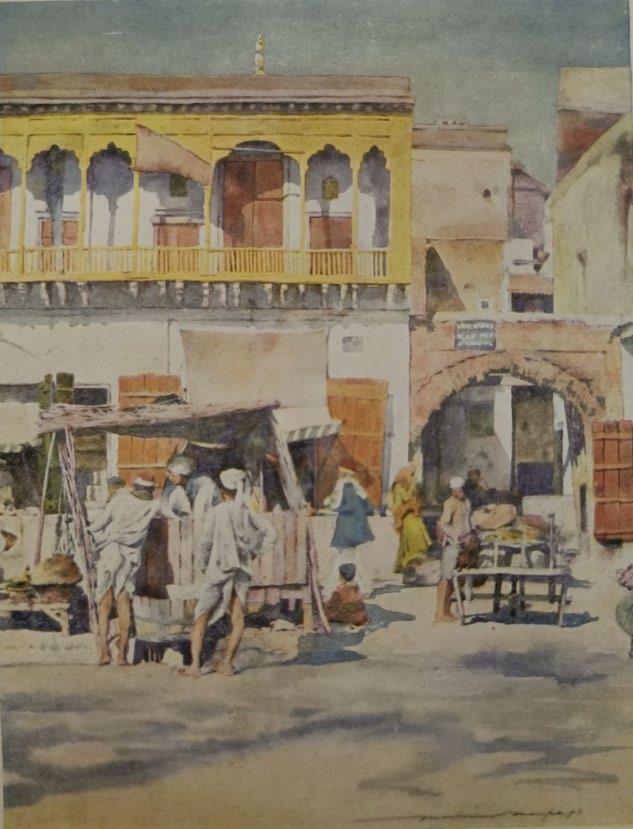
9 - A typical scene in a bazaar, from an early twentieth century painting
Around the same time as Francklin, a young man of a prominent mercantile family visited Delhi. This was Thomas Twining, second son of the founder of the tea business in Britain, that went by the family name. He did not however come to Delhi for commercial opportunities but under the auspices of the British East India Company. His personal wealth
and connections in high places enabled him to arrange the body of armed men that he needed to traverse the country that had been devastated by wars and was still beset by banditry. Arriving in Delhi he saw the same signs of neglect the others had, including that the canal that used to flow down the centre of the main streets and gardens was now dry. The lack of effective administration had caused a silting up of the canal upstream.
Twining also wrote evocatively of the people he saw in the city:
“I afterwards passed through a bazaar, in which were numbers of people, the greater part well wrapped up in white dresses descending a little below the knee, and confined round the waist by a roll of cotton cloth. Many had these dresses quilted for the winter, which now began to be felt in the keenness of the air in the morning and evening. Though white was the prevalent colour for the robes and turbans of the people, some wore printed calicoes of various patterns and colours. The sirdars and men of rank, and many even of the sircars, mahajans, and shraffs (merchants, shopkeepers, and money-changers) wore shawls of different colours and forms, but mostly long, which, descending from the shoulder, or from the head in cooler weather, crossed round the middle of the body, and met in a loose knot behind. It was in this way that I generally wore my own shawl.” 25
He noted a very particular sign of the disturbed times: “A great many of the people carried arms of some sort, generally a scimitar, or convex blade, enclosed in a black scabbard, and a round black shield, with four or five small bosses in the centre. The same lofty military air, observable in the population of Behar, Oude, the Doab, and Agra, was no less striking here.”
26
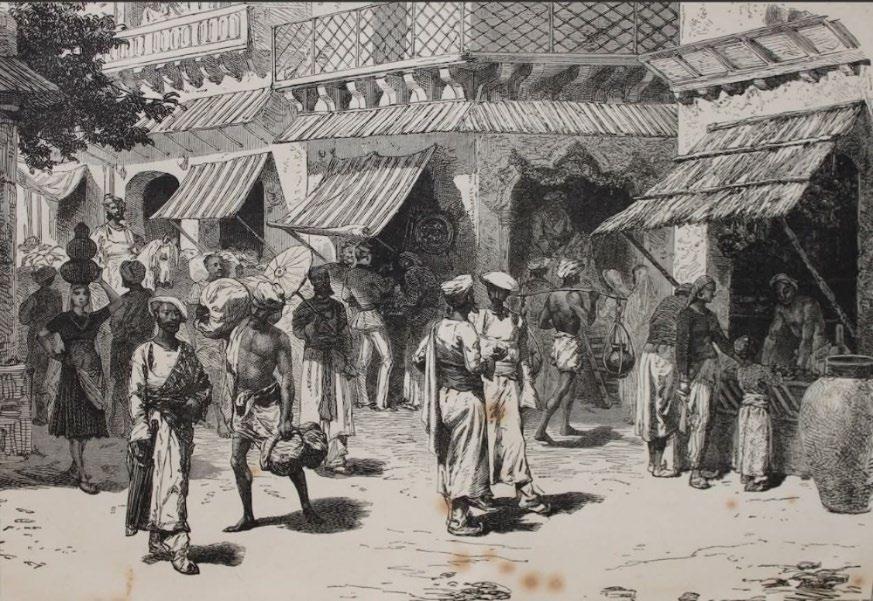
25 Thomas Twining, Travels in India a hundred years ago, James R Osgood, McIlvaine & Co, London, 1893, pp 241-242
26
Change however was imminent. Armies clashed at the gates of the city once again in 1803, but this time war would be followed by more than half a century of peace. The British East India Company had defeated the Marathas to capture Delhi and its surroundings. Indeed as the British emerged victorious in the contest over the erstwhile Mughal empire, wars largely ceased over most parts. In Delhi, though the Mughal emperor continued to live with his extended family in the Red Fort, the British were the true rulers of the city and the territory around. This change of regime made it conducive for a large number of British travellers, both official and otherwise, to visit the city.
High officials came on official tours of work, but also to see the city that had been spoken about as one of the most famed. Among the earliest was the Commander-in Chief of the British army, George Nugent, who visited in 1812, and whose wife Maria recorded the visit in some detail in her diary. Among other things, she wrote of crossing the Yamuna river opposite Shahjahanabad:
“The ford took us some way down the stream, and, as I looked back, the sight was really extremely pretty; all the elephants, the cavalry, an immense number of loaded camels, and boats filled with the infantry escort, were all on the river at the same time. The city opposite, with the sun shining on its gilt domes – the red fort and palace – the different guard all turned out – the whole staff of the district on the banks, with an innumerable number of natives, in their party coloured dresses – had a most striking appearance.” 27
Though few came with such impressive entourages, this crossing the Yamuna by boats was an experience shared by many visitors to the city. Early in the nineteenth century a pontoon bridge was added, but this was a season affair, since it could not withstand the swell of the monsoon and was washed away or taken down only to be rebuilt each winter.
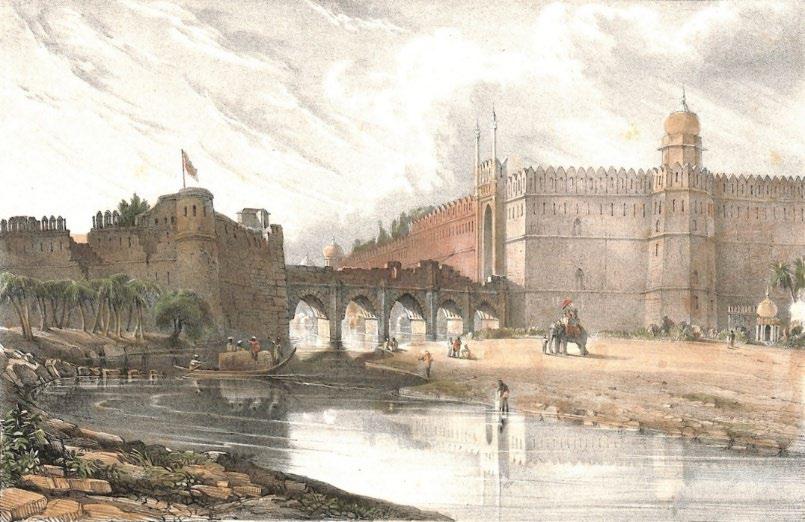
27 Maria Nugent, A Journal from the year 1811 till the year 1815, London, 1839, vol I, pp 407-08
As one observer wrote:
“I had been present at Dehli this season, in the month of July, when the monsoon set in, and had witnessed the sudden rise which took place in the waters of the river: the rains opened at nine o’clock in the morning, and before noon, the Jumna, which had hitherto been almost fordable, had overflowed its banks, and was in many places four and five miles in breadth. Away go all the boats, bridges, huts, houses and gardens, in some cases leaving the inmates scarcely time to save their persons: it is not however frequently thus, the greater part of the habitations within reach of the flood being constructed of planks and mats, which may be removed at a moment’s notice. The havoc in the melon-gardens is always a picture worth beholding; every elephant in this city, so overstocked with them, turns out to take advantage of the general spoliation, and all along the banks are seen these monstrous brutes, wading or swimming about, in search of the fruit, which they at once appropriate.” 28
This crossing of the river by boat to arrive in Delhi was an experience many travellers wrote of right down to the 1860s, when the railway and the accompanying railway bridge was built.

28 Thomas Bacon, Studies from nature in Hindostan, W.H.Allen and Co., London, 1837

From the 1820s the accounts of visitors and residents reveal quite clearly that the city had recovered from the calamities of the eighteenth century. The main bazaar streets were filled with shops selling a variety of goods. Some of these were local manufactures, such as printed and embroidered textiles, gold and silver jewellery, enamelled and set with precious stones.
29 Leopold Von Orlich, Travels in India (trans H.E. Lloyd), Longman, Brown, Green and Longmans, London, 1845
30 Captain Mundy, Pen and pencil sketches, John Murray, London, 1833, vol 1, p 363
Another novelty that was popular with European tourist was small paintings on ivory, featuring portraits as well as famous buildings. 29 They were also public spaces for flaneurs, and most prominent among the latter were men, “dressed in the most extravagant colours, with yellow slippers, their muslin skull caps stuck jauntily over one ear, and their long hair frizzed out over the other, like a black mop. If you watched their motions, you might detect knowing looks passing between them and the hundreds of ladies of no very equivocal profession, who sit in the verandahs or behind the trellised chicks of the windows smoking their little houkahs, and displaying to the passengers their thinly clad persons, well antimonied eyes, and henna-tipped fingers.” 30
The area immediately around Jama Masjid had also emerged as a lively public space space. One resident of the city, Syed Ahmad Khan, who would later became famous as an educationist and social reformer, described in great detail the bustle on and around the steps of the mosque every evening. He spoke of food vendors grilling kebabs and selling cooling drinks, other hawkers selling clothes and fabrics, or varieties of birds and animals – from pigeons to horses. This was also the place for the kind of entertainers that had in earlier times plied their trade in the square in front of the fort:
“The biggest spectacle here is of the conjurors and story-tellers. In the evening a story-teller sits here on a stool and recites the tale of Amir Hamza. Elsewhere the story of Hatim Tai, and in another that of Bustan e Khayal is being recounted, and hundreds of people gather to hear these. On another side a conjuror performs magic, turning an old person into a youth, and a youth into an old person.” 31
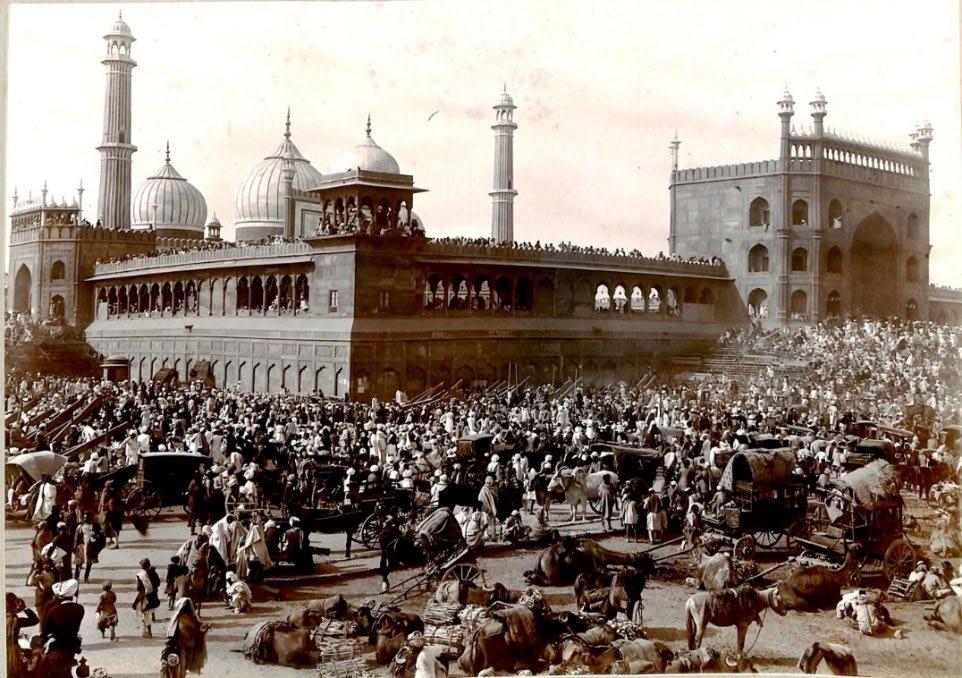
Fig. 14 - A lively scene in front of the Jama Masjid, from a major event in the early twentieth century – the Coronation Durbar of Edward VII
31 Syed Ahmad Khan, Asarussanadid, Urdu Academy, Delhi, 2000, pp 277-83 (78), translation mine
English visitors compared some of these performances to Punch and Judy shows, and also mentioned the popularity of snake charmers and jugglers, and the popularity of kite flying as a sport.
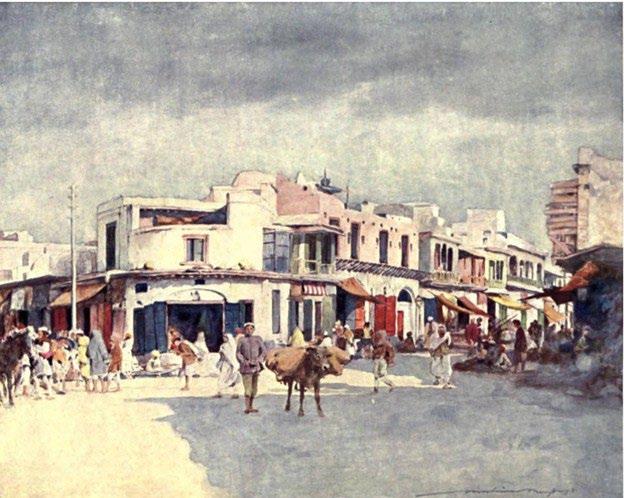


17 –
Some travellers noted an interesting characteristic of Delhi of this period – the openness to European ways and fashions. Emma Roberts, an Englishwoman from Calcutta, noted that nowhere in North India outside of Bengal had she seen so much of a desire to embrace European architecture, clothing, furniture, etc. She noted that many houses had Grecian piazzas, pediments and porticos on their facades. On the main street one could seen several English carriages, with alterations made to suit the climate and Indian tastes. The occasional
33 Emma Roberts, Hindostan illustrated, Fisher, Son and Co, London, vol II; Emma Robert, Scenes and characteristics of Hindostan
man, notably Prince Babur, the second son of the emperor Akbar II, had also taken to wearing European clothes. She noted that not only were the shops filled with European products, they also had sign boards with the names and specializations of their proprietors in Roman letters. Moreover, European visitors would often be greeted on the street by respectable-looking city folk in English – with a ‘good morning’ or ‘how do you do?’
33 The cosmopolitan spirit of the era of Shahjahan and Aurangzeb had clearly survived the devastation of the eighteenth century.



Fig. 20 - The Chandni Chowk street in 1860s. Some European style architecture can be seen, but also by this time the central water channel had been covered over
Like many others who described the city, Emma Roberts remarked on the bustle of the bazaar, the crowds on foots, or in different sorts of vehicles, the colourful attire, but also very vividly the smells and sounds; writing of the fumes of cooking with garlic and other pungent ingredients that almost overpowered the senses, and of
“The cries of the venders of different articles of food, the discordant songs of itinerant musicians, screamed out to the accompaniment of the tom-tom, with an occasional bass volunteered by a cheetah grumbling out in a sharp roar his annoyance at being hawked about the streets for sale, with the shrill distressful cry of the camel, the trumpetings of the elephants, the neighing of horses, and the grumbling of cartwheels, are sounds which assail the ear from sun rise until sunset in the streets of Delhi.” 34
Emma also brought to her descriptions some insights that might have been a product of her gender. For instance she commented on one common feature of the houses on the streets and correctly linked it to very specific domestic practices:
“The houses are, for the most part, white-washed, and the gaiety of their appearance is heightened by the carpets and shawls, strips of cloth of every hue, scarfs and coloured veils, which are hung out over the verandah or on the tops of houses to air, the sun in India being considered a great purifier, a dissipator of bad smells, and even a destroyer of vermin”. 35
Women did bring some unique perspectives to their accounts and observations, and in the first half of the nineteenth there were several English women who came to Delhi and left behind their memoirs. The most interesting of these women was Fanny Parks, the artist wife of a mid-ranking Company official. Fanny was an inquisitive and intrepid traveller, open to new experiences. In Delhi she visited the usual historical sites, spent time visiting the women of the Mughal royal family in the palace. She also ventured into the poorer parts of town, away from the glittering lights of Chandni Chowk. One such visit was to the mosque popularly known as Kali Masjid, a fourteenth century mosque close to the southern periphery of Shahjahanabad:
“In the evening, we drove to the Turkoman gate of the city, to see the Kala Masjid or Black Mosque. We found our way with difficulty into the very worst part of Delhi : my companion had never been there before, and its character was unknown to us ; he did not much like my going over the mosque, amid the wretches that surrounded us ; but my curiosity carried the day….. I wished to sketch the place, but my relative hurried me away” 36
Others, less intrepid, were content with exploring the more obvious monumental sites, such as the Jama Masjid. This congregational mosque of the city was manged under the supervision of the emperor himself, but tourists could visit it. Many also climbed the minarets, which provided a panoramic view over the city. One visitor, Helen Douglas Mackenzie, the wife of an army officer, went up on the roof, which gave her a view of life on the rooftop terraces of the houses around. She commented on one sight in particular:

21 -
34 Emma Robert, Scenes and characteristics of Hindostan , W.H. Allen, London, 1835, vol III, pp 173-74
35 Ibid, vol III, p 172
36 Fanny Parks, Wanderings of a pilgrim in search of the picturesque, Pelham Richardson, London, 1850, vol II, pp 221-22

Fig. 22 - Kalan Masjid, some decades after Fanny Parkes visited it
“Close beneath us (we) saw a sport for which Delhi is famous. On the roof of several houses were men waving little flags to make their flock of pigeon fly, while elder men sat gravely by, smoking. A large hurdle was fixed on the roof for the pigeons to alight upon. When they meet another flock in the air the two parties mingle, and one invariably carries away some from the other. Each flock then returns home, and the owner who has gained some of his neighbour’s birds, goes to him and threatens to sell them if they are not ransomed. It was very pretty to watch two, three, and sometimes four flock of these beautiful birds, of all colours, meeting, mingling, and then parting again.” 37
Helen also participated in another spectator sport of Delhi – watching a wedding procession:
“About five o’clock we drove to a house in the Chandi (sic) Chouk, belonging to one of the native sub-collectors, a Mussalman, who had prepared seats for us, whence we could see everything. The Chandi Chouk is a double street, divided down the middle by a stone watercourse, the edges of which were crowded with people. The procession was passing down the side furthest from us, and turning at the top of this immense street, it paraded before the bride’s house, which was a little way above us, and then came close under our windows. It was more than a mile long! The balconies and flat roofs of the houses, which are generally low, were covered with people; here was a variegated group of men and children, there a bevy of shrouded Muhammadan women, the first I have seen, and the appearance of the crowd was that of a bed of tulips.” 38

Fig.
23
- Procession from Edward VII’s Coronation Durbar in 1902
Helen Mackenzie, like all Europeans referred to the whole street from the fort to Fatehpuri masjid as ‘Chandni Chowk’. This was a new phenomenon of the nineteenth century, and was probably the result of a misunderstanding – the newcomers not understanding that ‘chowk’ was the name only applied to the square. In any event it was probably encouraged by shopkeepers on the street who were happy to embrace this, as it gave them a piece of the reflected glory of the original Chandni Chowk, the royal square still owned by the emperor. The practice therefore, stuck.
The first half of the nineteenth century was a period of prosperity as well as cultural efflorescence in the city, the heyday of poets such as ‘Ghalib’, ‘Momin’, ‘Zauq’, and ‘Zafar’ –the emperor Bahadur Shah. This era was unexpectedly brought to an abrupt close by another calamity that hit the city. In May 1857 a revolt against British rule broke out, and soon spread through large parts of North and Central India. It was centered in Delhi, and at its head was Bahadur Shah. After four months or so however the British forces managed to retake the city, and in the aftermath, exacted a heavy revenge on the people. Captain Charles Griffiths, part of the conquering army, described the scene:
“The portions of the town we passed through on that day had been pillaged to the fullest extent. Not content with ransacking the interior of each house, the soldiers had broken up
37 Mrs. Colin Macenzie, Life in the mission, the camp, and the zenana, Richard Bentley, London, 1853, vol 1, pp 162-63
38 Ibid, pp 179
every article of furniture, and with wanton destruction had thrown everything portable out of the windows. Each street was filled with a mass of debris consisting of household effects of every kind, all lying in inextricable confusion one on top of the other, forming barricades from end to end of a street -many feet high. We entered several of the large houses belonging to the wealthier class of natives, and found every one in the same condition, turned inside out, their ornaments torn to pieces, costly ' articles, too heavy to remove, battered into fragments, and a general air of desolation pervading each building.. …..Dead bodies of sepoys and city inhabitants lay scattered in every direction, poisoning the air for many days, and raising a stench which was unbearable. These in time were almost all cleared away by the native scavengers, but in some distant streets corpses lay rotting in the sun for weeks” 39
The Revolt and its aftermath finally extinguished the remnants of the Mughal empire, with the exile of the last emperor, Bahadur Shah, to Burma. All royal properties were confiscated, and many were demolished – among these was the original square called Chandni Chowk, and Jahanara’s sarai. An area four hundred and fifty yards wide around the perimeter of the fort was cleared of buildings, to provide security to the army that was now quartered in the fort. The poet Ghalib wrote to a friend:
“The city here is being demolished. Extensive, famous markets–Khas bazaar, Urdu bazaar, Khanam ka bazaar, such that each was a small town in itself; now no one can tell where it was located. The owners of shops and houses cannot point out the spots where their properties stood.” 40

24 - The area in front of the Jama Masjid, cleared of buildings
39 Charles John Griffiths, A narrative of siege of Delhi, 1857, John Murray, London, 1910, pp 198, 201
40 Khaliq Anjum ed., Ghalib ke Khutut, New Delhi 1985, vol 2, p 607 (translation mine)
Equally devastating for the life of the city were the cultural losses. The extinguishing of the Mughal court, the death or exile of many of its citizens, particularly people of talent and culture, were blows to the character of the city. Ghalib wrote to a friend bemoaning the changes,
“What are you asking? What can I write? The being of Delhi was essentially centered on a few excitements–the Fort, Chandni Chowk, the daily bazaar in front of the Jama Masjid, the weekly gathering at the Yamuna bridge [there used to be a mini-fair at the bridge that had been built by the British across the river], and the yearly festival of the flower sellers [a festival sponsored by the royal family]. None of these five are there, so say, where is Delhi? Yes, there was once a city by this name in the territory of India.” 41
Shahjahanabad recovered from this catastrophe too. People, spaces and institutions, some old and some new, brought the city slowly alive again, though it was now stamped more thoroughly with a British colonial character. Jahanara’s Chandni Chowk and the adjoining sarai had been demolished. New structures came up in their place and the large garden behind was re-landscaped and renamed. The railway came to Delhi in the 1860s and added to the changed landscape. A popular tourist handbook described the new character thus:
“The visitor will pass repeatedly through the Queen’s Gardens, which lie between the railway and the Chandni Chauk. These are well laid out with beautiful trees and shrubs, and abundant water from a branch of Ali Mardan’s Canal. There is a small collection of wild beasts. The fine building facing the Chauk is the Institute, which contains the station library, a reading-room, the municipal-offices, a museum, public-hall, and a pleasant suite of rooms, used for dances and other social reunions of the English residents. Visitors find admission to all its privileges easy enough, through their bankers or any resident European…… There is a fine clock tower opposite, in the Chandni Chauk, 128 feet high.” 42
Tourists came in ever larger numbers to Delhi, to see the remnants left behind by the Mughal and other dynasties that had ruled from not just Shahjahanabad but the many other capitals that constituted ‘Delhi’. A significant number, particularly the British, also came to visit the sites that were associated with the revolt of 1857. One such visitor, who was in Delhi on the fiftieth anniversary of the Revolt wrote:
“In Delhi an Englishman is treated with more respect than in places further south. Policemen salute when he passes and natives salam and move off the foot-path.
The horrors of the Mutiny are not forgotten in Delhi; and the common people there are very much afraid of an Englishman.” 43
The average tourist was too busy to notice this. Busy not only seeing the monumental historic sights, but buying the many arts and crafts the city was still famous for in the early twentieth century. Visitors often made special appointments to visit the shops of merchants
41 Ibid, pp 514-15
42 W.S. Caine, Picturesque India, George Rutledge and Sons, London, 1890, p 128
43 John Law, Glimpses of hidden India, Thacker, Spink and Co, Calcutta,
that had been recommended to them by their guide books or hotels. Many vendors even came to the hotels, of which there were now several.

Chandni Chowk was no longer described by the visitor as the typical ‘Eastern bazaar’. The dandies lounging and flirting with courtesans, the bright and varied wares in shops, the variety of vehicles on the streets, are not the subject of the later travelogues. Shahjahanabad had changed of course, but also perhaps the gaze had changed. Frederick Treves, a renowned surgeon, looked at the commonplace in the bazaar, leaving behind an evocative description particularly of those whose daily lives were spent for most part on the street itself:
44 Frederick Treves, The other side of the lantern, Cassell and company, London, 1918, pp 53-54
“The dweller in the bazaar lives in the street, coram populo [in public] and his inner life is generously laid open to the public gaze. In the morning he may think well to wash himself in front of his shop, and to clean his teeth with a stick, while he crouches among his goods and spits into the lane. He sits on the ground in the open to have his head shaved, and watches the flight of the barber’s razor by means of a hand glass. The barber squats in front of him, and from time to time whets his blade upon his naked leg. The shopkeeper will change his clothes before the eyes of the world when he is so moved. He also eats in the open, and after the meal he washes his mouth with ostentatious publicity and empties his bowl into the road.
Every phase of the fine art of cooking with a suppression of no detail can be witnessed by the lounger in the bazaar. At the same time he can note how the Indian woman washes
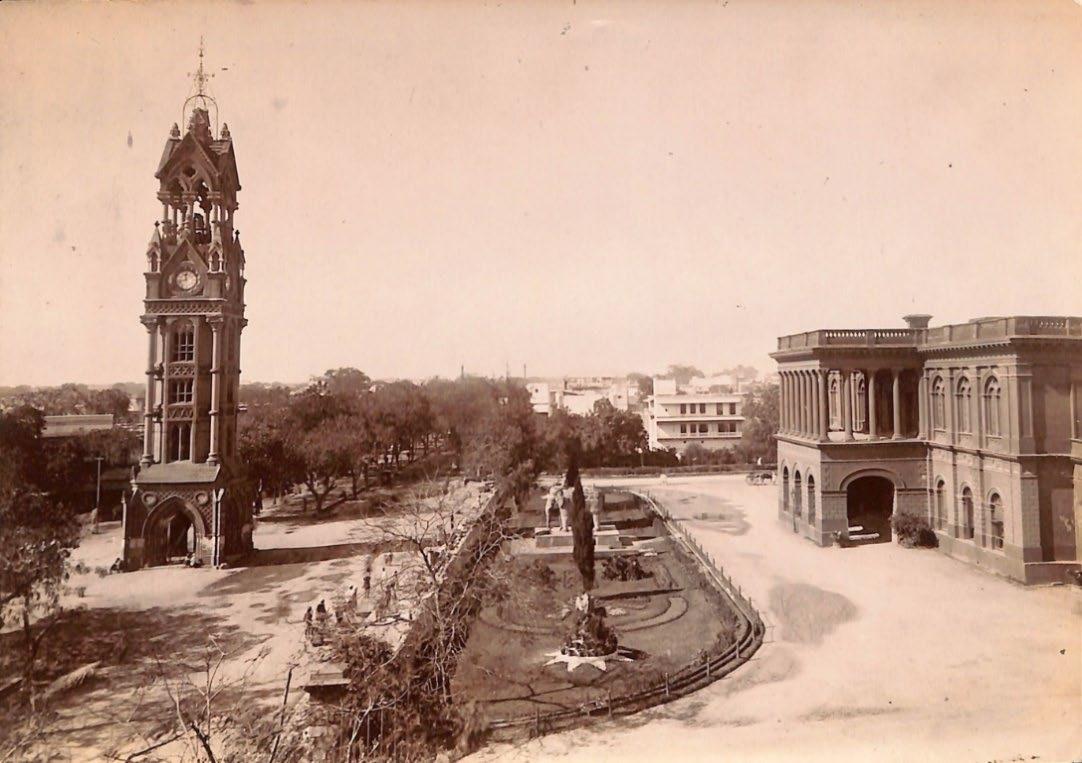
26 -
her head, by wetting it and rubbing thereon the dust from under her feet. Indeed, in the bazaar, life is seen in its nakedness. There is little that is hidden from the gaze of the curious. There is no suggestion of keeping up appearances, nor is any effort made to practise crude social deceptions. The mysteries of the household are as bluntly laid open as are the apartments of a doll’s house when the front of the establishment is thrown wide by a delighted child. There are deeper shadows in courtyards and mean entries and behind hanging mats which the eye cannot penetrate, but if among the gloom there is the holy of holies of the Indian home, it may well be left in mystery.” 44

Fig. 27 - A street scene of the early twentieth century
The Shahjahanabad that Treves described was on the brink of fundamental changes. In 1912 Delhi became the capital of India, the British having decided to move their seat in India away from Calcutta. This brought new development to Delhi, but Shahjahanabad was marginalised in the process. A new capital, New Delhi, began to be built south of Shahjahanabad, and took nearly two decades to complete. In the meanwhile, the government functioned from a temporary capital that came up north of Shahjahanabad. While all the administration’s attention was on the new areas, Shahjahanabad’s civic infrastructure began to be neglected. The increasing deterioration of amenities and upkeep prompted many of the better off inhabitants to move out of the city to these new areas.
More changes came with the independence of the country from colonial rule in 1947. This was accompanied by the country’s partition into two countries, and a resulting upheaval in the form of translocation of large populations. Delhi was significantly affected by this as
many Muslims left and many more Hindus and Sikhs came in. In the few years following the Partition, Delhi’s population nearly doubled. The reason for this was simple – those migrating into the country were drawn to this large metropolis, which offered so many more opportunities than smaller towns.
This sudden influx of population needed to be housed, and the government undertook to provide housing in the form of many residential ‘colonies’ that were developed, mostly to the west and south of the existing twin cities of New Delhi and ‘Old Delhi’ – as people had now begun to refer to Shahjahanabad. The new migrants however did not just need housing, they needed livelihoods. In particular there were those who wanted commercial property in the form of shops, but wanted these in the heart of the city and not in the still new outlying developments. One of the solutions found was in the many havelis that were now vacant in Shahjahanabad, since the departure of their inhabitants to Pakistan. These were converted into commercial spaces – katras.
Almost overnight the character of Shahjahanabad changed from a substantially residential space with some important bazaars, into a much more commercial district. With the passage of years this trend has only intensified, until today it often seems that all of this historic neighbourhood is one big bazaar. It is therefore understandable why in popular parlance all of Shahjahanabad has now been subsumed in the name of its most famous square –‘Chandni Chowk’. Modern developments such as the metro have facilitated this too. The Metro not only brings shoppers from distant parts of the city, but also enables those who work in shops and other establishments to live outside the neighbourhood, and only come in the morning to open their businesses.
Visitors to Chandni Chowk today see a bit of what every visitor has seen in the city down the centuries. The bustle of crowds, the variety of different kinds of transport, the busy eating places, and the glitter of the shops, is all still there. People still come to see all of this, though today they record their impressions most commonly in ‘reels’. There is much that is picturesque in Chandni Chowk. Hence the reels. The look and feel seems colourful and exciting, and different, even from other parts of Delhi. Those who read history look with nostalgia at what was once one of the most famous cities of the world. They may see the recently landscaped main street and see in its middle a symbolic re-creation of the channel of water that once flowed there. They may see and admire the finely carved doorways that still survive on many house fronts in many streets. They may have visited the interiors of many of its historic buildings – the Red Fort and Jama Masjid certainly, but also the several other places of worship.
I would like to share with them what I see in Shahjahanabad. I see the narrow streets for what they tell me of a city planned many years ago, that still works well. Twining, writing two and a quarter centuries ago, had spoken of houses being “built in lanes near to each other, for the sake of shade” 45, and I am still thankful when I walk in these narrow shady alleys. These narrow streets were not built for motorised transport but for a city that could be traversed from one end to the other on foot. They were built for a slower pace of life, literally
45 Twining, Travels in India, p 252
and metaphorically. The doorways of the old houses are flanked by stone seats, where one may sit and exchange a few words with a neighbour or a passer-by.

28 - The Naya Jain mandir, built in 1807
The houses are built close to each other but they are not claustrophobic. Their inner courtyards provide private open areas for a piece of the sky, air and light. The rooftop terraces are semi-public places where one might talk to or even go visit ones neighbours without having to step into the street. They are also places for the ever rarer pigeon keepers, and for kite flying contests. Balconies provide a window into the world without, and one’s own private viewing platform for goings-on in the street.
The broad main streets, once built for royal processions, are still used for this purpose, though the processions are now mainly religious ones. The ‘Chandni Chowk Road’ is testament to the multi-cultural history of the city – with its Jain and Hindu temples, mosques, church and gurudwara. Commerce is an important part of Shahjahanabad’s streets, and many of the specialist markets have a history nearly four hundred years old too – the spice market of Khari Baoli, the jewellers’ street known as Dariba Kalan, and the tinsel and spangles market of Kinari Bazaar.
These are integral parts of the city that need to be preserved. Not simply because they are old, or beautiful; but because they hold in them the spirit of a particular way of life. Shahjahanabad has always been a place where people have lived in close proximity with their neighbours – whether poor or rich, largely irrespective of their religious or ethnic identities. It is the form of these narrow streets, courtyard house with their rooftop terraces and open porches, that support this neighbourliness. The o pen bazaar streets which provide room for those who have nowhere else to live, represent an inclusive ideal, that does not prioritise a sanitised neatness over humanity.
The physical structures as well as the ways of life they foster are today being lost at an alarming rate. It seems that every day an old haveli is demolished, to be replaced by a solid block of a commercial building or a block of flats. I wonder if a time will come when each of those courtyards will be erased, and all of Shahjahanabad will be uninterrupted concrete construction, separated only by the narrow lanes? And then, how long will it be before someone says that those narrow lanes have become unsustainable and therefore a more thorough redevelopment is required?
The spirit of the old bazaars is being violated, not only by modern showrooms but by the recent addition of a mall, ironically called ‘Chandni Chowk’. Some of the bigger businesses of the district are moving in, but most of the small shops and eateries will never be able to afford the rents of such a place, while they will face competition from it. People will still come to eat and shop I suppose, in a mall that calls itself Chandni Chowk, but will they be content with a pretence and a travesty of what Chandni Chowk was?
How long can Chandni Chowk/Shahjahanabad retain its very distinct character, and should we even try to preserve it? I think we can, and we should. The argument for preserving the old street plan and historic structures goes beyond a nostalgia for the past. It is time we realise that a sensitive conservation and upgradation of the historic fabric of Shahjahanabad can not only enhance the quality of life of those who live and work there, but can be a powerful tool for the generation of livelihoods. Many great historic towns and cities around the world have used their heritage as an asset to attract tourists, who do not come simply to see ‘monuments’, but to spend time in historic districts, and to imbibe their very distinct flavours.
Chandni Chowk can be such a place – a neighbourhood where more people would like to live, and to visit and spend time in. It needs a vision that takes into account the very particular features of this historic city. For instance, Shahjahanabad needs special building regulations that not only preserve old buildings, but ensure that new constructions do not violate the essential character of the haveli model – for instance the existence of courtyards. It needs a fiscal regulatory framework that enables owners to get easy loans to restore old buildings, rather than incentivising redevelopment. It certainly needs upgrades to its civic infrastructure that go beyond the superficial aims of ‘beautification’. These measures can create a place that enhances the lives of residents and attracts visitors.
Three Lenses, Many Histories: Photographing the Old City (Abstract)
Colorful, chaotic, congested Chandni Chowk has been a favorite subject of photographers shooting in Old Delhi. The diversity of photographic approaches to this vibrant place is truly enlightening. Senior modernist Raghu Rai frames Chandni Chowk as a place of devotion, emotion, and survival. On the other hand, Raghubir Singh, one of the pioneers of color in photography, focuses on crowded bazaars. Mother Mahata has taken an architectural approach in black and white to the chronicle of Chandni Chowk. Contemporary artist Atul Bhalla has taken an entirely different approach. His conceptual works approach the city with a question of water availability and ecology.
The three photographers featured in this book —Harvey Stein, Margarita Mavromichalis, and Umesh Gaur —present three distinct ways of seeing Chandni Chowk, each in a complementary style of photography. Stein's environmental portraits are theatrical, layered, and symbolic, offering a unique perspective on the city. Mavromichalis's immersive images show gesture, spontaneity, and vitality, providing a fresh and intriguing view. At the same time, Gaur's images are steadier and more archival in style, yet his perspective is equally captivating. Having photographed in Chandni Chowk for over 50 years, his work is an attempt to document rapidly transforming everyday life in the old city for future generations.
This essay presents a comparative analysis of the work of these photographers, focusing on their unique styles, the themes they explore in Chandni Chowk, and the impact of their work on the field of urban photography.
Author: Carol Huh
1500 words + about 10-15 images.
Chandni Chowk: A Photographer’s Paradise
Chandni Chowk is a photographer's dream. The hustle and bustle, the colors, the smells of the streets, the bazaars, and the vibrant havelis of Chandni Chowk can be overwhelming on first encounter. Life at its chaotic best is lived on these streets, day in and day out. It is also a place that can overwhelm you and throw you into a dazzling storm of colors and sounds. Yet, within the chaos lie the kernels of beauty that the passionate, intrepid photographer can discover through patience, persistence, and resilience.
What truly distinguishes Chandni Chowk, in addition to its rich history, is the genuine warmth and openness of its people. Regardless of their busy schedules, the shopkeepers we photographed always made time to offer us chai. The artisans graciously opened up their workshops. The vendors were more than willing to be photographed, often pausing mid-task to strike a pose, as if life itself were a stage. We formed deep connections with many of these individuals, visiting them multiple times to capture their moods and emotions. They are not just subjects in our photographs; they're also in our hearts.

As we, Harvey, Margarita, and I, wandered through the vibrant lanes of Chandni Chowk, we did so without a fixed plan. Instead, we allowed the city and its people to be our guides, leading us into havelis, bazaars, temples, workshops, and iconic eateries. Harvey, a portrait photographer par excellence, was not just capturing appearances but the very essence of a person in a single frame. Margarita, with her
captivating smile, would often walk into a stranger's home and emerge with stunning portraits, her camera reflecting the warmth of newfound friendships. As for me, I found myself immersed in the bazaars and streets, trying to capture the fleeting moments that told stories in a glance, a gesture, a burst of laughter.

Photographing Chandni Chowk requires more than just technical skill. You don't control the moment; you wait for it to unfold. The place is chaos at its most beautiful. Every street presents its own possibilities, and you never know what you might capture next. Every face hides a story, and it's up to you to reveal it. Every corner bursts with life, and if you give it your time, your passion, your curiosity, everything falls into place, and you get an extraordinary image that takes your breath away. The thrill of the unexpected is what makes Chandni Chowk such a photographer's paradise.
The Iconic Markets of Chandni Chowk
Chandni Chowk is a collection of markets, each with its own personality. From the bustling lanes of Kinari Bazaar selling wedding goods, to the intense smells of spices in Khari Baoli, to the maze of shops specializing in sanitary hardware in Chawri Bazaar, to the iconic book market at Nai Sarak, these markets are the heart of Chandni Chowk's busy life.
The origins of these markets go back to Jahanara Begum, the daughter of Emperor Shah Jahan. In the seventeenth century, she commissioned the octagonal chowk in front of what is now the Town Hall. This central square became so renowned that, over time, the entire street on which it stood came to be called Chandni Chowk, a name that today often refers to much of Old Delhi itself. Traders from across the world were drawn here, bringing silk, spices, perfumes, and jewels to a marketplace that thrived under royal patronage and was frequented by the Mughal court.
Over the centuries, these markets have evolved into specialized areas of trade and expertise, where people, not just from Delhi but from various parts of the world, continue to come to shop. The same family has owned and operated some iconic shops for generations. Many are tiny, tucked within narrow winding streets. Still, within them, you encounter the skills, pride, and traditions of people who run them. Whether it is zari borders, books, perfumes, or light fixtures, many shopkeepers have been selling the same goods for decades.
What is most remarkable about Chandni Chowk's markets is the human connection between seller and buyer. Shopkeepers often know their customers by name. They never rush the buyers, and the deals are made over chai and friendly chats, as if commerce itself were an excuse for companionship.
Most of these markets are embedded in crowded, narrow lanes that are inaccessible to cars and trucks. Consequently, the goods are moved in and out of the lanes in the old-fashioned way. Thela Wallahs (men pulling wooden carts) and porters carry large bundles seamlessly through the crowds. These are the workers who make these markets function. They move everything from wedding clothes to electrical supplies. Still, they are rarely acknowledgedtheir labor woven invisibly into the fabric of the bazaar.
Each market, besides having a specialty, has its own rhythm, its own sounds, and its own character. Together, they create a lively, colorful world where you shop the old-fashioned way by touching, seeing, smelling, and negotiating.
Kinari Bazaar: Where Indian Wedding Dreams Begin
Indian weddings are grand affairs, often spanning several days, and sometimes even weeks. Several traditional rituals, parties, and celebrations precede the main wedding day. All of these events require a special outfit; it is customary for wedding guests to acquire several
new outfits for these occasions. This trend is also spreading across the Indian American community in the U.S. Nowadays, the parents of the bride and groom frequently travel to India to purchase wedding outfits, not just for the bride and groom, but also for members of their family and friends. For many, the first stop is Kinari Bazaar in Chandni Chowk.
Kinari Bazaar is the oldest and most famous wedding market not only in Delhi but in all of India. You can find every imaginable trim, lace, and embellishment used to decorate traditional Indian formal clothing. For generations, brides, grooms, tailors, and designers have made their way here to get zari and gota laces, sequins, beads, velvets, brocades, tassels, and more to design custom outfits for weddings. The market is filled with small shops, each glowing with its specialty. There's even a store entirely dedicated to buttons, a universe contained in a single detail.
A few years ago, I went to Kinari Bazaar with my brother and his wife, Swati, who was putting together her outfit for an upcoming wedding. As we stepped into the bazaar, it felt like entering a world that shimmered and sparkled. Swati visited many shops in search of the perfect hand-embroidered border, glittering sequins, and special buttons. Every shopkeeper was proud to show us their collection. Everything was so beautiful, gold-stitched lace, pearl buttons, presenting a limitless selection of adornments. Brides-to-be, fashion designers, tailors, and families all come here with the same goal: to find that one right embellishment that will make their outfit special.
While I took photographs, my brother and sister-in-law picked out fabrics, trims, sequins, and buttons. Each item was thoughtfully matched and chosen so that her outfit gradually came together - built from the treasures of Kinari Bazaar.
Visiting Kinari Bazaar is more than just a shopping trip. For some families, it is itself one of the wedding rituals, a prelude shimmering with anticipation.
Khari Baoli: The Heart of India's Spice Trade
I moved to the U.S.in the 1970s, when the Indian immigrant community was still small and finding Indian groceries was a real challenge. I remember driving over 100 miles to Queens, New York, to buy a few basic spices. Today, in New Jersey, where we live, there are hundreds of Indian grocery stores. You can find almost everything now. But if you're looking for the brightest red chilies, the creamiest cashews, or the freshest spices, there's one place you must go: Khari Baoli in Chandni Chowk.
Khari Baoli is Asia's largest spice and dry goods market. Everywhere you look, there are sacks and piles of spices: turmeric, cardamom, cumin, saffron, nutmeg, dried rose petals, and more. The air is thick with fragrance sharp, sweet, pungent, earthy all layered into an
invisible tapestry. Kashmiri almonds, Afghan apricots, Iranian pistachios, and giant, flavorful cashews from South India flood the street. Walking through the lanes, one sees red chilies stacked high, yellow lentils in baskets, rare Ayurvedic herbs, and blocks of asafetida. Traders shout out prices, buyers bargain, and thela wallahs and porters weave through the crowds.
I am most impressed by the stores that specialize in just red chilies. They offer chilies that range from mild to ultra-spicy, each providing a unique sensory experience. Some vary in fragrance, adding another layer of intrigue to their appeal. Others even impart a different red hue to dishes dark ruby or glowing orange-red. The large mounds of these dried red chilies, sitting directly on the floor, are a sight to behold. They glow like heaps of burning embers, with their wrinkled skin catching the light to create a visual spectacle, a treat for the photographer's eyes.
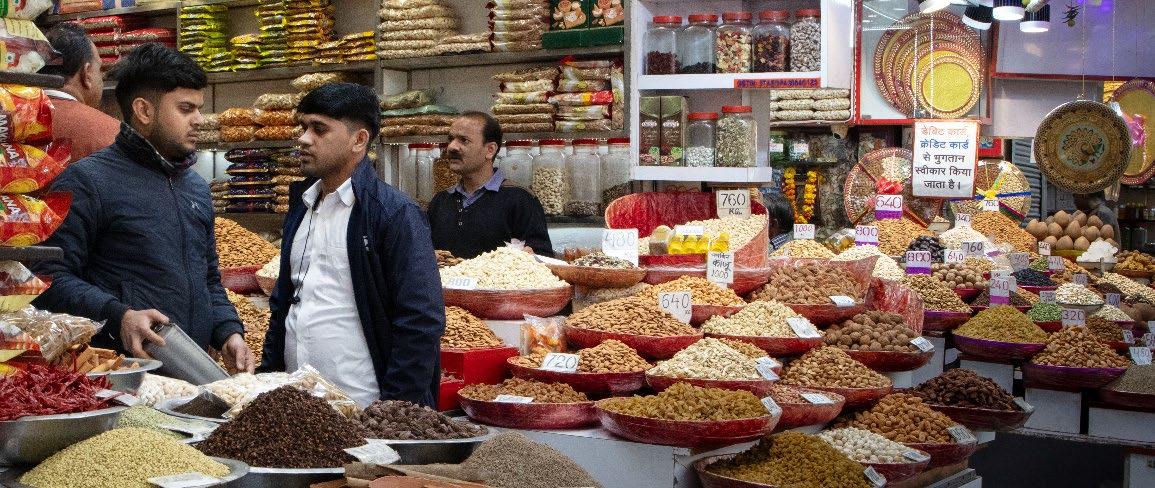
One special aspect of Khari Baoli is its unusually wide main road, something rare in the Chandni Chowk area where most streets are narrow. The market, established in the 1600s during the Mughal era, expanded quickly, with carts laden with goods and caravans that came via the overland route that is now known as the Grand Trunk Road. Some say the road was widened by demolishing buildings and pushing them back, but this has never been reliably established. What is beyond doubt is that Khari Baoli grew into the great artery of the spice trade, carrying an unstoppable tide of aromas and commodities into the city.
What makes Khari Baoli truly special isn't just the people who know the trade inside and out, but the way a single sniff can tell them everything about a spice. It's the smell of fresh spices clinging to your clothes, the sense of history that lingers in the air, that makes it an unforgettable experience, as if you are walking through the very soul of India's kitchen.
Dariba Kalan: Chandni Chowk's Street of Silver and Scents
Stepping into Dariba Kalan is like entering a time capsule. The street, which translates to 'Street of Incomparable Pearls,' was established in the early 1600s during the Mughal era. It served as a bustling hub for jewelers, gem traders, and goldsmiths, catering to the royal jewelry trade. The jewelers of Dariba were also the bankers of the Mughal empire and they offered their best gems to the royal family, frequently visiting their royal patrons in the Red Fort.
The market continues to thrive today in silver jewelry. While there are some larger jewelry showrooms, you see mostly small jewelry stores selling silver chains, nose rings, toe rings, anklets, and ornaments for weddings and festivals. Many small shops also specialize in imitation bridal jewelry at affordable prices. These shops are popular with brides-to-be and families preparing for weddings. You often see brides-to-be holding up earrings next to a lehenga photo, trying to find the perfect match for their big day.
Dariba was once a thriving center for Delhi's goldsmiths, who were commissioned to make ornaments for the royal families during the Mughal era. Today, their handmade traditional ornaments are considered old-fashioned, as younger Indians now prefer machine-made branded jewelry from modern showrooms. Yet, amidst this shift, you see a few old -timers still practicing their craft in Dariba Kalan, working with tiny hammers, files, and blowtorches to create custom-made ornaments.
In addition to silver traders, many shops in Dariba Kalan sell traditional ittar (perfume) and oils. These shops are filled with small glass bottles of natural perfume oils. The fragrance of rose, jasmine, sandalwood, and even a potent, spicy blend called shamama lingers in the air. I picked up a small bottle of attar as a keepsake, reminding me of my mother, who always kept a few of these little bottles on her dressing table.
Ballimaran: A Walk Through Verse and Style
Ballimaran, the neighborhood that once housed India's most cherished Urdu poet, Mirza Ghalib, is a living testament to his enduring legacy. His humble haveli, now transformed into a museum, stands as a reminder of his immortal verses.
Long ago, this area was home to Muslim families who worked in small trades making shoes, stitching clothes, repairing glasses. Today, the market is still filled with small, family-run shops that sell shoes, sunglasses, and bags. Among glittering juttis, leather sandals, knock-off sneakers, you also find cheap fashion shoes stacked high in pyramids outside tiny shops. There are endless shops selling spectacles, frames, and sunglasses, displayed neatly in glass cabinets that resemble walls of mirrors.
Walking through Ballimaran with my brother-in-law, Sudhanshu Mani, was a profoundly personal experience. He is a lover and self-taught scholar of Ghalib's poetry. He recently wrote a book comparing the works of Ghalib and Shakespeare and has even created and acted in a musical about Ghalib that has toured many cities. He's also known across India as the pioneer who led the development of the Vande Bharat modern trains, ushering in a new era of high-speed rail across the country. I photographed Sudhanshu in Ghalib's Haveli, dressed as Ghalib, wearing a Mughal-style hat and long coat, his expression calm and thoughtful as he quietly took in the moment.
Nai Sarak: The Literary Spine of Chandni Chowk
Built after the uprising of 1857, Nai Sarak has exuded a unique charm, attracting book lovers, teachers, students, and publishers, for textbooks and stationery. Its shelves are adorned with religious books, test preparation books, and even rare and old publications. These stores also offer a treasure trove of used books and calligraphy supplies. The allure doesn't end there;
this is also where you can find handmade paper, fancy gold-edged bookmarks, and collectible pens.
As I strolled through Nai Sarak with my camera, a flood of childhood memories washed over me. I vividly recall the excitement of a new school year when my mother and I visited this market to buy our textbooks. The shopkeeper would bundle them together with jute string, and we would carry them home, brimming with anticipation, to explore the fresh pages and discover what we would be learning the following year.
The pace in this market is slower than in some other parts of Chandni Chowk. Students compare notes and prices, parents bargain with shopkeepers, and readers quietly search for hard-to-find titles. Shopkeepers know their books well and can quickly find what you need even from stacks that seem impossible to sort.
In an era dominated by online shopping and e-books, Nai Sarak stands as a testament to resilience. It continues to thrive, unwavering in its commitment to being the literary backbone of Chandni Chowk.
Chawri Bazar and Kucha Chelan: Echoes of Craft
In India, a wedding card is more than just an invitation mailed to its intended recipients. Families traditionally deliver the cards in person to friends and relatives along with dry fruits and sweets. The card designs vary from simple to elaborate, consisting of intricately decorated, multilayered cardboard boxes that reflect the theme of various wedding events.
A few years ago, I went to Chawri Bazar with my sister and niece, as they were looking for a wedding invitation card for my niece's upcoming wedding. We saw displays of cards ranging from a classic and straightforward printed card to elaborate boxes that resembled miniature treasure chests covered in embroidered silk fabrics. Some boxes had multiple compartments to include sweets, dry fruits, or artisanal chocolates as a token of sharing joy while adding sweetness and hospitality to the invitation. My sister chose a boxed card that wasn't just an invitation; it was an experience. It had multiple inserts, each an invitation for wedding events such as Mehendi, Sangeet, Reception, and Wedding. It was wrapped in a sheer organza sleeve tied with a satin ribbon.
Next to Chawri Bazar is a market called Kucha Chelan, which specializes in sanitary goods as well as kitchen and bathroom fixtures. Decades ago, my grandfather ran a successful plumbing business throughout India from a modest store in the area. Back then, it was a wholesale hub for brass and copper hardware, and these streets rang with the sound of copper being hammered and brass being polished. He could never have imagined that one day his lane would be filled with elaborate bathroom showrooms, including a transformed, luxurious version of his store, now featuring kitchen fixtures, run by his great-grandson!
Chor Bazaar: Recycling India's Machines
Hidden behind Jama Masjid lies Chor Bazaar, also known as Kabadi Bazaar. It is one of India's oldest and most significant markets for used auto parts. The word "Chor" means a thief. Years ago, the market had a reputation for selling automotive parts that had been stolen; however, that is no longer true. Most stores now carry goods salvaged from old cars for
recycling. While in the U.S., old cars are crushed and sent to landfills, places like Chor Bazaar give old machines a new life.
It's a place to find a rare carburetor, a side mirror from a discontinued car model, or a vintage motorbike part. Mechanics from small garages and car owners seeking affordable ways to repair their old cars come here to find used parts. There is a smell of grease and oil in the air.
For a photographer, Chor Bazaar offers a wealth of great images. The market feels chaotic at first, but there's an impressive system behind it all. Parts for cars, motorcycles, and scooters are stacked in a jumbled fashion. Still, the sellers are very knowledgeable and have their own inventory tracking system. On one of my visits, I asked a shopkeeper a made-up question: Do you have a clutch for a 2002 Toyota Corolla? Without any hesitation, he said, "Yes, sir, I have it right there, hidden behind those stacks of clutches at the back. Please come back in an hour, and I will pull it out for you, and it'll cost you ₹6,000." I wasn't looking for a part, but his confident, quick response said it all. These shopkeepers don't have any written lists of parts or computers. Still, years of working with these parts, fixing things, and dealing with automobiles of all makes and models have turned them into walking encyclopedias of the parts they carry.

To truly feel the spirit of Chandni Chowk, you have to walk through Matia Mahal. But take your time: breathe in the smells, listen to the sounds, and soak in the atmosphere.
Matia Mahal is a narrow, lively street filled with color, movement, and mouthwatering smells. It is one of the busiest and most exciting parts of Chandni Chowk. The street is filled with rickshaws, vendors, and pedestrians all trying to navigate the same tight and crowded space, yet somehow, it all flows.
Stepping into Matia Mahal from Jama Masjid, one's senses are immediately tantalized by the aroma of sizzling kebabs, fresh tandoori bread, and sweet attars (perfume oils) sold in tiny shops. The street is home to two culinary gems: the famous Karim's Hotel, known for serving dishes made with recipes from the Mughal royal kitchens, and Al-Jawahar, another favorite for Mughlai food. Both are always bustling with people savoring juicy kebabs, rich kormas, and fragrant biryanis. The variety and richness of Mughlai cuisine served here will leave you excited and hungry for more.
For a photographer, Matia Mahal is more than just a food street. It's a cultural hub of small shops selling embroidered kurtas, prayer caps, tasbihs (prayer beads), and Muslim religious books. During the holy month of Ramadan, the whole of Matia Mahal transforms into a vibrant celebration. Colorful decorations and food stalls appear on the streets, and the lively buzz of people eating, shopping, and chatting fills the air, lasting well into the night.
Tucked away from the main road, Neel Katra is a cluster of narrow lanes and small courtyards filled with cloth shops and textile traders. It has been at the heart of Delhi's cloth trade for centuries.
The name "Neel Katra" originates from the words "neel," meaning indigo dye, and "katra," meaning a market area. During the Mughal period, this area was renowned for its trade in indigo-dyed fabrics. Although indigo is no longer the primary focus, the market is now filled with cloth in every color, texture, and pattern imaginable.
Walking through Neel Katra, you see shops stacked with rolls and rolls of cotton, silk, satin, chiffon, and velvet fabrics. Shopkeepers unroll them to show off delicate embroidery, shiny sequins, and rich prints. Their customers include retailers, fashion designers, and families shopping for weddings or special events. In today's age of online shopping, Neel Katra continues to thrive because people still want to see, touch, and feel the fabric before making a purchase.

Bhagirath Palace stands as a testament to India's rich history. This sprawling market, the largest in the country for electrical goods and lighting, is housed within the grand 19thcentury haveli that once belonged to Begum Samru, wife of a a European mercenary who inherited his estate. The architectural elegance of this bygone era still shows through in the market, as arched doorways and faded frescoes peek through a maze of signboards, dangling wires, and towering stacks of electrical supplies.
To a photographer, Bhagirath Palace is a sensory storm. Endless shops filled with light fixtures, fans, switches, wires, transformers, and a wide variety of electrical parts inundate the view. Contractors, electricians, retailers, and homeowners visit here, enticed by the promise of unbeatable prices. They are confident that they can find anything they need, from decorative light fixtures to industrial circuit breakers, at prices that won't break the bank. Merchants practicing their trade at small counters also offer repairs. You often see them repairing fans or rewiring a chandelier with soldering irons, screwdrivers, and pliers.
Kucha Chaudhary: Delhi's Camera Market
Opposite Bhagirath Palace is Kucha Chaudhary. No sign marks the entrance; for those who know photography, this narrow lane in Chandni Chowk is legendary. The air is filled with the sound of shutters clicking. This is Delhi's Camera Market, considered sacred ground for photographers based in Delhi. They come here, not just to buy gear and get it repaired, but also to connect with other photographers, forming a unique and vibrant community.
As you step into the cramped and messy market, you're greeted by shopkeepers who exude a deep knowledge of camera gear and expertise in camera repair. In this bustling space, you will also find a small shop less than three feet wide, specializing in repairing electronic flashes.
I came to this market a few years ago when my old Minolta camera stopped functioning. A friend of mine said, "Go to the camera market. They will surely fix it for you." I was skeptical, but when I got there, the technician opened the camera like a surgeon, carefully examining each part, and fixed it in no time. I have been coming back since then.
All the images I've shot for this book were captured on a Canon DSLR. When I acquired this advanced camera a few years ago, I also upgraded all my lenses to the professional L-series. Working within a budget, I opted for the EF 70–200 mm f/4L IS II zoom lens instead of the faster f/2.8L IS III zoom lens, which was almost twice the cost. On one of my trips to the Camera Market, I found a used f/2.8 lens; the seller offered me a phenomenal trade for my f/4, noting that the f/2.8 was a tough sale, but my trade-in, the f/4, would fly off the shelf in no time.





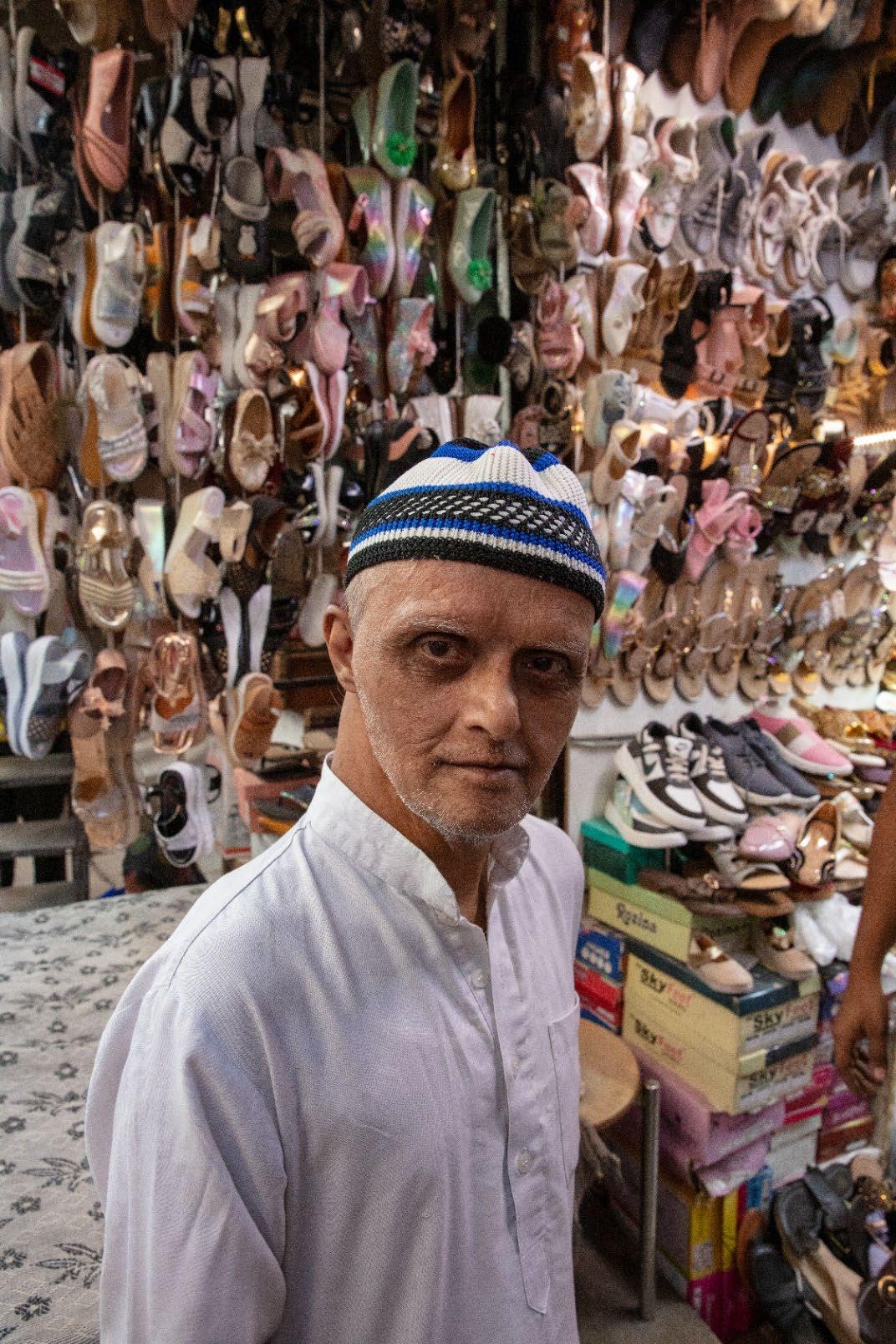


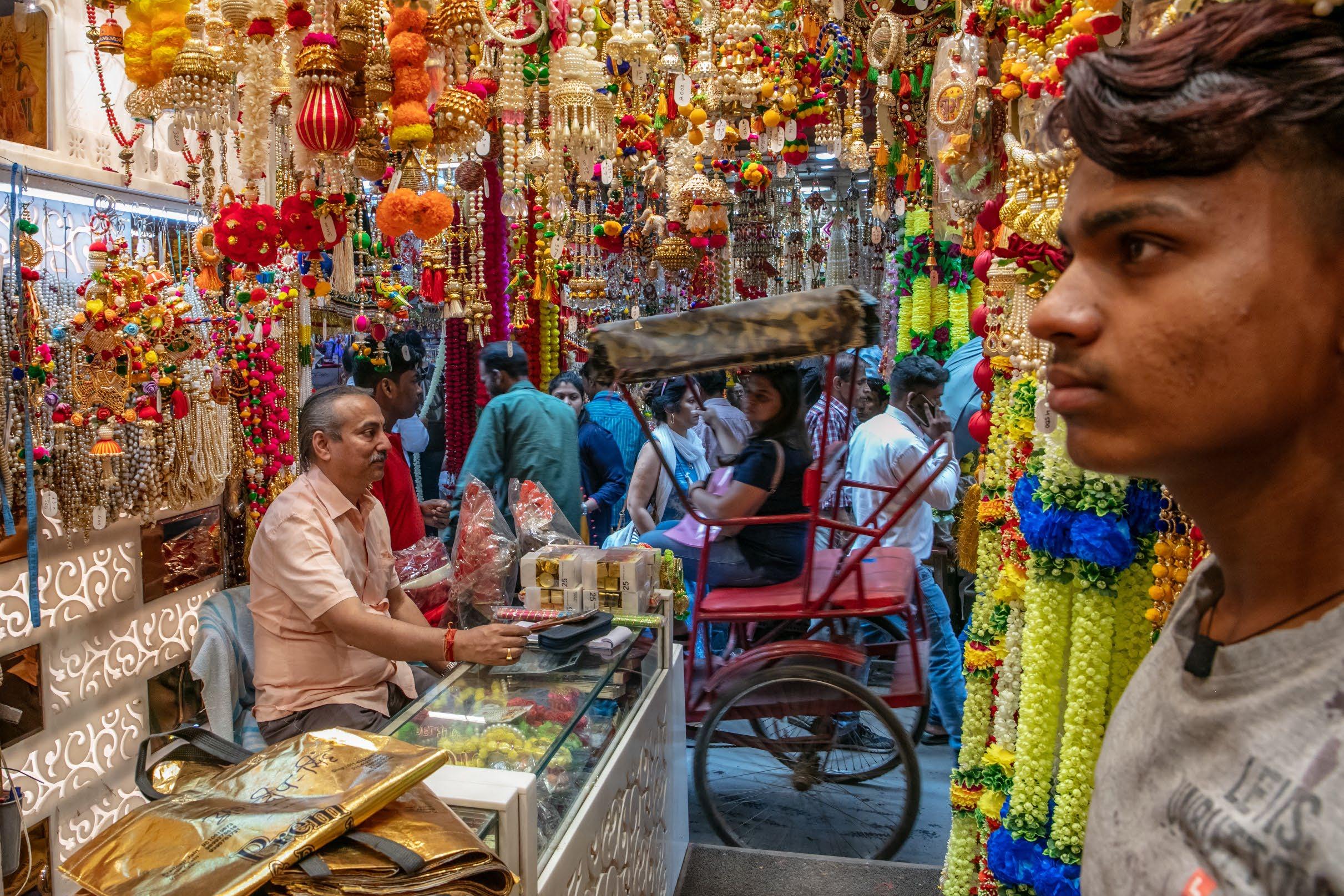



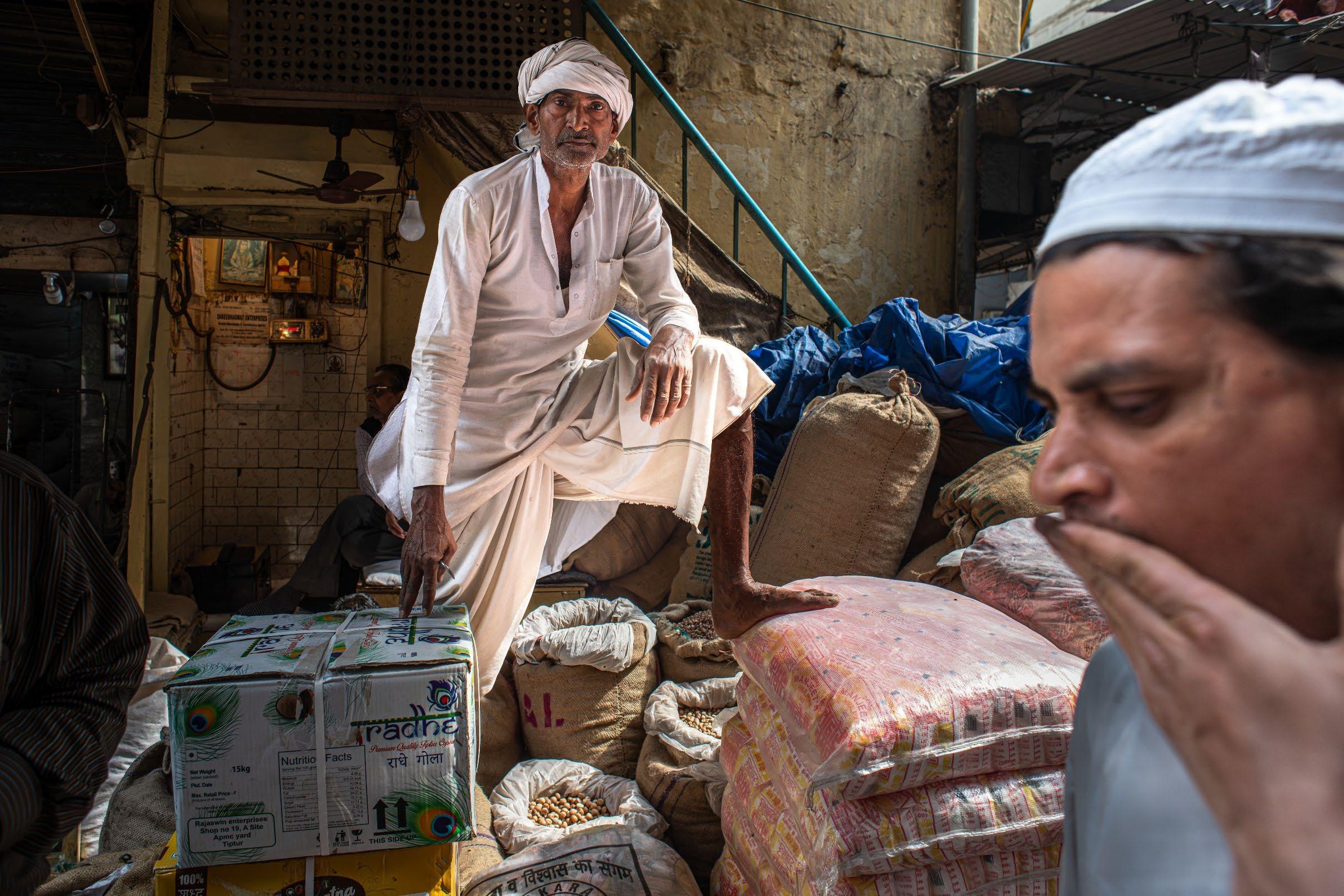

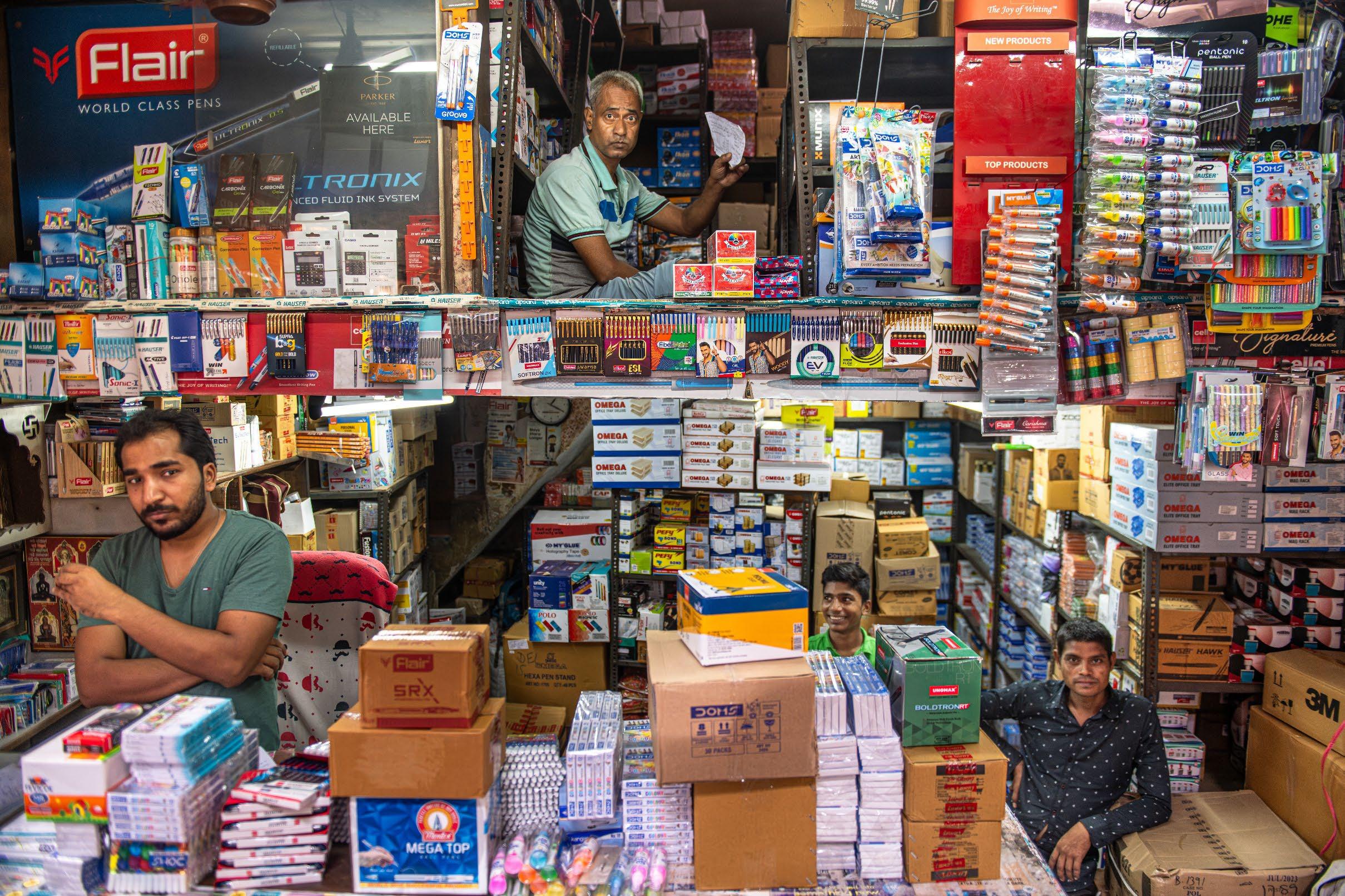





Life on the Streets

The streets of Chandni Chowk, perpetually alive with sounds, colors, and a vibrant mix of people, are a testament to the enduring nature of street life. Its narrow, winding lanes not only connect homes and places of work but also become meeting grounds where peddlers sell their goods and, for some, where life itself unfolds. For centuries, people have made their living on these open streets. The street is a shop, a salon, an office, and an open stage where daily life plays out its timeless drama.
You see cobblers sitting on wooden platforms, repairing shoes. Many of them have been working in the same spot for decades, their tools neatly displayed, ready to polish and repair shoes while breathing new life into them.
You will find barbers giving haircuts or shaves on the sidewalks. You also see men walking around with ear-cleaning tools in a bag, ready to offer their services. In most cases, these barbers and ear-cleaners have learned their skills from their ancestors.
You may even find a masseuse, to whom people have been coming for years to ease their aching backs, shoulders, and legs, with their skillful hands and oil. You don’t need an appointment, and locals have trusted them for generations.
The streets of Chandni Chowk are sprinkled with chai stalls. The chai wallah has often been serving from the same place for so long that he is known to every shop around him, and within minutes, he can deliver steaming cups to nearby customers. The fragrance of
cardamom and ginger drifts through the air, a comfort as familiar as the clink of glasses on his counter, creating a warm sense of belonging for the customers.
Walking through the lanes, you are enveloped in the delicious smells and flavors drifting from the food stalls. It’s not just the vendors along the roadside; there are also small shops open to the street that specialize in one or two dishes, some of which have been operating for decades, deeply rooted in history. While strolling, you might stop for a samosa, pick up some jalebis to take home, or savor freshly grilled kebabs. Each bite feels like tasting history itself, recipes unchanged for centuries.
Early in the morning, you may also find someone bathing in the open, having filled a bucket of water from a public faucet. Years ago, there were hand pumps gushing water into buckets, but now you see very few of these. In the evenings, many sleep on the same streets where they work during the day, seemingly undisturbed by the noise and chaos around them.
Balloon sellers and cotton-candy vendors weave through the crowds, bringing joy and color to the scene. Street performers, such as a young girl walking a tightrope to the beat of loud music, a skill she learned in childhood, perform with quiet charm. Her balance, fragile yet unshaken, mirrors the rhythm of Chandni Chowk itself: precarious, vibrant, enduring.

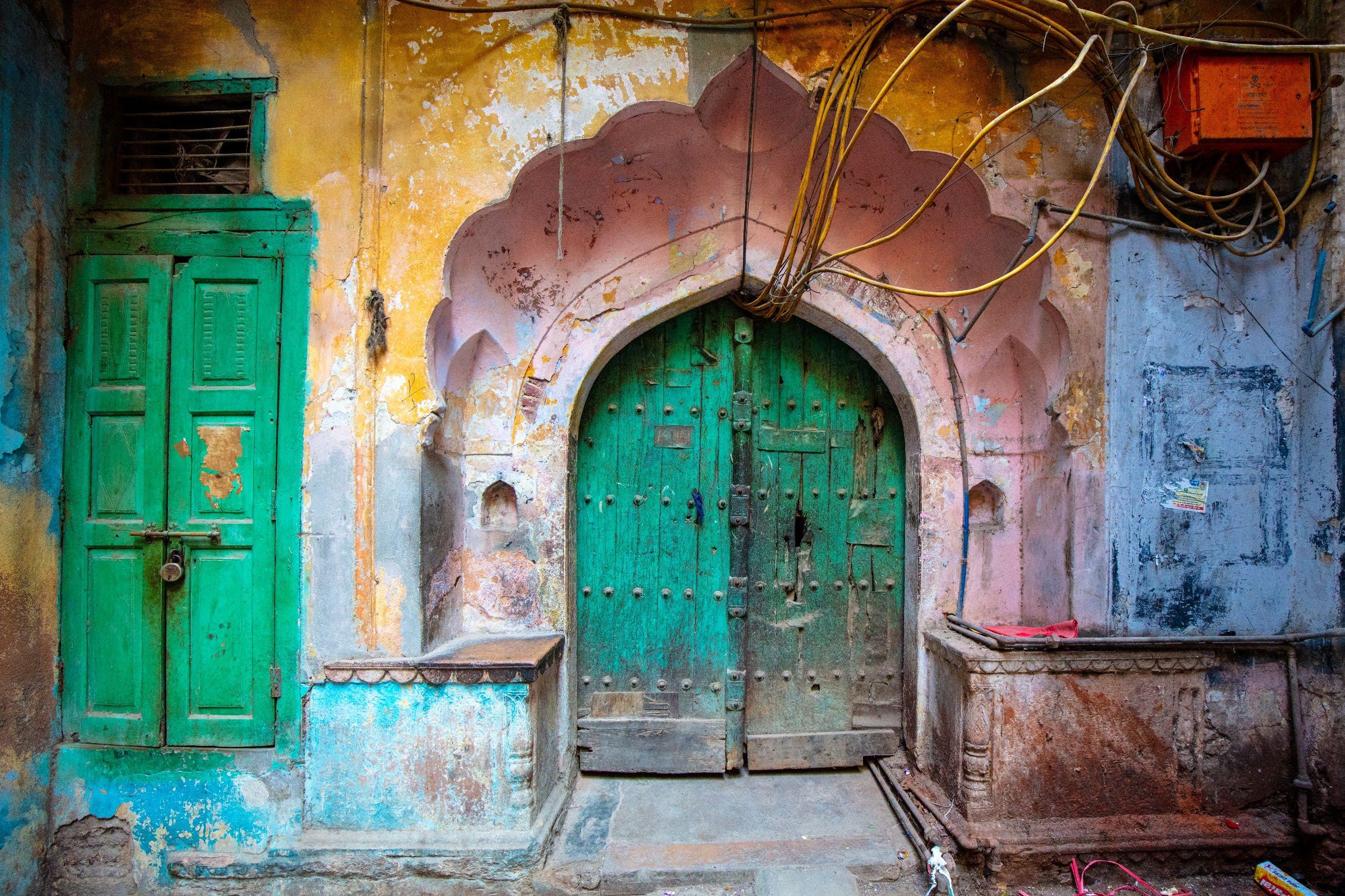

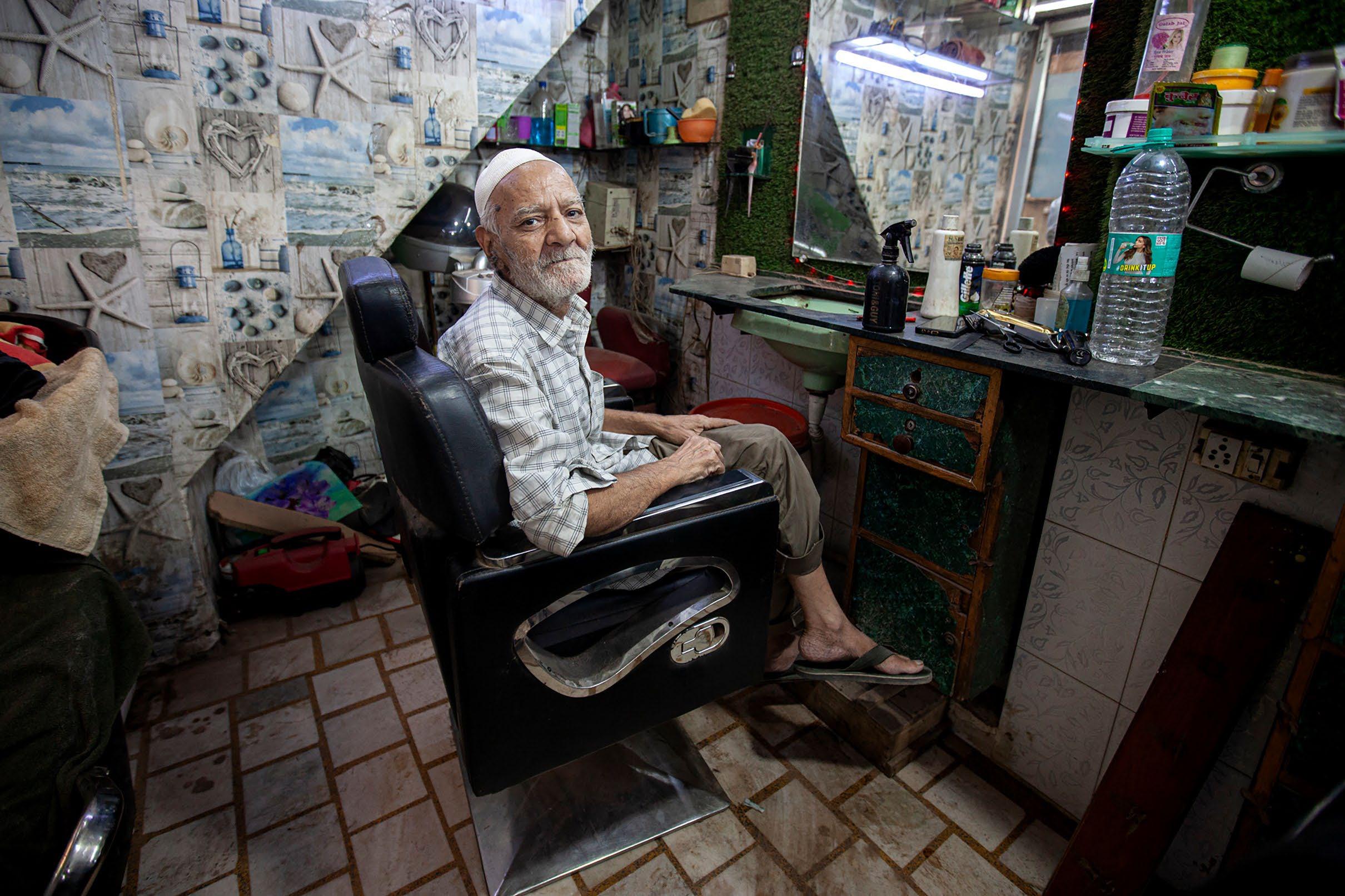





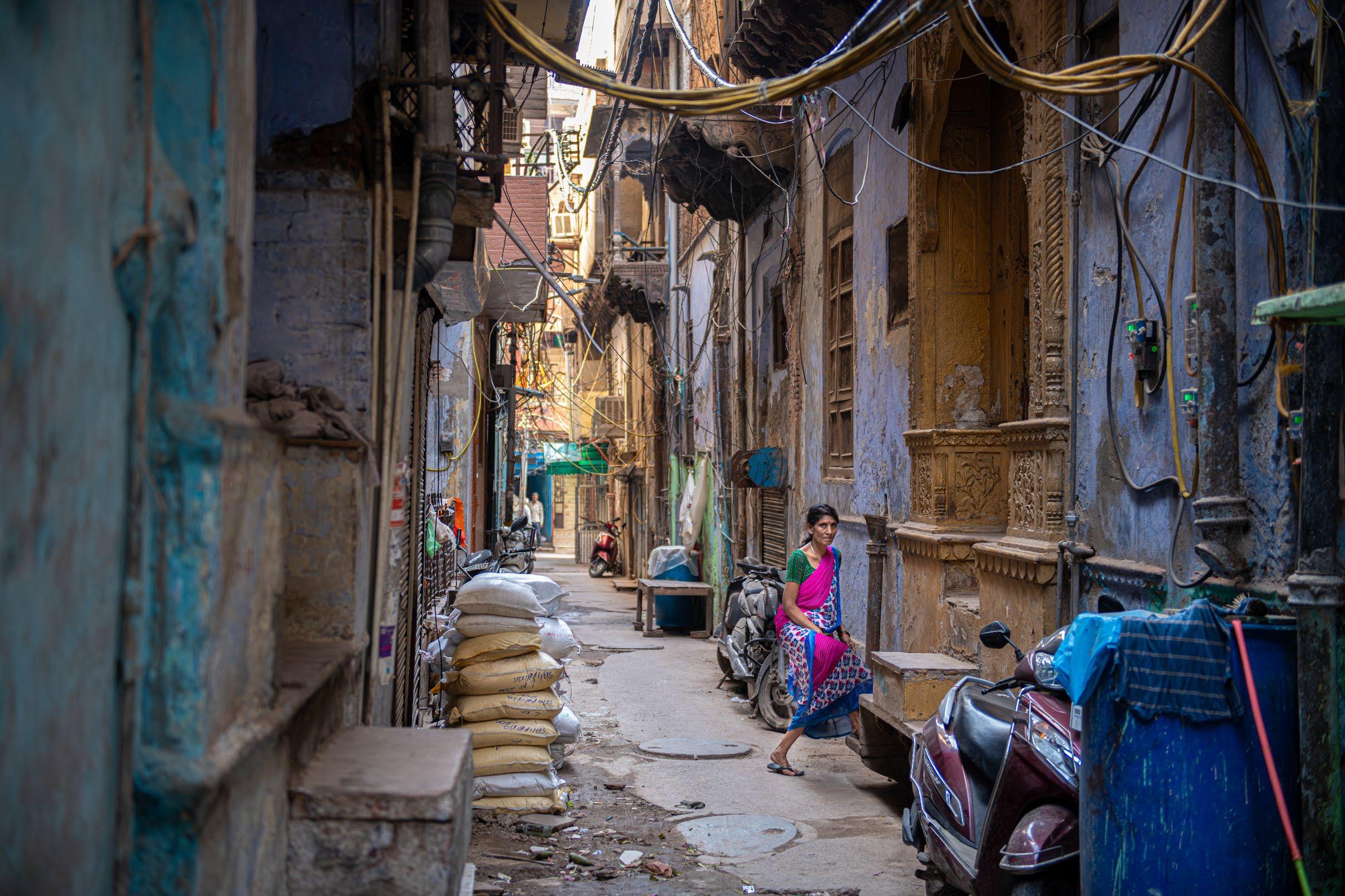
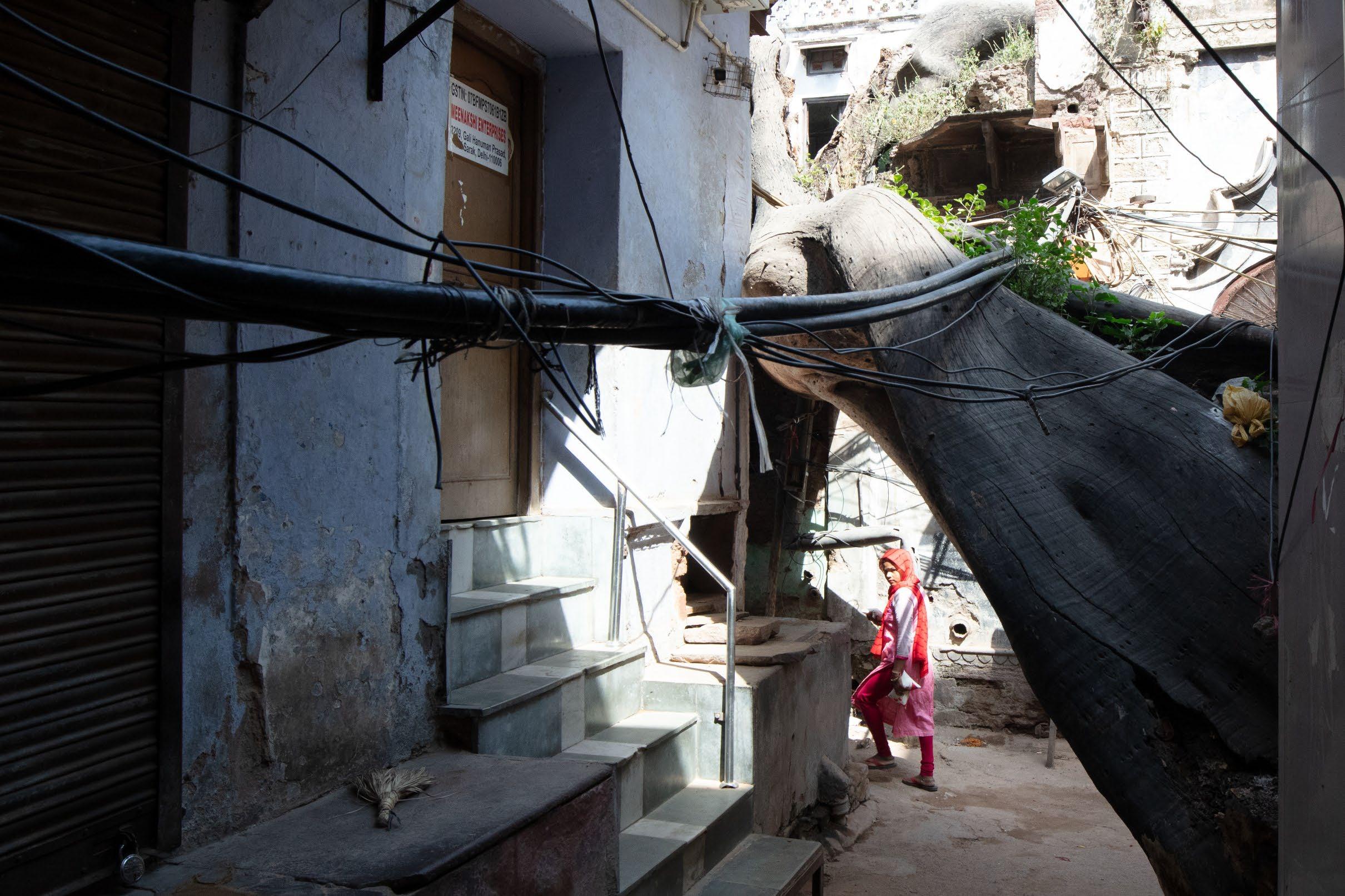













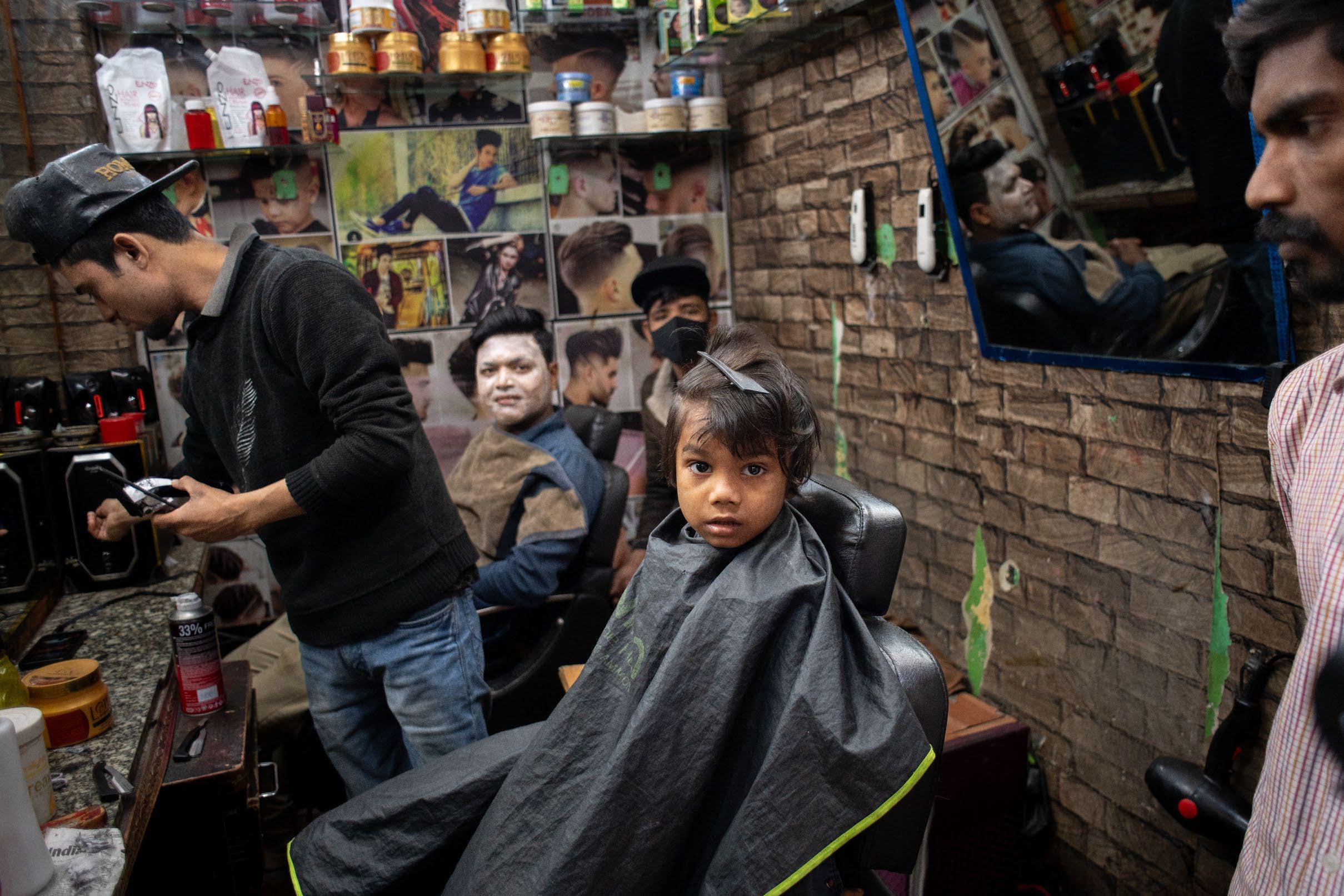




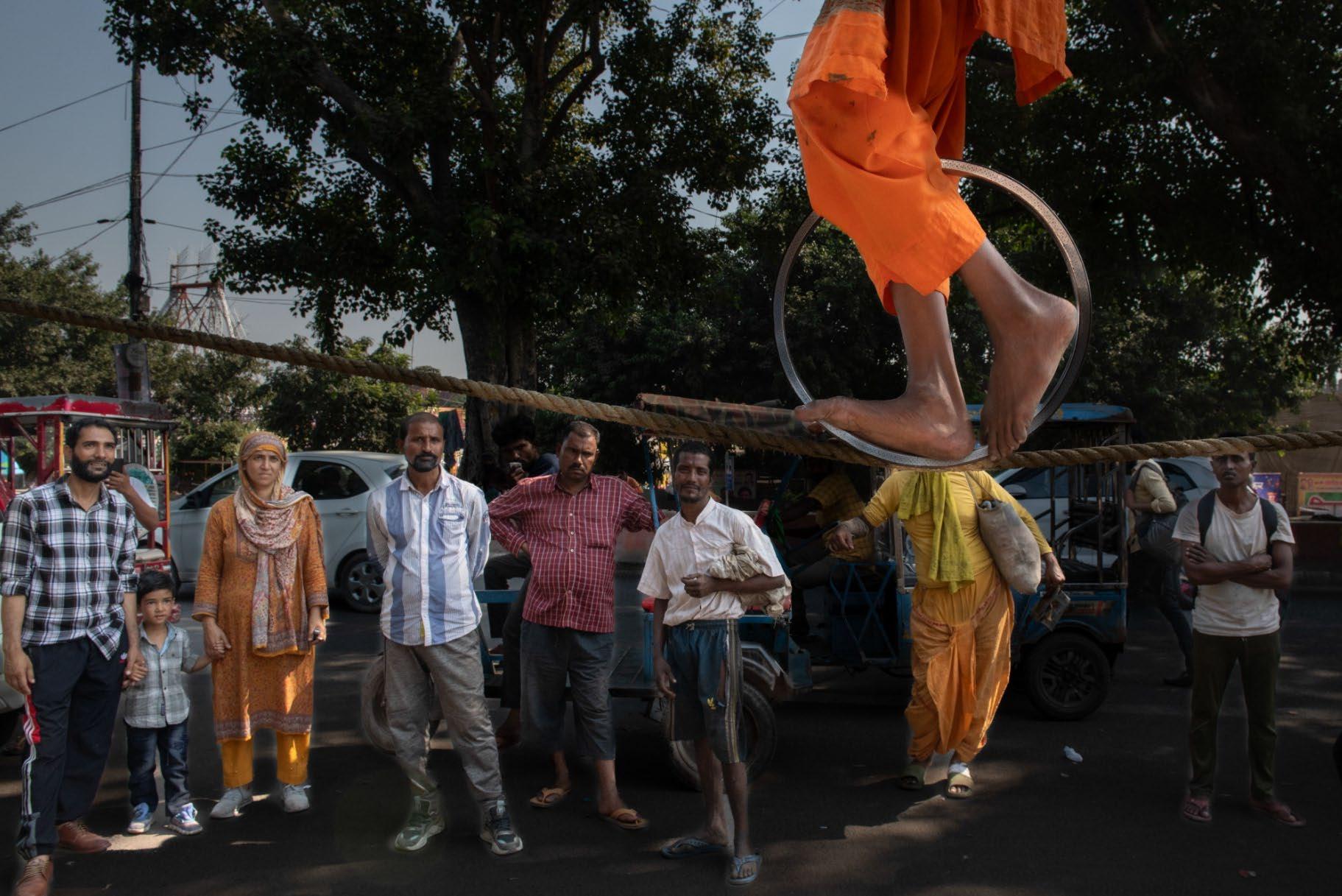
Ancestral Families of Chandni Chowk
Chandni Chowk is a neighborhood where many families have lived for generations. While some families are living in old havelis, most residents live joyfully in modest homes.
The Mathur Bahadurs were one of the oldest affluent residents of Chandni Chowk. During the Mughal and the British Raj eras, these families served as legal and financial advisors. Their grand havelis were places where neighbors gathered, legal and financial issues were settled, and guests were welcomed. In the early twentieth century, most of these families moved to secluded gardened bungalows in the newly established area near Chandni Chowk called Civil Lines. Yet, the memory of Chandni Chowk remains vivid in their collective consciousness.
One of the descendants of such families is Atul Bahadur, a childhood friend of my brother, who lives in Civil Lines with his wife, Ashwini. I have known Ashwini for many years, as she is highly respected in Delhi art circles. Her knowledge and connections in Chandni Chowk turned out to be the driving force behind this book, and she became our guide when I started working on it. It is through her that I met Ashok Mathur, whom we now fondly call "Mr. Chandni Chowk."
Ashok Mathur has a Haveli near Nai Sarak; his family has lived there for several generations. A cultural enthusiast at heart, Ashok is very active in the Chandni Chowk community and frequently gives walking tours of the area, occasionally organizing ghazal and musical evenings, as well as talks in his haveli.
He has walked us through Chandni Chowk's hidden corners, introducing us to many families who, like him, continue to make Chandni Chowk what it is. "Our roots are not just in the soil," he once said. "They are in memory. If we don't live them, they dry up."
In Ballimaran, we visited the home of Hakim Masroor Hasan, descendant of a prominent family of hakims who practice Unani medicine.. Today, Masroor continues the tradition of healing in the same haveli that breathes with life. Shelves lined with herbal concoctions, handwritten prescriptions, and whispered consultations continue a tradition of healing that has remained unbroken for over a century. His son Muneeb is now a lawyer in the Supreme Court, continuing the family's legacy of public service.
Asad Bhai's family has been printing and retailing Qurans for many generations. Although he has recently moved out of Chandni Chowk, he still maintains his haveli as a cherished place
for family gatherings and worship. He invited us to a traditional lunch one day, called a dastarkhwan. We enjoyed a ceremonial spread of a conventional Muslim meal, where a tablecloth was laid out on the floor. We sat around it on the floor, sharing fragrant biryani, kebabs, and rich curries from the same central platter. Mea nwhile, Asad Bhai's wife served us rotis warmed on a small angithi chulha in the center. Dastarkhwan signifies generosity, hospitality, and unity, where family and friends eat together.
On a rooftop overlooking Chandni Chowk, Gopal Sharma practices kabutar bazi a Mughalera tradition of pigeon flying. He releases a flock of pigeons, guiding their synchronized flight with whistles.
Not far from Jama Masjid, we visited the home of Mirza Naseem Changezi, an oral historian and freedom fighter born in 1910. His modest haveli, lined with shelves of Persian, Arabic, and Urdu books, functions as a baithak (sitting room) for storytelling and intellectual exchange. Mirza Changezi's encyclopedic knowledge of Delhi's vanished shrines, Mughal customs, and the days of Partition was not found in books but in his memory. Today, his son, Mirza Sikander Beg, continues to steward the family's legacy, curating the Shah Waliullah Library, which houses over 2,000 volumes from Changezi's personal collection.
Not all families live in big havelis. Tucked within lanes and courtyards are smaller, humbler homes. These homes are often rented, sometimes barely a single room, where generations of families live in quiet dignity. These are the homes of hospitality workers, shop assistants, street vendors, rickshaw drivers, and countless others whose livelihoods form the lifeblood of Chandni Chowk's economy. In many cases, they have served the same employer for generations.
While many families have moved out of Chandni Chowk to modern homes and high-rise apartments in other parts of Delhi, these families continue to live, work, and worship in Chandni Chowk. "Living here isn't always easy," Ashok once told me after a long day of photographing. "But every morning, I wake up and I hear the street come alive, vendors calling out, temple bells, azan , school kids laughing. Where else can I live with that kind of music?"
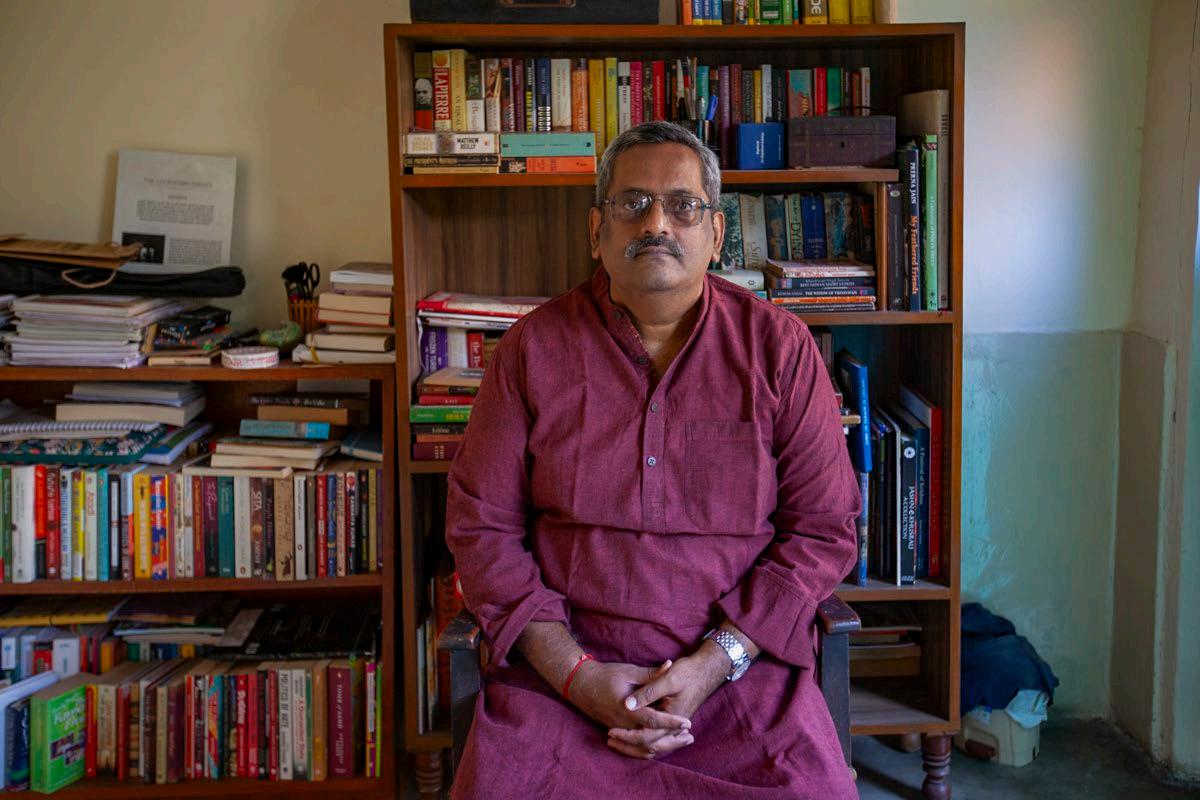




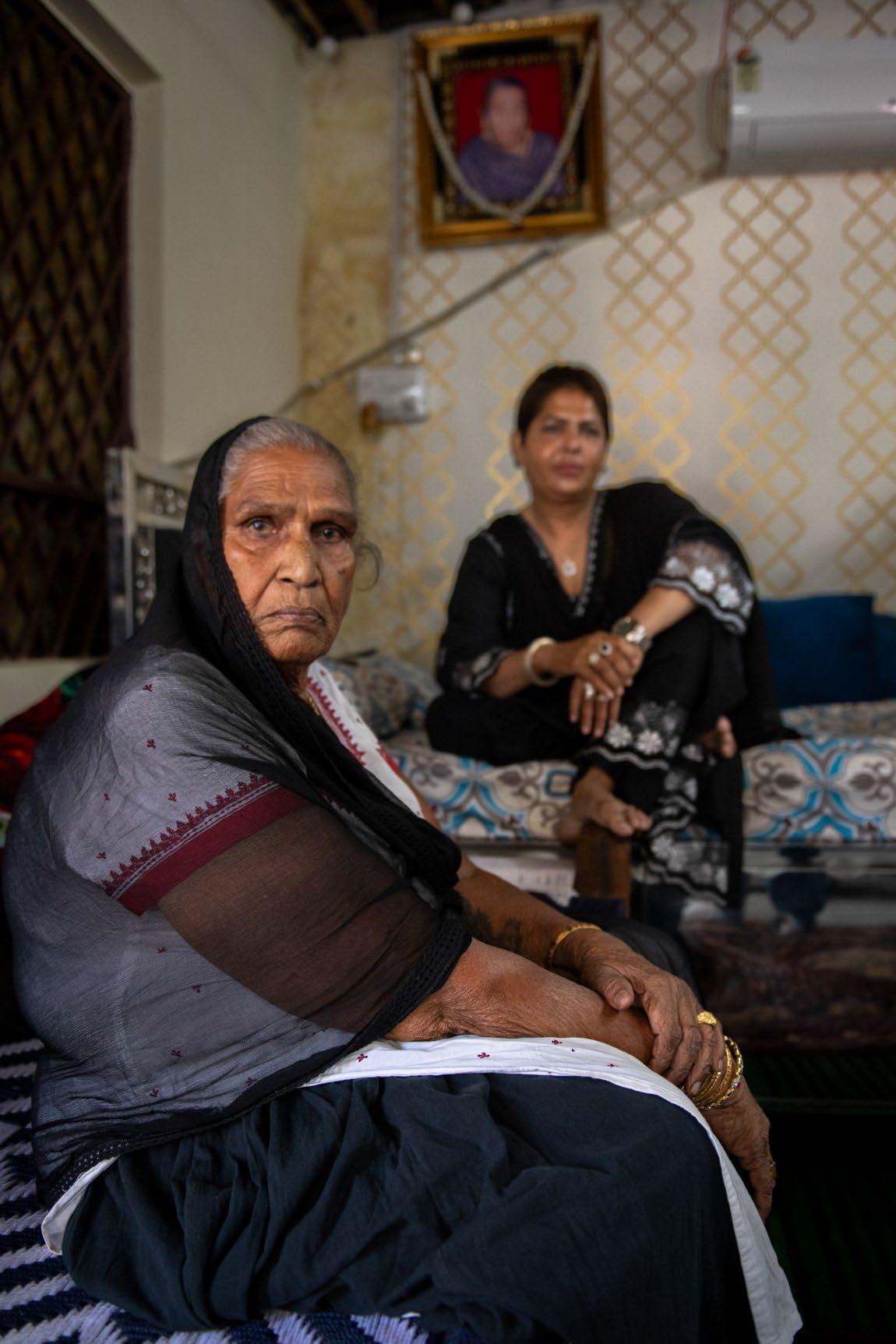




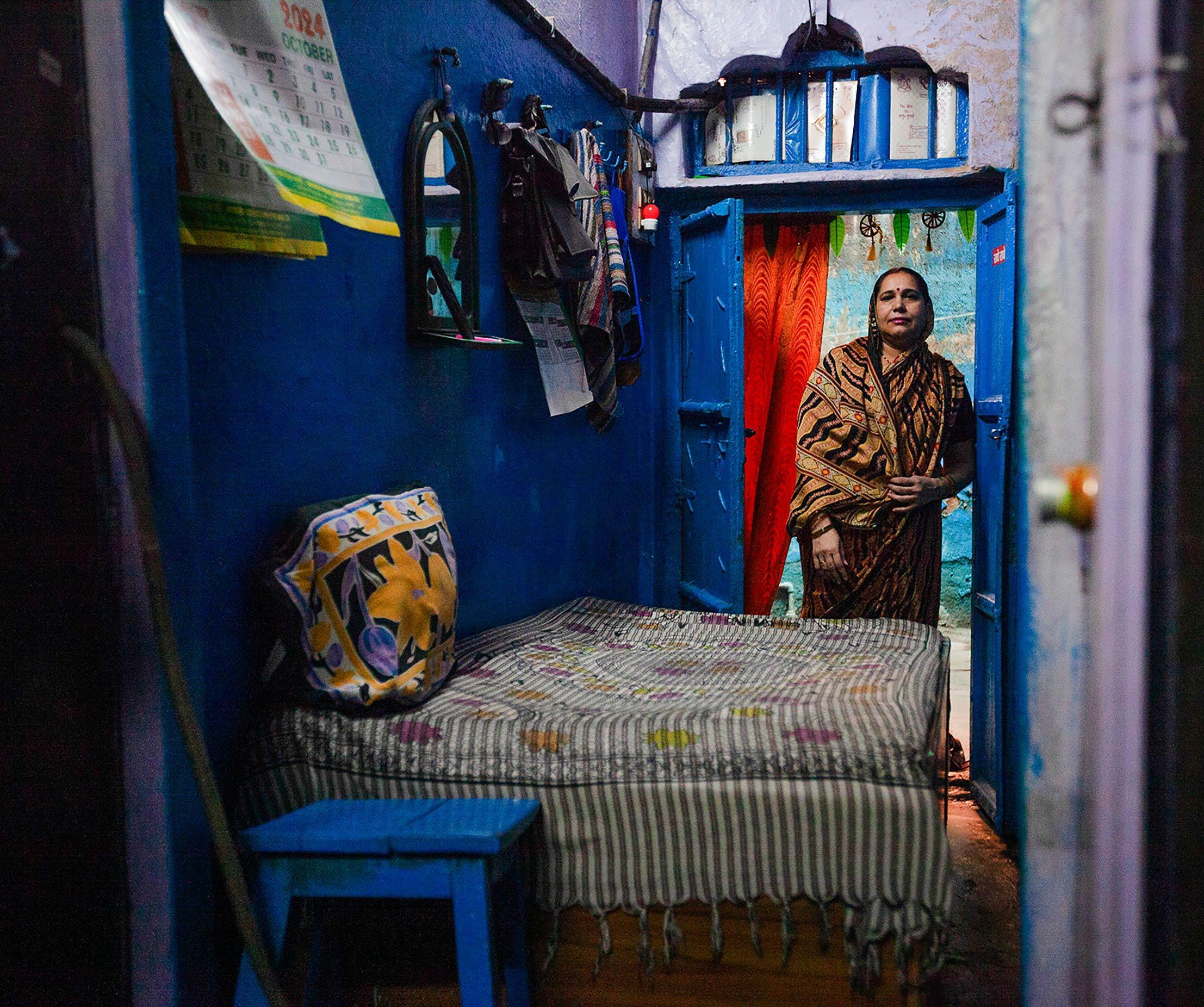
Moving the City: The Human Engines of Old Delhi
The cycle rickshaw drivers who pedal visitors through its bustling bazaars and the Thela Wallahs and porters who shoulder its commerce are the human engines of Chandni Chowk. They keep the city moving through their strength and perseverance.
Riding Chandni Chowk: A Rickshaw Journey Through the Bazaars
Rickshaws, three-wheeled vehicles powered by a person pedaling, have been a part of Chandni Chowk as long as I can remember. They are deeply intertwined with the Chandni Chowk cultural fabric, contributing to its unique character. They are the best mode of transportation in the crowded, narrow market lanes. But more than that, they offer a unique sensory experience from the perch of the rickshaw seat, allowing you to immerse yourself in the sights, sounds, and smells of the market, from the aroma of spices to the lively chatter of vendors and shoppers.
Every winter, I take a trip to India to attend the renowned Art Fair in Delhi. In 2025, Carol Huh, the curator of Contemporary Asian Art at the Smithsonian National Museum of Asian Art, accompanied me. Naturally, anyone visiting India with me doesn't just see the art fair they get the whole Delhi experience. It always includes a visit to the Chandni Chowk area. I believe the best way to experience the vibrant markets of Chandni Chowk is to take a ride in a rickshaw.
Carol and I climbed onto a rickshaw with a red vinyl seat, which had a few patches held together with duct tape. Rafiq, a thin man wearing a faded cap and a friendly smile, was our driver.
"Kinari Bazaar?" I asked.
He nodded. "Yes, sir. Sit. I take you, then you see all Old Delhi."
The narrow lanes of Kinari Bazaar are where Delhi comes to dress up rows upon rows of zardozi borders, sequins, lace trims, brocade, tassels, and wedding finery glinting under shop lights.
Carol, soaking it all in, said, "It feels like a carnival," and wanted to know if Rafiq drove the rickshaw every day.
"Every day, Memsaab," he said. "Since 2002. Before that, I was in Bihar. Farming. But Delhi has more work."
"Long hours?" I asked.
"Morning till dark, sir. In the Delhi wedding season, it is madness
Behind us, another rickshaw rang its bell, eager to pass.
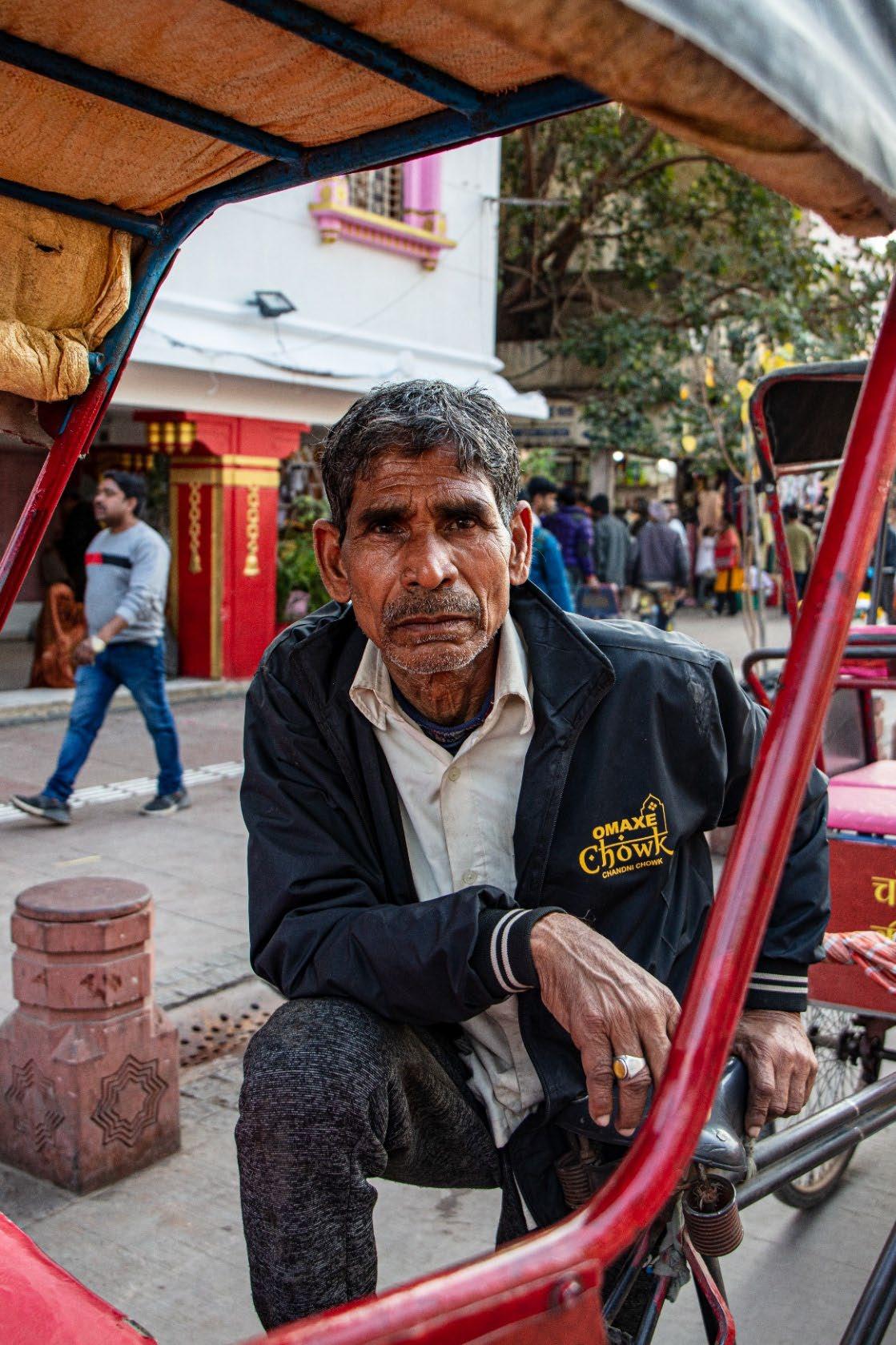
As we entered Dariba Kalan, Carol noted the contrast less frantic, more ceremonial. It was a corridor lined with jewelry shops, selling silver chains, nose rings, anklets, and filigree earrings that glinted behind glass.
But the stillness didn't last. We soon emerged into the very noisy Chawri Bazar, a place filled with wedding cards, paper goods, and brass fittings.
"Now I show you one more," Rafiq grinned, "Ballimaran. For glasses. Shoes. Style!"
He wasn't wrong. The mood changed again as we rolled into Ballimaran, a lively street where sunglasses hung like decorations and shoes were stacked high in roadside pyramids fake Adidas, glittering juttis, bright neon sandals. We saw a barber giving someon e a shave right on the sidewalk, while his next customer waited with a cup of tea in hand. This was street fashion at its boldest loud, raw, and full of life.
Rafiq brought us back to the Jama Masjid area, where our car was parked.
"How much?" I asked.
He shook his head. "You tell me, sir."
I handed him ₹200. It wasn't much for masterful navigation and stories. He accepted it with a graceful nod.
"Come again," he said with a grin. "Next time, I show Memsaab Fatehpuri. Or Sitaram Bazaar.”
Seeing Chandni Chowk from the seat of a cycle rickshaw isn't just a tourist experience it's a unique perspective that offers a profound understanding of this place. It's the best way to take in the crowded beauty of this place without getting swallowed by it. In a rickshaw, you move slowly, close to the ground, close to the people. And drivers like Rafiq aren't just taking you from one place to another; they're storytellers and guides, offering a perspective that's both intimate and enlightening.
There are also larger auto rickshaws on the road. They're faster, louder, and just as essential, a lifeline for locals and delivery workers. But in the tight inner lanes of Chandni Chowk, it's only the humble cycle rickshaw that can get through.
In the bustling heart of Chandni Chowk, where cars struggle to navigate and most lanes are too narrow even for scooters, the true heroes of the marketplace emerge-the Thela Wallahs. These men, who push wooden carts laden with goods through the chaos, and the porters, who balance enormous loads on their heads, are the human force that keeps Chandni Chowk running like a well-oiled machine. Their work is not just hard, it's a testament to their resilience and determination, honed over years of navigating these crowded streets.
The thela is a simple wooden cart with strong iron wheels, perfect for moving through the narrow lanes of Chandni Chowk. Thelas carry all kinds of goods: sacks of spices from Khari Baoli, bundles of fabric from Neel Katra, and reams of paper from Chawri Bazaar.

These men are very knowledgeable about every shortcut, every corner, and how to move quickly through crowds, rickshaws, and animals wandering in the narrow streets. If something needs to reach a small shop down a narrow lane, it's the Thela Wallahs who will get it there.
Just as necessary are the porters men who carry heavy loads on their heads, often climbing stairs or ducking through tight alleyways. They carry everything from lentil sacks to stacks of cloth, delivering goods directly into shops with strength and balance that is truly amazing.
For a photographer, the sight of a Thela Wallah pushing a cart stacked high with parcels or a porter balancing a large bundle of goods is iconic. It represents the raw, unfiltered energy of Chandni Chowk a place where human perseverance triumphs over urban chaos.
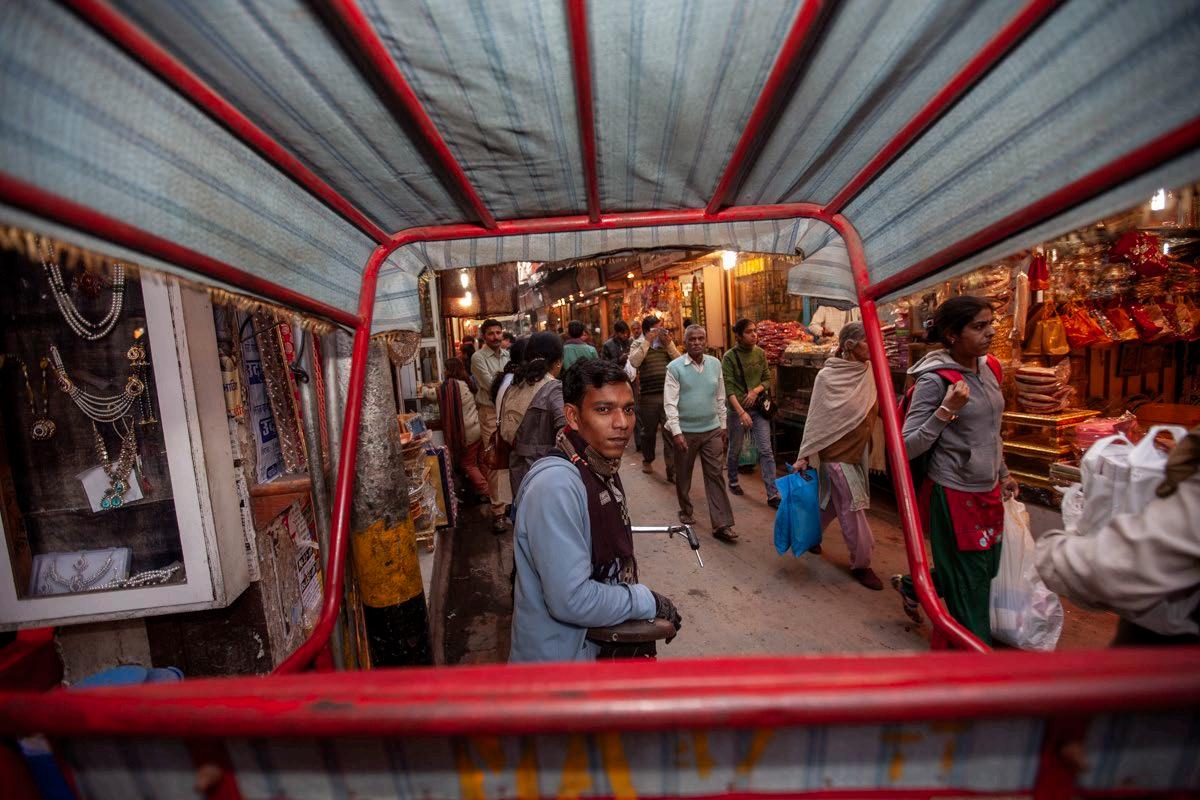


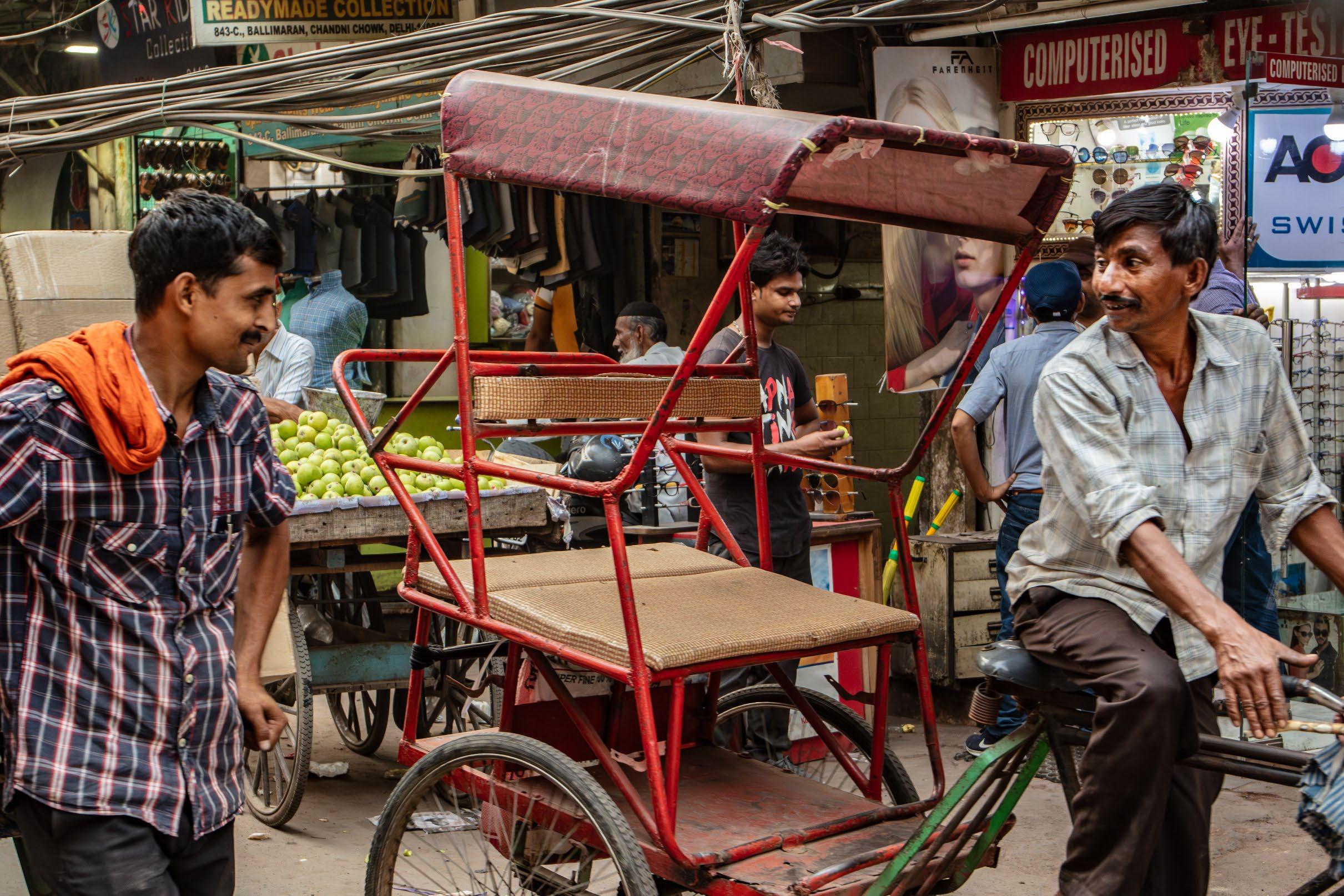






The Living Institutions

When most people think of Chandni Chowk, they imagine its bazaars, rickshaws, traders, and fragrant food stalls. Yet it is also home to several legendary institutions, such as the Old Delhi Railway Station, Kasturba Gandhi Hospital, and Indraprastha Hindu Senior Secondary Girls' School, which have been the cornerstone of life in Chandni Chowk for over a century.
Gateway to Chandni Chowk: The Old Delhi Railway Station
Standing tall since early twentieth century, the Old Delhi Railway Station holds the distinction of being one of the earliest railway stations in India. While its red sandstone façade and Mughal-influenced elements complement the style of the neighboring Red Fort, its colonial
features, with Gothic arches and clock towers, highlight British design sensibilities. Before 1920, when the New Delhi Station was built, this station was the gateway of the bustling bazaars of Chandni Chowk to the rest of the world. Today, an underground walkway connects the rail station to the Chandni Chowk Metro Station, seamlessly connecting the residents and businesses of Chandni Chowk to the city and beyond. As a child, I remember trains pulled by great black steam engines, their wheels towering, their piercing whistles echoing as the trains crawled out of the station. At the same time, the driver could be seen shoveling coal into the engine's glowing, smoky furnace. In those days, porters moved swiftly through the
crowds with stacks of luggage balanced on their heads, while chai wallahs sold tea in earthen kulhads on the platform.
Over the years, train travel has undergone significant changes. Yet, the station has managed to retain its vibrant essence, remaining a bustling center of activity: families lugging suitcases, pilgrims hauling bundles, students with their backpacks, and laborers carrying cloth bags tied with rope are a sight to behold. Yet, amidst the chaos of constant train arrivals and departures, one can observe people resting, even sleeping on the platforms. At the same time, their children play near piles of luggage. The station's atmosphere is further enriched by the continuous, echoing announcements, as though a chant foretelling a restless journey.
From Purdah to Progress: A Century of Care
Kasturba Gandhi Hospital, formerly known as the Victoria Zenana Hospital, was established in 1905 with just ten beds serving women who lived in purdah and refused to be treated by male physicians. Over the years, it has evolved into a modern healthcare facility, now run by the Delhi Municipal Corporation, equipped with state-of-the-art equipment and dedicated healthcare professionals. It offers a wide range of services, from prenatal care to postnatal support, and handles over 12,000 births every year, making it one of the largest hospitals of its kind in Asia. This transformation from a small hospital to a leading healthcare institution is a testament to the progress and evolution of Chandni Chowk.
Since my mother's family hails from Chandni Chowk, all my aunts gave birth here in the 1950s and 1960s. I remember being excited when a new cousin was about to arrive. In those days, each patient stayed for a whole week in a two-room patient apartment with a private courtyard.. To celebrate a birth, our extended family would gather there, including my aunts, uncles, and cousins. My grandmother, who lived nearby, would bring enormous tiffins filled with pooris, sabzi, and sweets. For us children, it was like a festival, filled with laughter and stories. That patient wing was eventually demolished to make way for a multi-storied block, necessary to meet the hospital's ever-growing needs.
My sister, Dr. Poonam Bagga, was born here in 1959 and is now one of the most senior obstetricians at the hospital. "I've delivered thousands of babies here," she reflected, "and being born here myself makes every delivery feel special. I have seen some very complicated cases come to us. Women come with advanced complications, arriving late in their pregnancy, having had no prenatal care, when the risks to mother and child are dangerously high. Drawing upon our experiences, we do everything we can. Most of the time, we're able to turn things around. But there are moments, despite our best efforts, when we can't. Still, we show up each day, because even one life saved is worth it."
For over a century, the hospital has served not only residents of Delhi but also the surrounding villages, providing care and support during the most critical moments of their lives. You see newborn babies crying as nurses move swiftly through crowded rooms filled with joyous families. You see women with their newborn babies wrapped in bright, colorful cloths, while expectant mothers wait for their checkups. The patient waiting areas, corridors,
and even the hospital courtyard are filled with people, because it is not unusual for entire families to accompany a patient.
The old fish market is gone, and the open courtyards have been replaced with a modern high-rise building. Still, its legacy of care and saving lives continues.
A Legacy of Learning: Indraprastha Hindu Senior Secondary Girls School
Indraprastha Hindu Senior Secondary Girls School was founded in the early 1900s, a time when girls in India rarely attended school. For over a century, generations of families in Chandni Chowk have sent their daughters here to give them a chance to advance in a rapidly changing society.
The school is a living testament to history, housed in a 19th-century haveli with arched gateways, open courtyards, carved wooden doors, and high ceilings. Many of the classrooms still retain the old Mughal-style architecture, with thick walls and jharokha-like windows that open toward Chandni Chowk's bustling lanes. The school's architecture reflects the rich cultural heritage of Chandni Chowk, preserving the local culture for future generations. The classrooms, with their simple yet functional design, are adorned with blackboards, wooden benches, and walls sometimes decorated with murals or hand-painted posters celebrating festivals and women leaders. The central courtyard, a vibrant hub, is used for morning prayers, marking Independence Day events, and classical dance and drama performances. On a typical day, you may see girls practicing Bharatanatyam, Kathak, or folk dances for annual day functions, filling the haveli with rhythm and grace.
Together, these institutions bring pride to Chandni Chowk; they are not just institutions, they are signposts of life itself
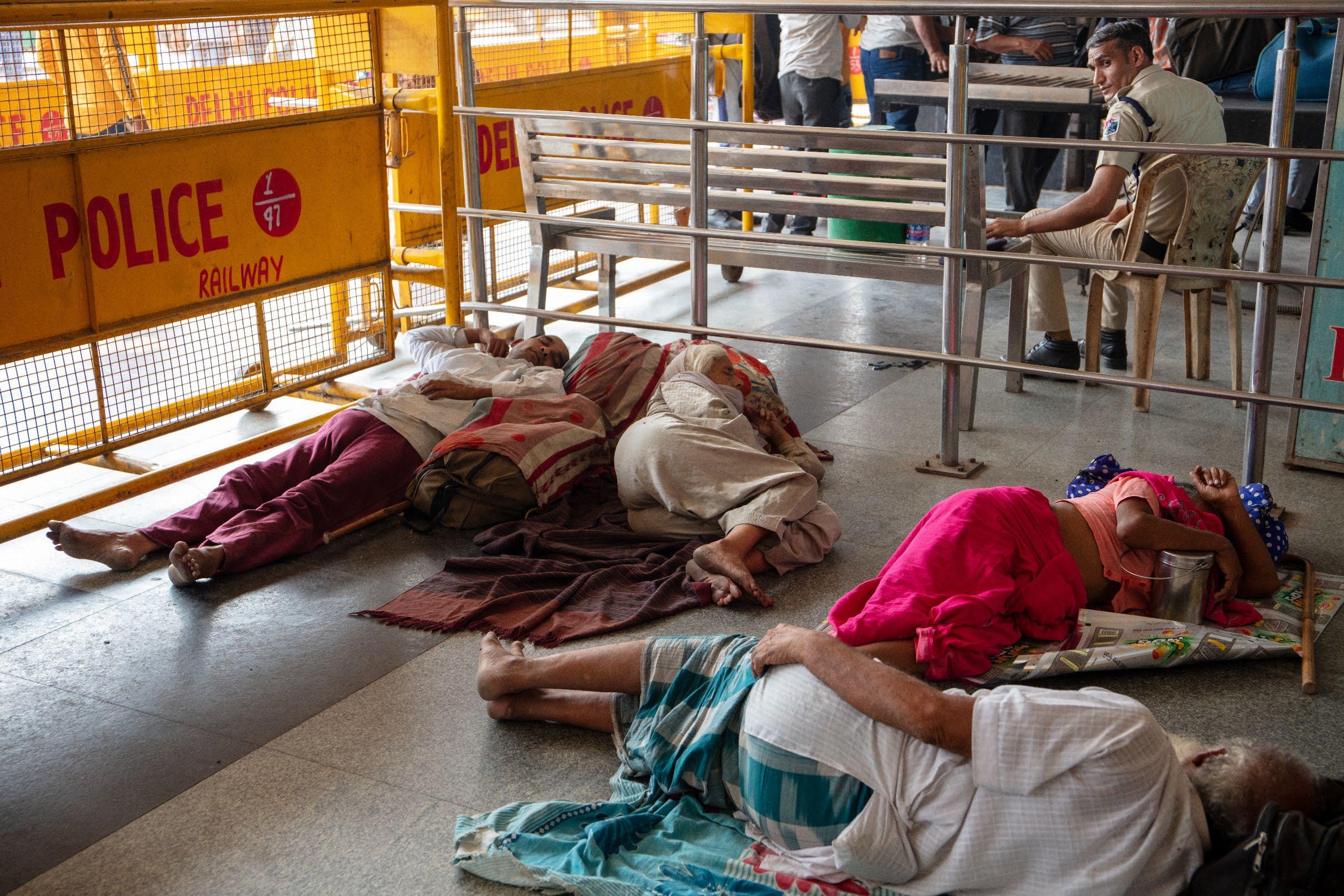
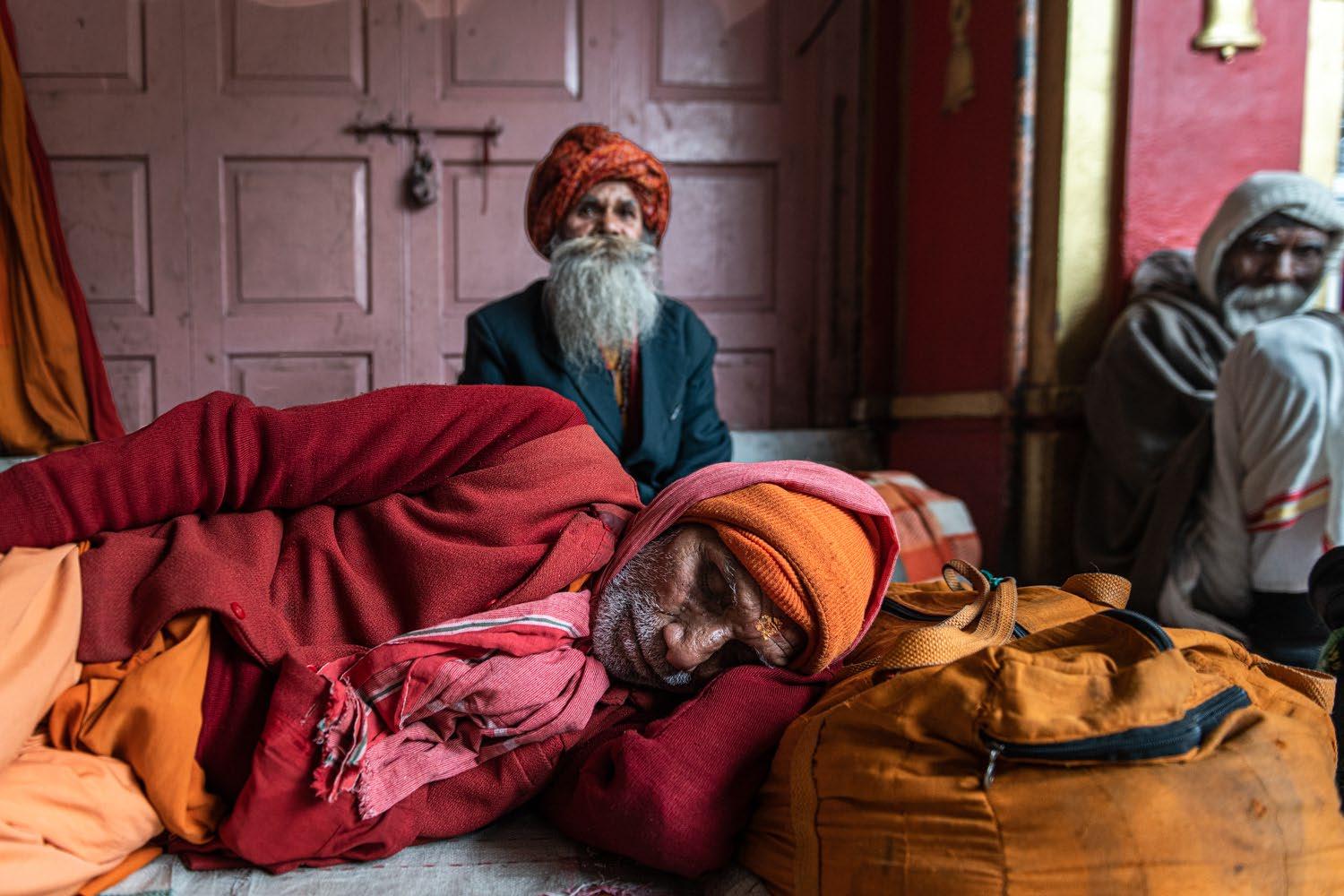








The Living Culinary Heritage
Delhiites unanimously agree on one thing: Chandni Chowk is a timeless food haven. The fact that many food joints have stood the test of time for over a century makes it not just a place of historical significance, but also a living testament to its culinary heritage.
Strolling through Chandni Chowk is a sensory journey that takes you back in time. Depending on the area, you'll witness samosas sizzling, kebabs grilling, and sweets simmering in syrup. The symphony of cooking and food orders blends with the already vibrant street sounds, creating a unique rhythm.
Street food vendors scattered throughout Chandni Chowk play a central role in the local food culture. They move through the narrow lanes with carts and baskets, carrying a variety of delicious snacks, from kachoris and chaat to kulfi and seasonal treats like daulat ki chaat. Each vendor has their own route or a set location and loyal customers who have been enjoying their delights for years.
The Paratha Wali Guli (Lane)
My visits to India, especially when my mother was alive, always included a cherished rituala stroll through Gali Paranthe Wali in Chandni Chowk. This narrow lane, steeped in history, has always been one of Delhi’s most iconic food destinations. The eateries here serve deepfried parathas, hot and crispy, straight off the tawa, stuffed with a variety of fillings.
We always returned to the same paratha wallah in the corner, featuring nearly thirty spicy, savory, and sweet fillings. My mother must have tried them all. My favorites have always been Gobhi (cauliflower) and Mooli (radish), served with tangy chutney, pickles, and a peppery aloo sabzi.
The first shops in Gali Paranthe Wali began in the 1870s as a row of eateries catering to vegetarian Jain and Bania merchants. By the early twentieth century, more than twenty shops lined the lane, each family-run and offering its unique selection of fillings. Many shops have closed in recent years, and now fewer than ten remain, all still operated by descendants of the original families who started them.
Gali Paranthe Wali has been featured in Bollywood films, some filmed on-site, and others recreated to evoke the flavor of Old Delhi. For me, Gali Paranthe Wali will forever be tied to memories of my mother. I picture her sitting on a narrow bench, her eyes lit up with excitement. She would always say she wanted to try something new, but somehow, she always returned to her favorites.
The Corner of Two Dishes
At Natraj Dahi Bhalle Wala, the menu has stayed the same since 1940, featuring only two dishes-Dahi Bhalle and Aloo Tikki. The Dahi Bhalle, with perfectly soaked lentil fritters, smothered in creamy house-made yogurt and topped with tamarind chutney and spices, are a delight for the taste buds. The Aloo Tikki, golden and crisp, offers a burst of tang and heat.
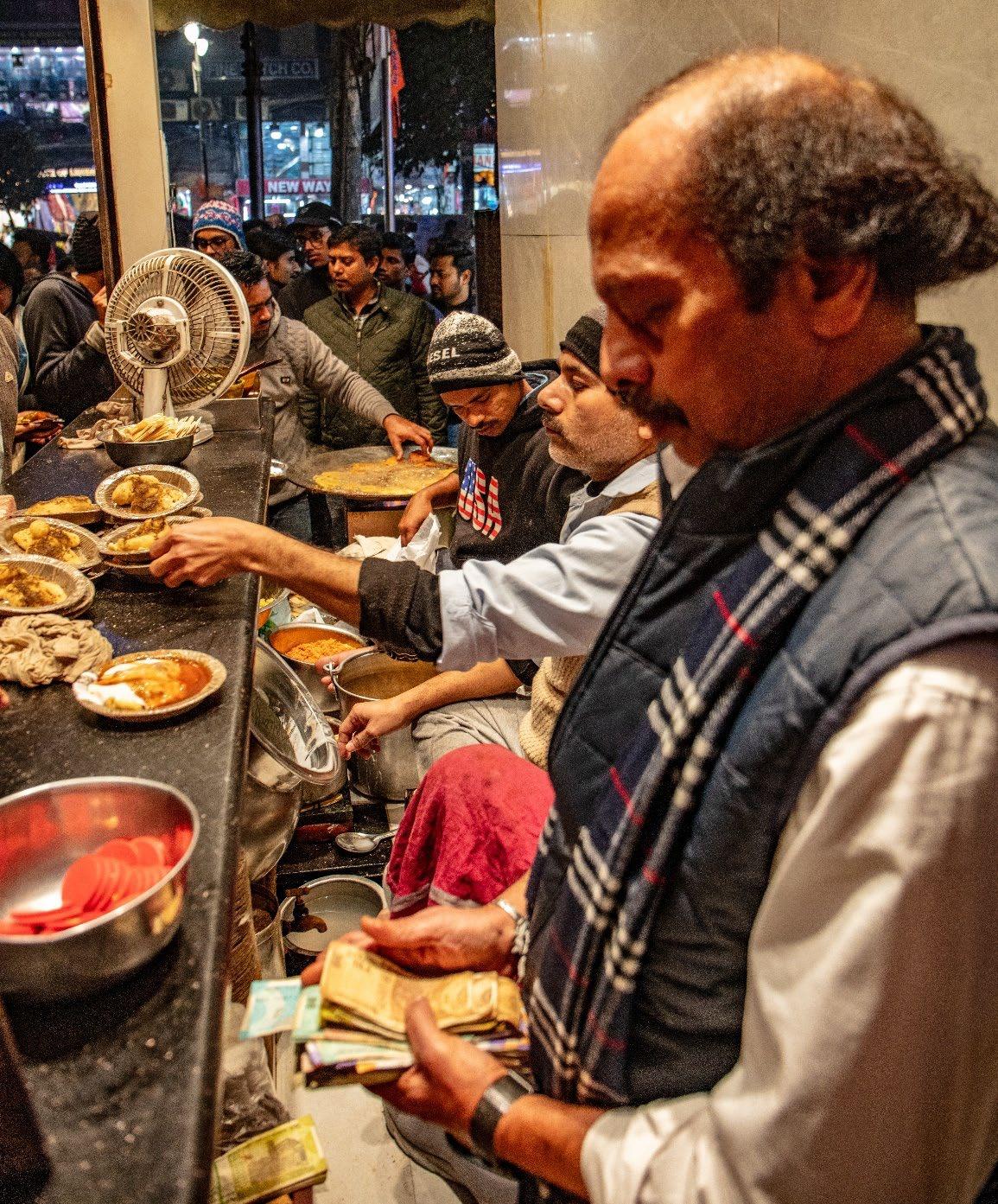
Served on leaf bowls or paper plates, these dishes have stood the test of time, just like the shop itself.
The shop is simple, featuring a street-level counter and modest seating upstairs. During my photo walks, I stop here often, not just for the food, but to watch families, students, office workers, and tourists gathered in a semicircle around this corner shop.
What makes Natraj special is its steady tradition. The recipes have remained essentially unchanged for over 80 years. There are no branches, no flashy signs, just quiet, reliable, two simple dishes.
The Jalebi that Time Preserved
My grandson, Archie, loves jalebis, though thanks to his health-conscious parents, he enjoys only one or two every month usually store-bought and lacking in freshness. As I buy them for Archie in the US, I am often reminded of Old Famous Jalebi Wala near Dariba Kalan. Once you’ve tasted their jalebis fresh, hot, and glistening with pure desi ghee and syrup, you realize how far most jalebis have strayed from their authenticity.
Established in 1884, this small shop consistently draws crowds, enticed by caramelized sugar and warm ghee. The jalebis are thick, crisp, and syrupy, following their secret age-old recipe.

Bollywood icon Raj Kapoor and former Prime Ministers, including Atal Bihari Vajpayee, Jawaharlal Nehru, and Rajiv Gandhi, are known to have relished the jalebis here. I dream of taking Archie there one day, watching him bite into a warm jalebi, syrup dripping down his fingers, hoping the memory will stay with him as it has with me.
The Mughal Cook’s Legacy
As a passionate foodie, I maintain a list of the twenty best meals of my life. Karim’s Hotel, behind Jama Masjid, has been on that list forever.
Founded in 1911 by Haji Karimuddin, a descendant of Mughal court cooks, the restaurant’s initial offerings were limited to aloo gosht and dal, served with roomali roti More than a century later, their menu has expanded exponentially and now essentially defines the best Mughlai cuisine available in Delhi.
Over the years, the restaurant has expanded into dining areas in multiple buildings across the street from each other. The central kitchen is on the second floor with an open window. You hear waiters yelling orders from the street level to the kitchen. At the same time, the head server sits in one corner on the street, surrounded by piping hot, ready-to-serve curries in large metal containers. The smell of charcoal and the aromas of spice fill the air. The rotis arrive hot, and slow-cooked gravies are thick, each bite steeped in tradition. The smoky mutton burra and overnight-cooked nihari are unforgettable here. Even though Karim’s now has branches in other places, nothing compares to the original.
For me, eating at Karim’s has become a quiet ritual of my trips to Chandni Chowk. It captures the heart of Delhi’s rich and lasting food traditions. Every time I go to Karim’s, it moves up a notch on my list of top twenty meals of my lifetime.
Sweets That Cool the Summer
Delhi’s tropical weather calls for falooda and kulfi. Since 1947, Giani’s Di Hatti has been serving its iconic rabri falooda, so thick and creamy that you need a lot of patience to relish it. Kuremal Mohan Lal Kulfi Wale takes kulfi to the next level, stuffing frozen, flavored milk into hollowed-out fruits sliced open like a surprise dessert. And then there is Hazari Lal Khurchan Wale, who has been making the most delicious khurchan, with layers of slowly thickened milk topped with sugar, cardamom, and a shimmer of silver, in the same way for more than 90 years.
A Food Haven in Transition
While the street food of Chandni Chowk remains alive and well, the food scene is evolving. In 2024, Dawatpur, the largest food court in India, opened in the new, modern, and airconditioned Chandni Chowk mall. But for me and many others in Delhi, the real magic of food in Chandni Chowk still lies in its streets where jalebi boils in open cauldrons and kebabs roast on charcoal grills just as they have for over a century.

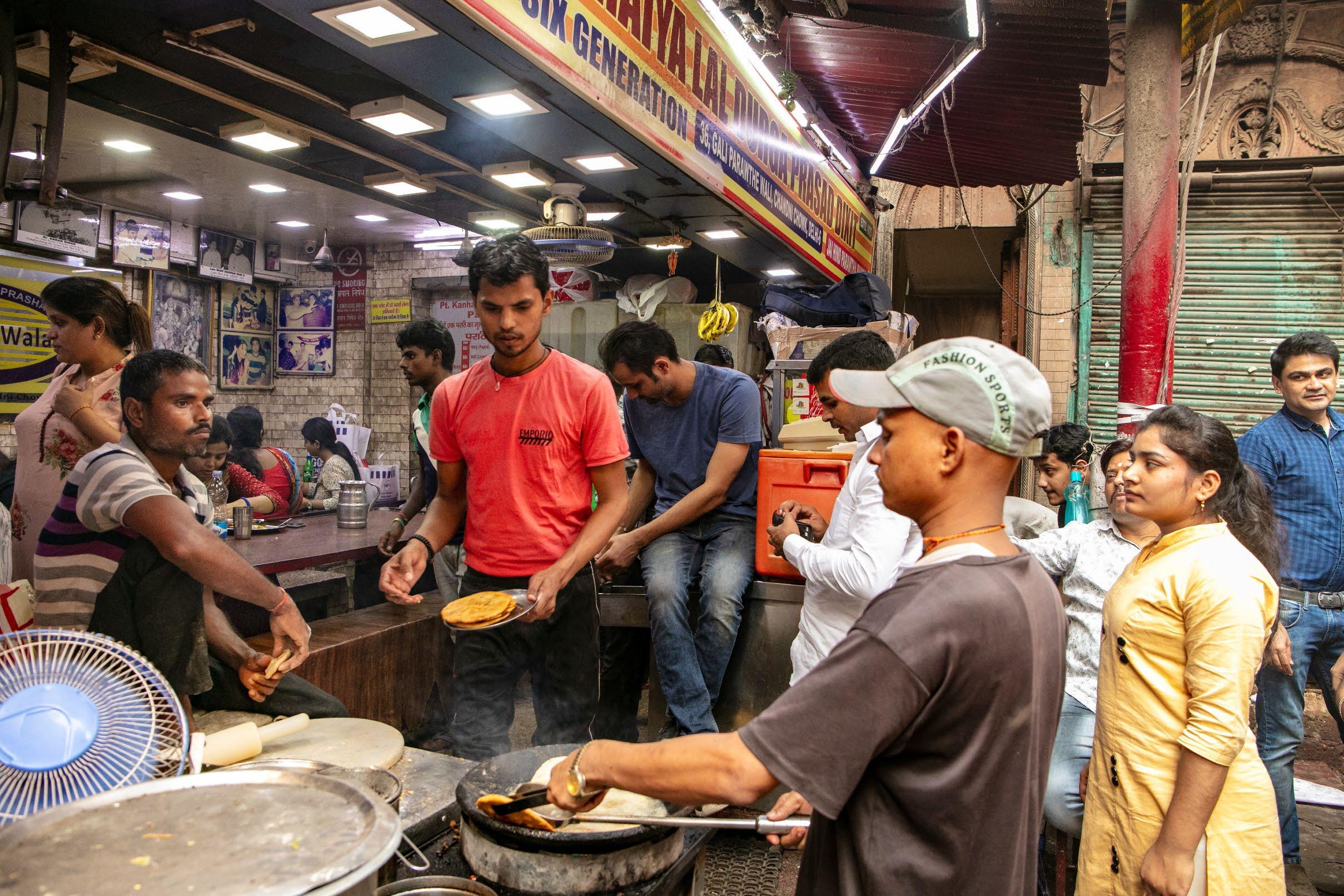












A Sacred Mosaic: Faith in the Old City
Chandni Chowk is also a place of deep spirituality. Walk a few steps in any direction, and you'll see people praying in mosques, offering flowers and lighting incense in temples and shrines, or volunteering in the kitchen of a gurudwara. Faith is visible everywhere here, woven into the rhythm of daily activities.
Constructed by the Mughal Emperor Shah Jahan in the 17th century, the grandeur of Jama Masjid, one of India's largest mosques, is a testament to Mughal architecture. It has not only served as a place of worship but also as a communal space where the Muslim community gathers, rests, and contemplates. Jama Masjid, a pivotal landmark in the spiritual and social life of Old Delhi, is a beacon of the Muslim community's spiritual journey in the city.
Established in 1656, during Shah Jahan's reign, the Shri Digambar Jain Lal Mandir stands as Delhi's oldest Jain temple. The Jain community, renowned for its acumen in commerce and wealth management, has long upheld its temples, as evidenced by the opulent beauty of the Jain sacred spaces in Chandni Chowk. The newer, smaller Jain temples nestled in the narrow lanes of neighborhoods like Dariba Kalan and Kucha Mahajani, adorned with marble, glass, and intricately designed paintings, are a testament to the unwavering faith of this community.
Built in the 18th century is a Hindu temple called Gauri Shankar Mandir. Dedicated to Lord Shiva, it houses a silver-covered lingam said to be over 800 years old. Devotees stop by to pray throughout the day; shopkeepers before opening their shops, rickshaw drivers between their rides, locals living in Chandni Chowk, and visitors passing through. It stands as a reminder that devotion here is simple, steady, and shared by all.
Roadside temples are also scattered all over Chandni Chowk. These are tiny temples, and in some cases, just a shrine in an alcove occupying the interstitial spaces between shops and buildings. While going to work in the morning, shopkeepers stop for a few moments to light a lamp, place marigold flowers, or say a prayer before beginning their day.
Nearby stands the Central Baptist Church, built in 1858. Urdu inscriptions on its walls speak to Delhi's diverse past. The church also runs a school for local children of all backgrounds, offering education and care to families in the area. It remains both a place of worship and community service.
A little further down the street is the Sis Ganj Sahib Gurudwara. It was built on the site where the ninth Sikh Guru, Guru Tegh Bahadur, was executed in 1675 for defending religious freedom. Run by volunteers and supported by donations, its langar (community kitchen) serves over 10,000 free meals every day, reflecting the Sikh belief in selfless service to the community. The gurudwara continues to embody Sikh values of equality and service.
What truly sets Chandni Chowk apart is not just the multitude of places of worship it houses, but the harmonious coexistence of these diverse traditions. The call to prayer from the mosque may harmonize with the ringing of temple bells nearby. A Sikh volunteer may serve hot food while, across the street, a Hindu priest ties a sacred red thread around a
worshipper's wrist. This is more than mere tolerance; it's a genuine coexistence. People of different faiths not only reside near each other here, but they also share space, time, and everyday experiences. The sacred life of this neighborhood serves as a poignant reminder that peace isn't just a distant dream; it's a living reality. This coexistence is what truly defines Chandni Chowk's sacred mosaic.
A Stillness in Motion: Photographing Friday
Prayers at Jama Masjid
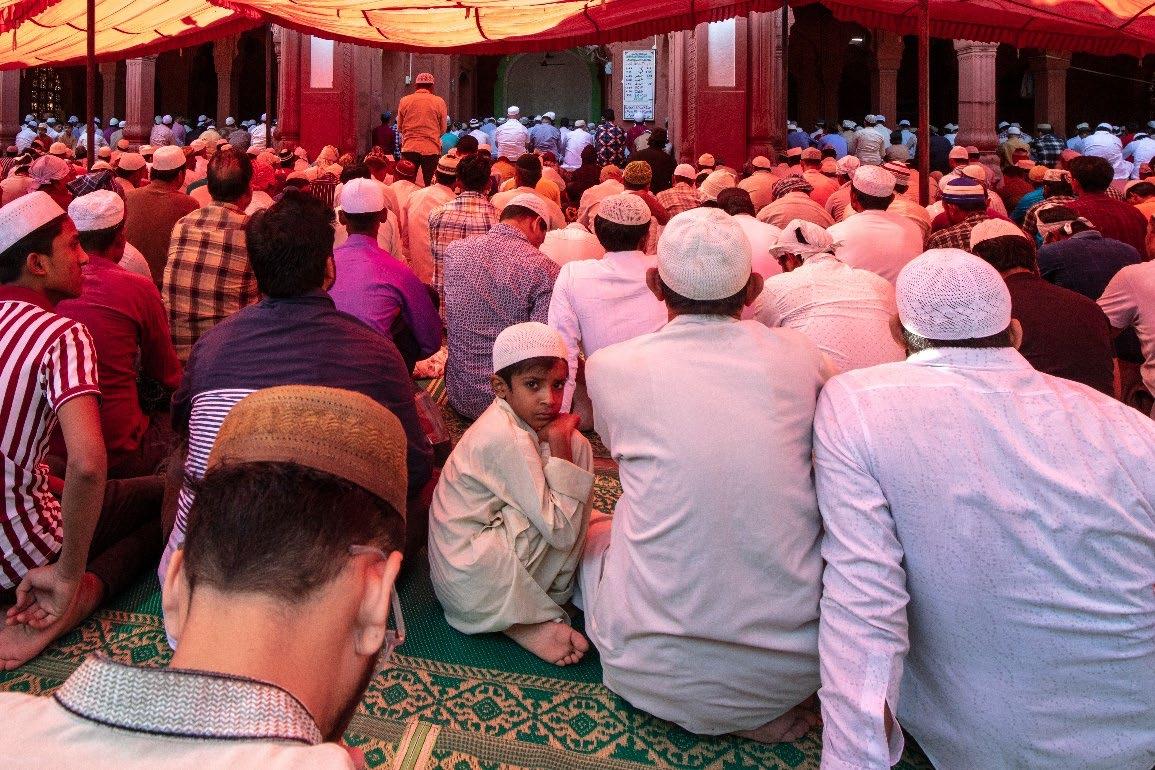
Jama Masjid attracts visitors from around the world to marvel at its architecture and appreciate its significance. But Fridays are different. The pulse of Chandni Chowk begins to change; streets get quieter and traffic eases. By mid -morning, Muslim men in white kurtas and prayer caps start to converge on the mosque. Women and younger girls, segregate into the covered courtyards on the side of the mosque. Everyone removes their shoes and washes their hand and feet as all men secure a place on the floor in the mosque's vast central courtyard.
Then the Adan begins the call to prayer echoing across sandstone, cutting through the din of the city. It's not just a summons; it's a declaration, a moment of pause and realignment. When the imam begins to deliver the khutbah, the Friday sermon, the atmosphere becomes even deeper. This is Jumu'ah, the most important prayer of the week, a time of collective reflection and unity.
For a photographer, this is when the visual narrative shifts. The courtyard becomes a sea of worshippers; rows aligned with calligraphic precision. Jama Masjid's geometry, its arches, domes, and minarets, guide the eye, but it's the people who complete the frame. Thousands
rise, bow, and prostrate in unison, like a wave of movement across the stone. You see closed eyes, calloused hands with palms open to the sky, and foreheads resting against stone.
After the prayer, the atmosphere lightens immediately. Laughter returns. Children run around. Friends embrace. Vendors reappear on the steps. The devotees put on their shoes and return to their everyday lives.
Dussehra in Chandni Chowk: A Festival of Tradition and Community
There is no place in India where Dussehra is celebrated with as much enthusiasm as in Chandni Chowk. The festival, marking the victory of good over evil, has been part of Chandni Chowk's traditions since the Mughal era, when Hindu festivals were celebrated alongside Islamic ones with royal support, making them a symbol of Delhi's shared cultural spirit. This long history gives the festival special significance in Old Delhi. Dussehra is not just a festival, it's a celebration of our shared values and the triumph of righteousness over evil.
The heart of these celebrations is the Ramlila, a theatrical presentation of the epic Ramayana that spans eleven days, brought to life through music, drama, and colorful sets. While several Ramlilas take place all over Delhi, some of the best ones are held in Chandni Chowk, the Ramlila Maidan grounds near the Red Fort being the most famous stage. While some professional actors are now starting to appear in these Ramlilas, for the most part, the actors hail from local families that have performed in Ramlilas for generations. The climax of Dussehra's eleven-day celebration is the burning of Ravana's effigy, symbolizing the victory of good over evil.
In Chandni Chowk, there is another long-standing tradition, the Ramlila Savari, a grand procession through the streets during the Dussehra festival. Actors dressed as Lord Ram, Sita, Lakshmana, Hanuman, and other characters ride on decorated chariots, reenacting scenes from the Ramayana. Local marching bands, dancers, and costumed demons join in, transforming the streets into a moving theatre; a veritable treat for photographers. This procession is one of the most anticipated events of the season.
These memories are personal to me. My uncle lived near Nai Sarak, and during our entire Dussehra holidays, we would stay with him to enjoy the Ramlila and Savari every day. We spent evenings following the processions and at dusk went to the Ramlila, all the while indulging in Chandni Chowk's famous street food jalebis, kachoris, and chai. For us, the festival was just as much about family and food as it was about the processions and performances.


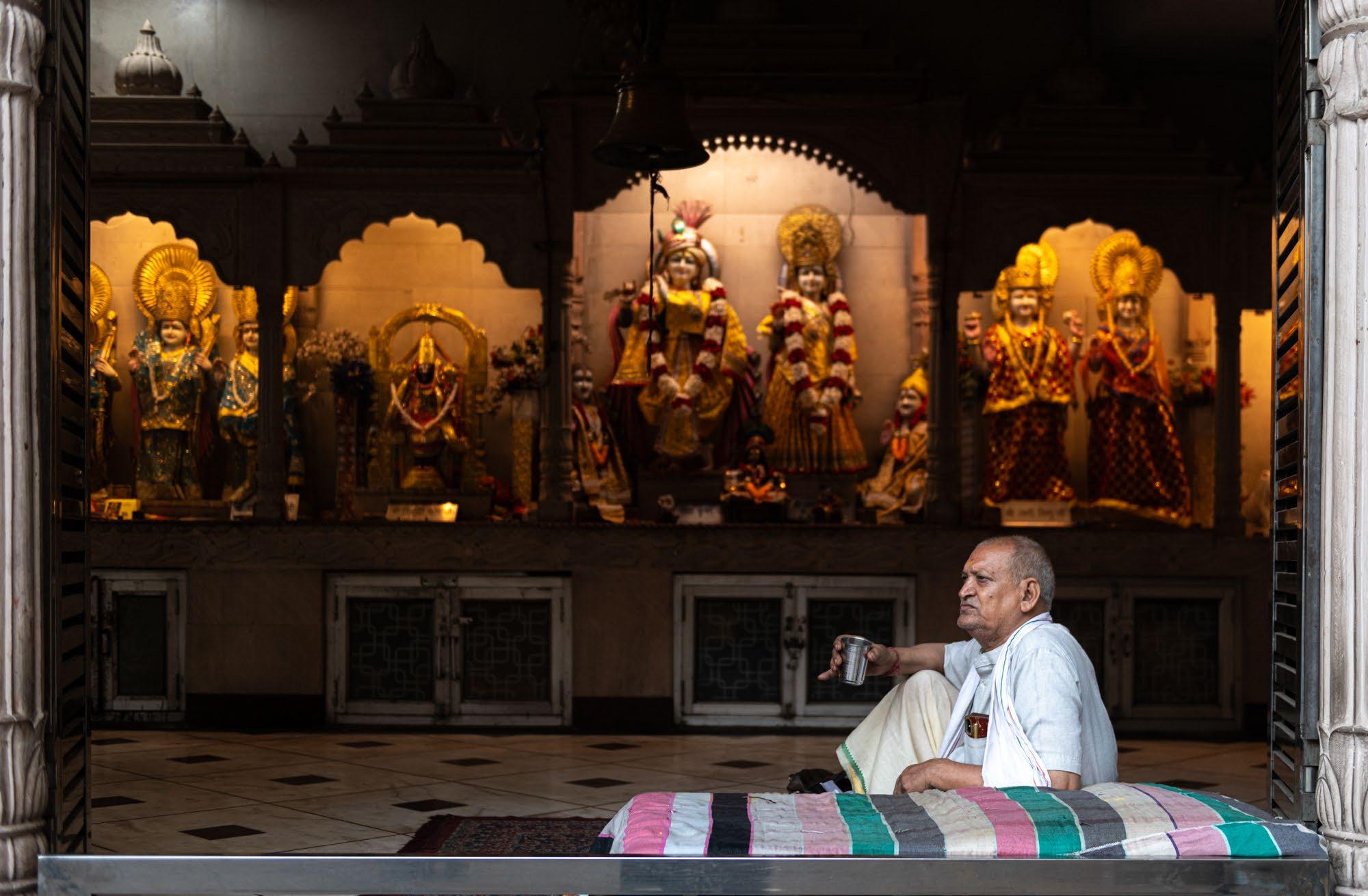


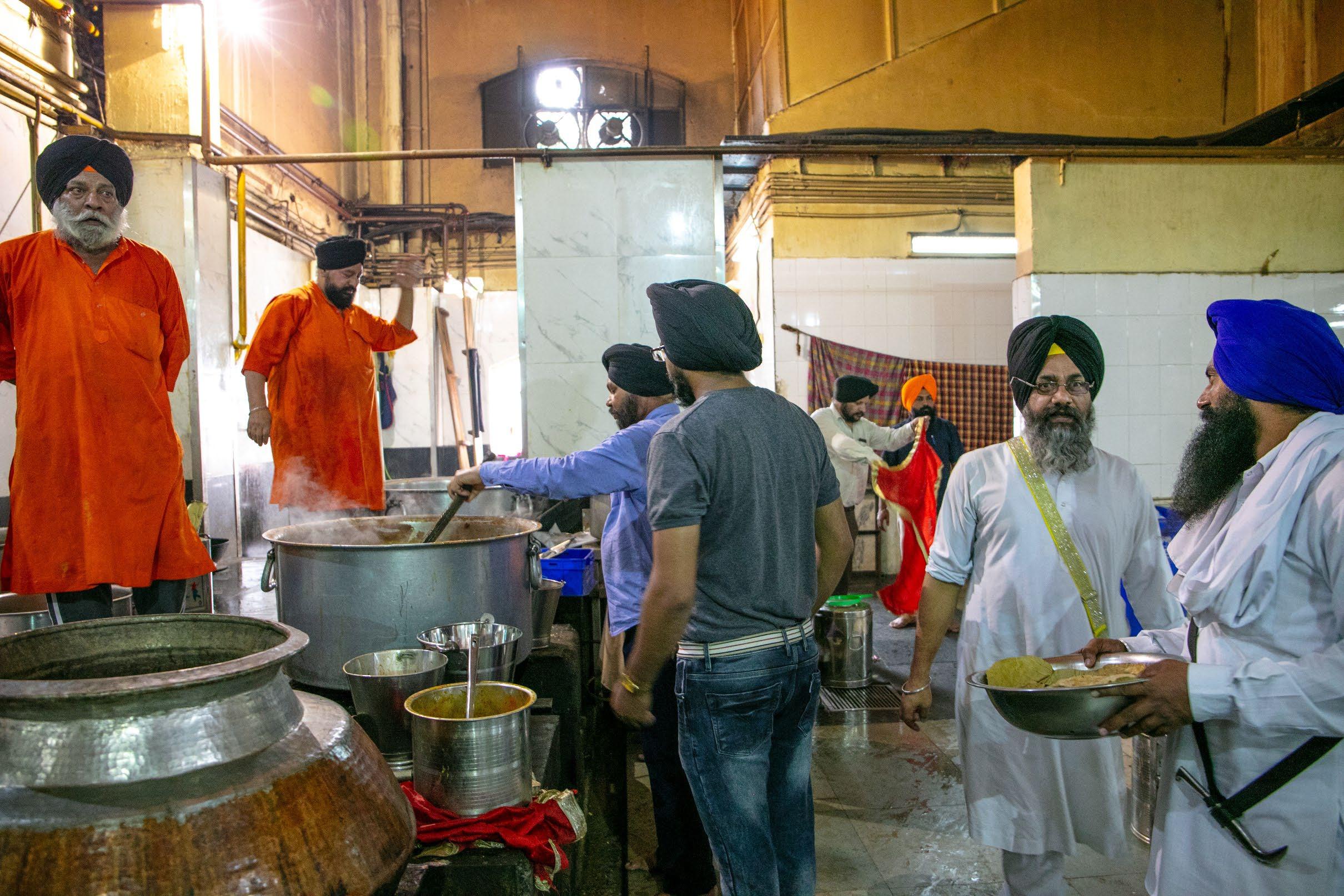


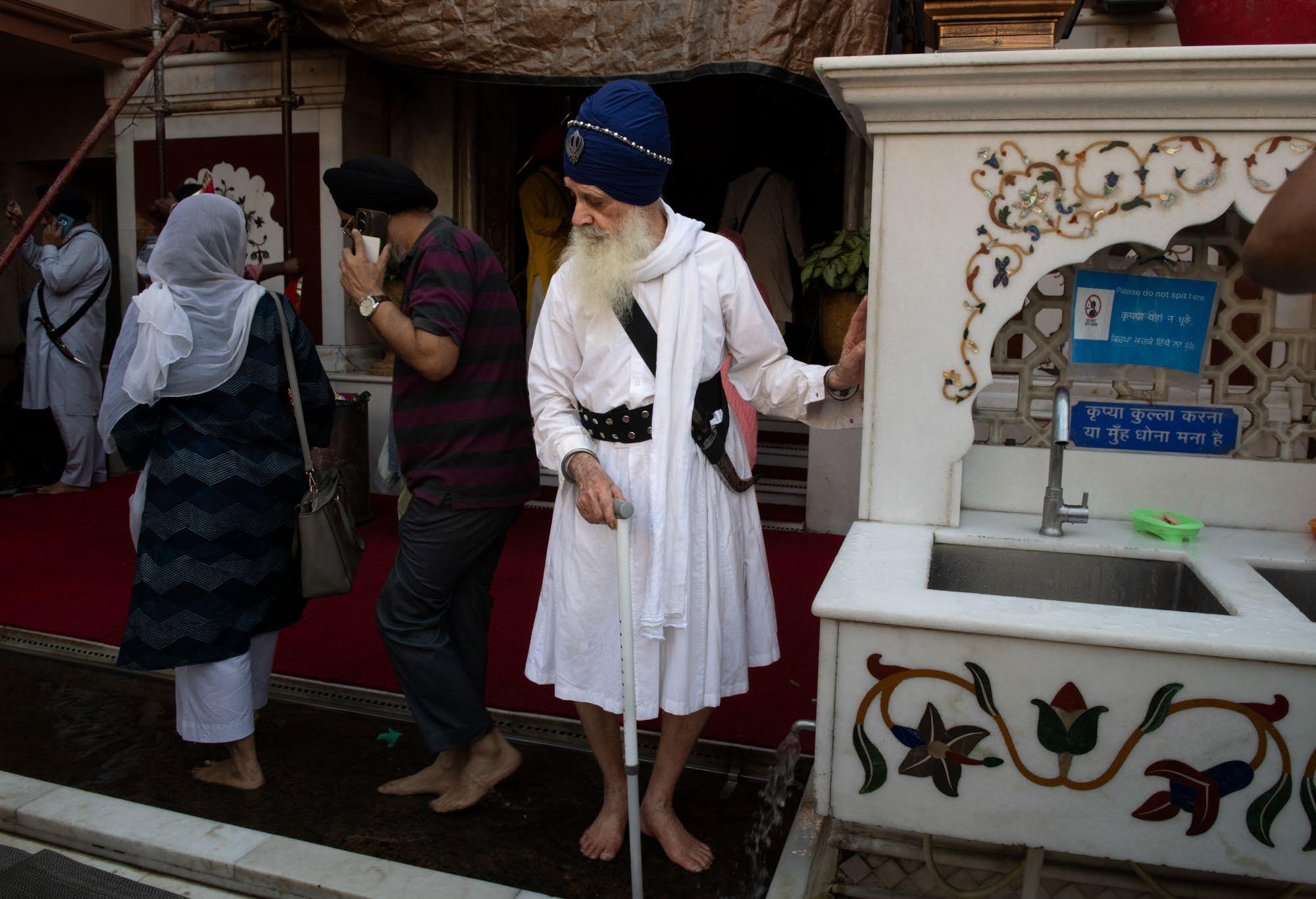

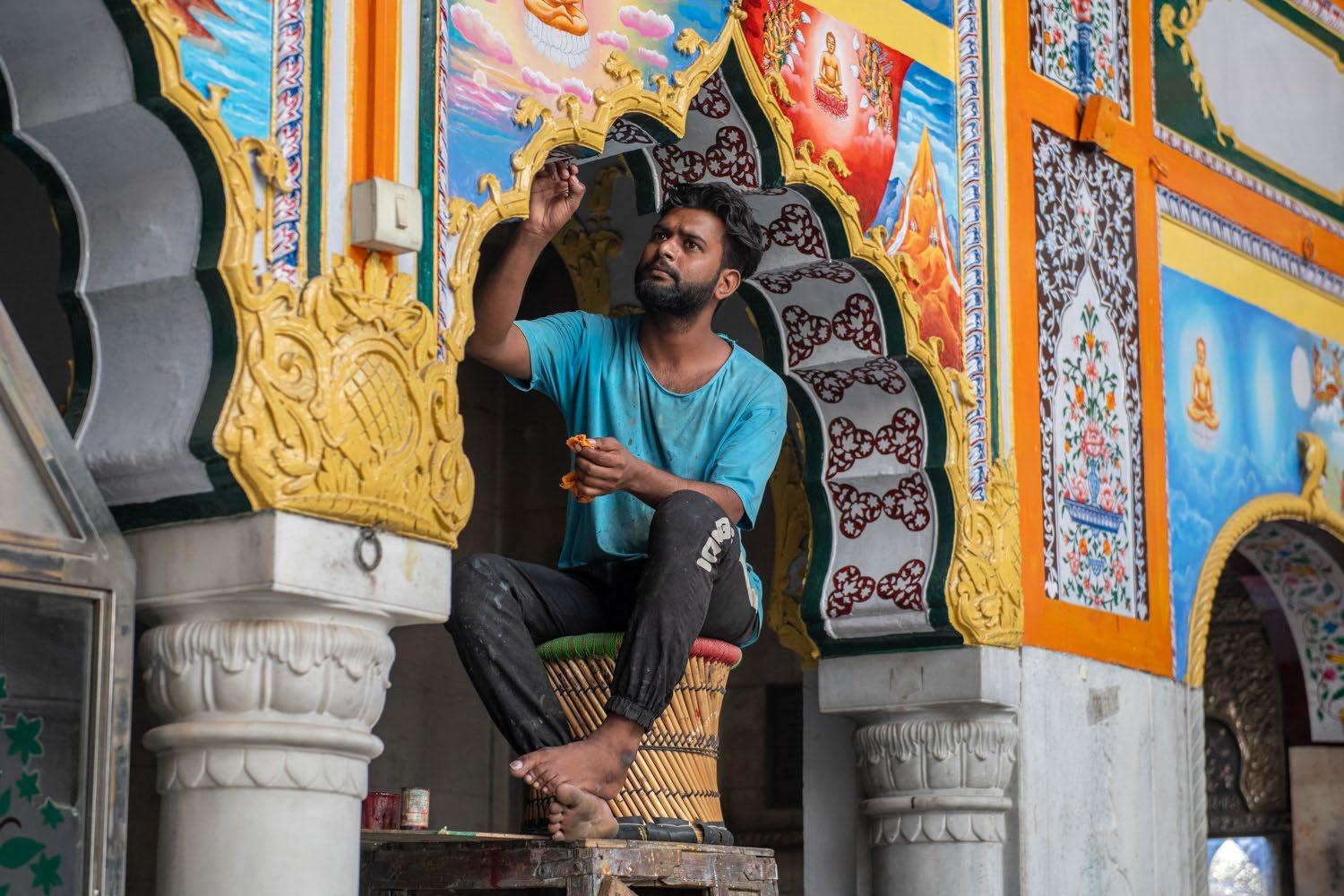


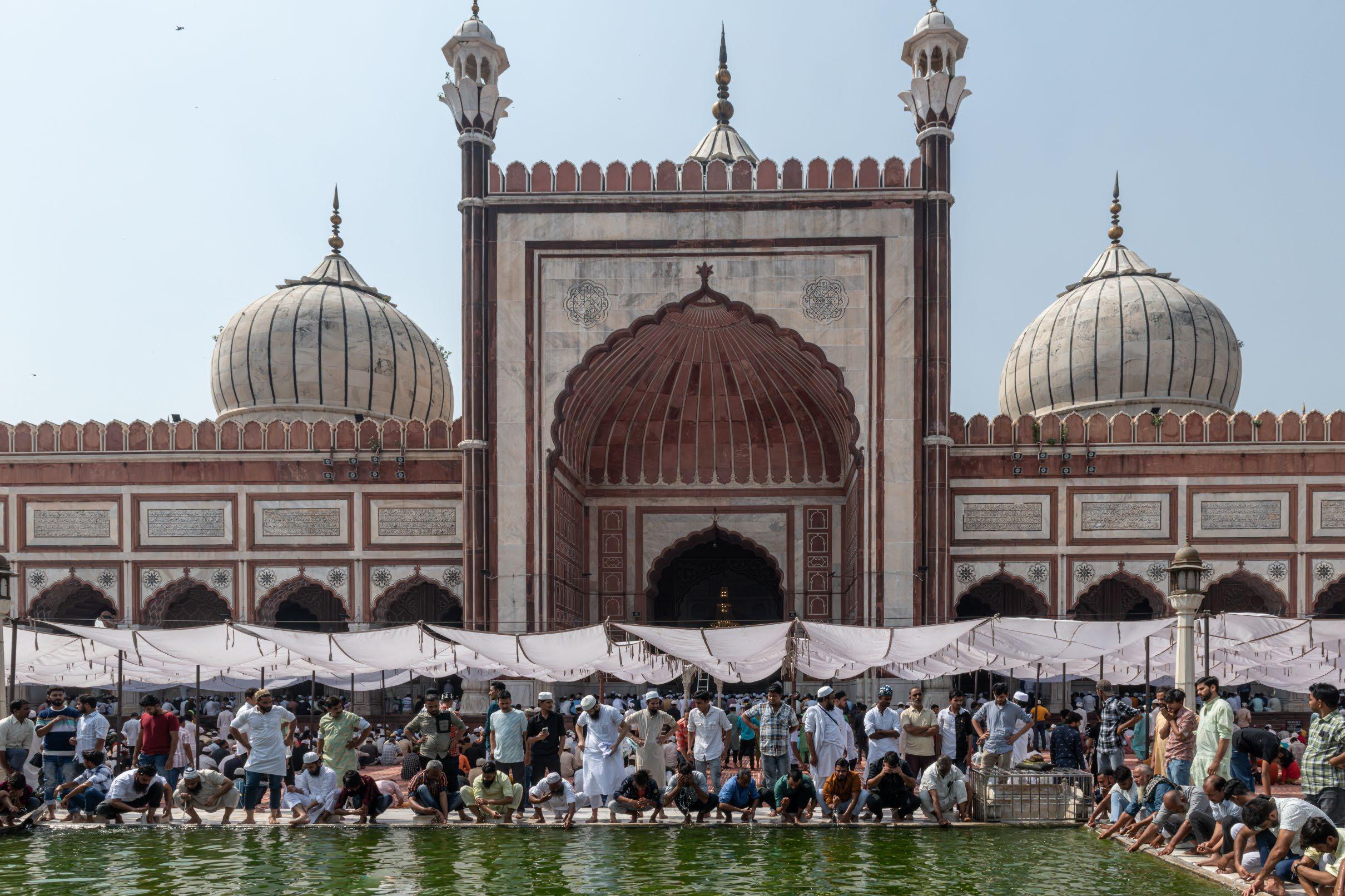





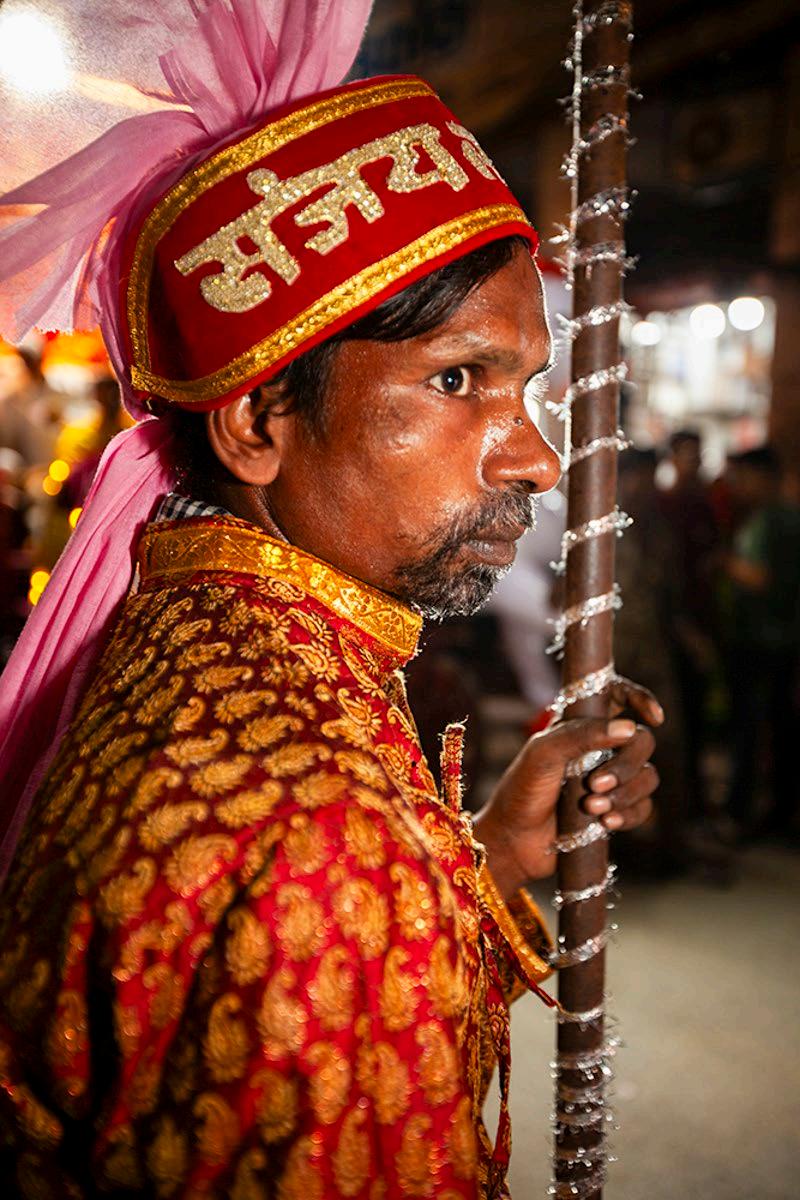



The Last Keepers of Craft
As a child walking through the lanes of Ballimaran, I recall being surrounded by the sounds of hammers striking silver to create ultra-thin silver foil for decorating sweets, paan, and ceremonial offerings. The artisans, known as varak wale, hammered all day on small nuggets of silver, each placed between layers of ox-gut leather (pattas), until it flattened int a delicate, translucent sheet. These leaves were then transferred to wax paper, ready to be used for decorating sweets at a Halwai (sweet maker). Today, this art has been completely replaced with machine-made varaks. With it, the ancient rhythm of a hammer and hands has faded into silence a victim of technology. This is a craft that has completely disappeared.
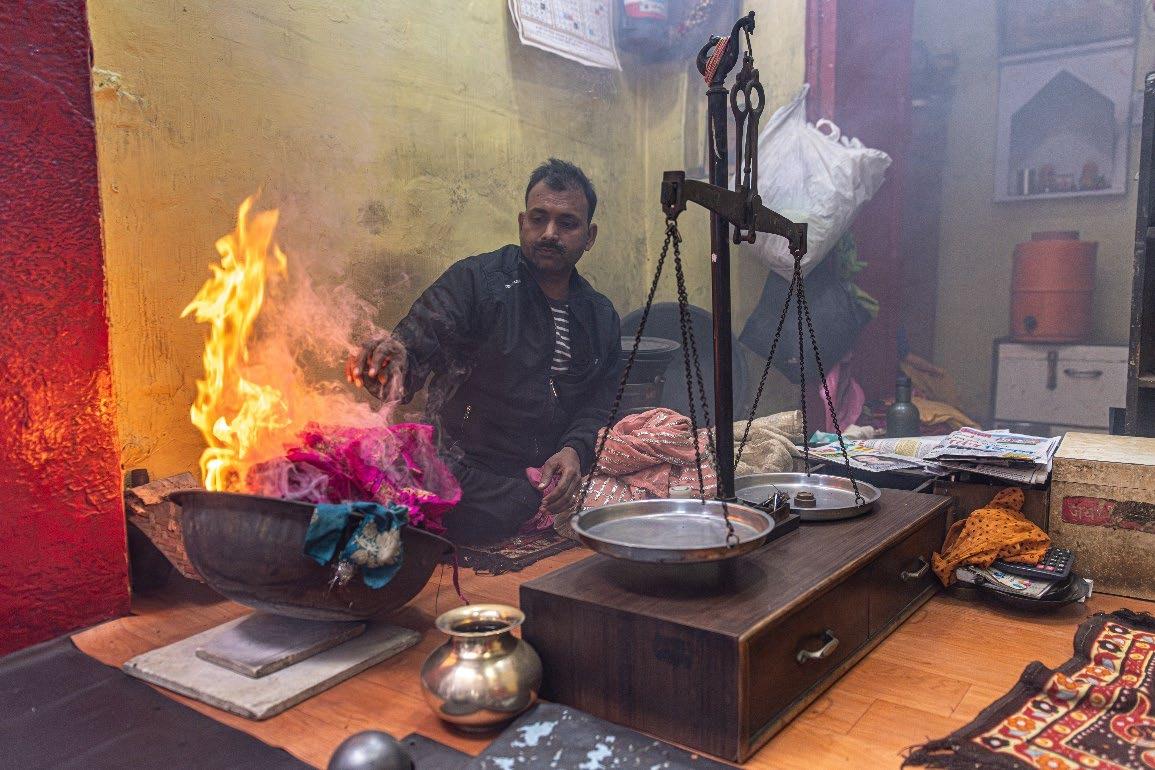
Not so long ago, Chandni Chowk was a thriving hub of artisans, each practicing a trade that is now on the brink of extinction. Yet, if you delve deep into the old lanes, you’ll still find a few artisans. They endure, quietly and skillfully, keeping their crafts alive with the same passion and dedication as before. Their perseverance is truly inspiring.
In a dimly lit workshop off Nai Sarak, we photographed a young bookbinder in a room filled with piles of worn ledgers, heirloom Qurans, and rare books in need of repair. Each book is taken apart, re-sewn by hand, its cover re-lined with cloth or leather. “Binding a book is like fixing a broken story,” he told us, his eyes gleaming with pride. This skill still survives, albeit only in a few workshops.
In the narrow back lanes of Chandni Chowk, the Kalaiwalas, traditional tinners, once practiced a humble yet essential craft: restoring brass and copper utensils with a gleaming layer of tin. Before every major family celebration, households would send their brass parats and degchis to the Kalaiwala. Today, in the age of stainless steel and non-stick cookware, this
profession is on the decline, being called upon only occasionally to revive treasured heirloom utensils for weddings and festivals.
In a modest workshop tucked into a narrow lane of Chandni Chowk, we photographed a group of zardozi karigars, sitting cross-legged, quietly embroidering sheer veils with gold and silver threads. Bent over wooden frames, their fingers stitched paisleys, vines, and floral motifs onto thin, shimmering fabrics. After hours of meticulous labor, the fabrics they craft are eventually transformed into glamorous gowns to be walked down a distant runway in a fashion show.
Inside Haveli Haider Quli sits a master watchmaker, Ikhlas Ahmed Shafi, who was trained in Switzerland. Surrounded by cuckoo clocks, vintage wall clocks, and century-old timepieces, he meticulously brings back life to heirlooms and discarded watches. His unique skills make him among the last watchmakers in Delhi with this level of expertise, a true treasure in the city.
In Sui Walan and Ballimaran, a few master artisans still practice the art of Khatati engraving Quranic verses and Urdu poetry into marble. These meticulous calligraphic engravings were once commissioned for mosques, mausoleums, and shrines; however, machine engraving has since overtaken much of the demand. A handful of ustads still chisel each curve and line of Naskh script to preserve the rhythm and language in stone, which no machine can replicate, keeping this art alive.
These artisans, stitching pages, polishing brass, embroidering gold, repairing clocks, or carving stone, are the last keepers of crafts that once defined Chandni Chowk’s living heritage. Their work, now rare, is crucial for the continuity of our cultural heritage. To lose them would be to lose a vital thread of Chandni Chowk’s story. Their work is a testament to the urgency of preserving these crafts.



Renaissance · Rejuvenation · Resurgence · Revival
In 2015, I had the opportunity to visit India with my daughters. They were eager to take a walking tour of Chandni Chowk, a place that held many of my childhood memories. We decided to engage the services of a newly formed organization called India City Walks. To our delight, their guides were not just tour leaders, but dedicated historians and storytellers who shared our passion for Chandni Chowk. It was an experience that set the tone for how I see the neighborhood today and, in some ways, precipitated the idea of this book.
Today, guided walks in Chandni Chowk are not just a trend, but a unique experience waiting to be discovered. These tours go beyond the usual sightseeing, unveiling hidden shrines, introducing you to old artisans still practicing their traditional trades, and always include a food crawl through the old city for a tasting at the iconic eateries of Chandni Chowk. This renewed interest in walking tours reflects a growing desire among Delhiites to engage more intimately with the history of Old Delhi. Walking tours have now become a vital way of connecting people with the city's living heritage.
Complementing this resurgence in interest in Chandni Chowk is an exciting body of recent emerging literature. A trio of powerful literary voices Swapna Liddle, Rana Safvi, and William Dalrymple has been at the forefront of this rediscovery of Chandni Chowk.

imperial life, bazaars, inns, and clustered neighborhoods. Her writing reminds us how Chandni Chowk was designed not just as a marketplace, but as a stage where the urban life of Shahjahanabad unfolded in all its splendor and diversity." 46 Her scholarship continues to shape how Chandni Chowk is understood today.
Rana Safvi's books, Where Stones Speak and The Forgotten Cities of Delhi, guide us through the living culture of Chandni Chowk. Her walking trails map points out Sufi shrines, hidden eateries, craftspeople, and street traditions. She writes: "To walk through Chandni Chowk is to experience a living museum, where every turn whispers a story, every aroma recalls a tradition, and every crumbling façade holds a memory." 47 Her voice has given Chandni Chowk a sense of continuity between past and present.
No list of chroniclers of Chandni Chowk would be complete without William Dalrymple. Though Scottish by birth, Dalrymple has made Delhi his home. In City of Djinns, he walks us through Ballimaran, Turkman Gate, and Khari Baoli, bringing to life the unseen layers of Chandni Chowk. His later work, The Last Mughal, traces the 1857 uprising through the very lanes of Chandni Chowk where we photographed. Dalrymple observes, "Chandni Chowk is where Delhi's past and present collide where the ghosts of Mughal grandeur jostle with the relentless pulse of the modern bazaar." 48 Through his work, Chandni Chowk has reached a global audience.
Yet, beyond walking tours and books, a groundswell of cultural renaissance has taken hold in Chandni Chowk over the last few years. Three remarkable individuals, Atul Khanna, Vijay Goel, and Abu Sufiyan, are at the heart of this revival.
Located in the Chunnamal compound and founded by Atul Khanna, Kathika Cultural Center is dedicated to preserving and promoting the art and culture of Chandni Chowk. Housed in two restored 19th-century Havelis facing each other, Kathika is both a museum and a performance space that hosts exhibitions, workshops, and classes to engage the public in the art form.
"What made you start this?" I once asked. He smiled and said, "Because memory needs a home. And stories need walls to echo off of. If we don't give them space, they vanish."
From musical, theatrical, and literary presentations to student workshops and heritage walks, Kathika reactivates memories by putting them back in circulation. It has become a vital meeting place for culture and memory in Old Delhi.
Whenever I return to Chandni Chowk, I stay at Haveli Dharampura, which has been restored by Vijay Goel, a senior politician and passionate preservationist. Mr. Goel acquired the rundown and crumbling haveli in 2005, restoring it over the next six years to preserve its architectural details and convert it into a 14-room heritage hotel. Goel's wife and daughter
now manage the hotel, which offers more than just lodging. Its guests are treated to Chandni Chowk's rich cuisine, as well as live Kathak and musical performances by local artists. Just a few yards away from Dharampura is Golden Haveli, a smaller, second haveli that is an equally warm and charming heritage hotel. These projects have brought new life to once-neglected historic buildings.
Abu Sufiyan is leading a digital marketing platform based on a community-based effort called Purani Dilli Walo Ki Baatein. It started as a Facebook page and, in just a few years, has established itself as a beloved digital archive of Old Delhi's heritage. His initiative has ensured that local voices remain central to the telling of Chandni Chowk's story.
Another quiet preservation effort is underway at the Hazrat Shah Waliullah Library in Chooriwalan. Founded in 1987, during a time of curfew and unrest, it began as a shelter and has evolved into a sanctuary for learning. Named after the 18th-century scholar Shah Waliullah Dehlavi, it is a non-profit library entirely run by volunteers and local donors. It is by no means a grand place, but a place where you will undoubtedly find older men reading Urdu papers and magazines, students preparing for exams, and children discovering folktales. It functions as a communal living room, a baithak, to meet and discuss politics, cricket, books, or prices in the bazaar. The library remains a modest yet important anchor for the community.

These local initiatives now coexist with significant municipal and private interventions. While some, like the Chandni Chowk Metro Station and the pedestrianization of the main road, are welcomed for making Chandni Chowk more accessible, others, like the construction of the high-rise Chandni Chowk mall with a three-story food court, have sparked debates about their impact on the traditional character of Chandni Chowk. The age-old markets, street vendors, and ancestral households now find themselves woven into a new urban fabric. Heritage hotels and high-rises, tradition and convenience, all share the same narrow lanes.
Yet this evolution carries both promise and loss. Wider roads, better amenities, and greater safety are welcome, but they also smooth away the textures, the closeness, the human press of bodies and voices that give Old Delhi its unmistakable character.
Thanks to literary voices like Swapna Liddle, Rana Safvi, and William Dalrymple, who celebrate and research the history of Old Delhi, and to entrepreneurs like Atul Khanna, Vijay Goel, and Abu Sufiyan, who keep its culture alive, the memories and traditions of Chandni Chowk are preserved, recited, and shared.
I hope Chandni Chowk is evolving but not erasing its history. I hope it will not be replaced but only remade. And in that remaking, I hope its legacy will continue not in sepia, but in bold, living color.



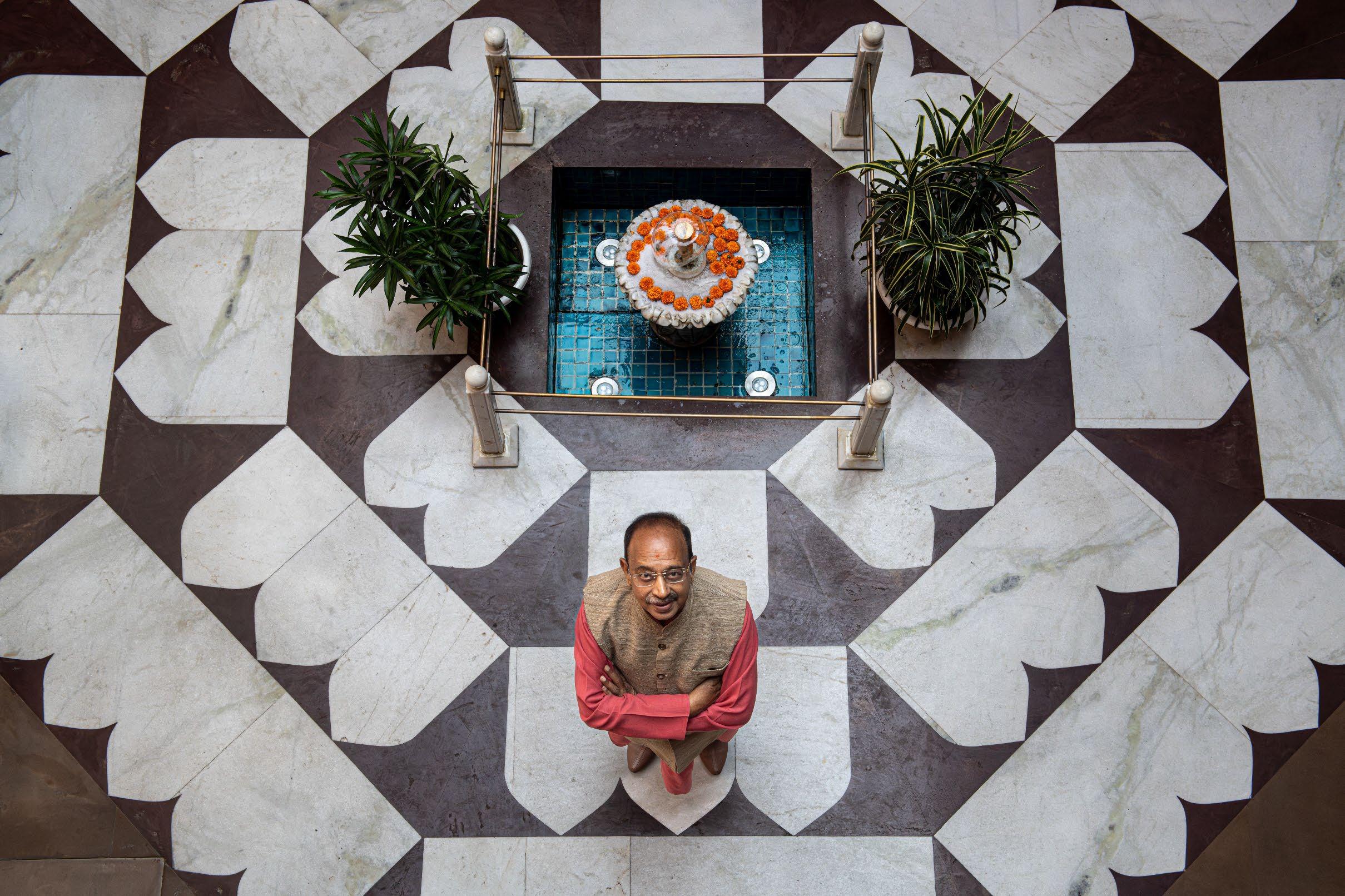


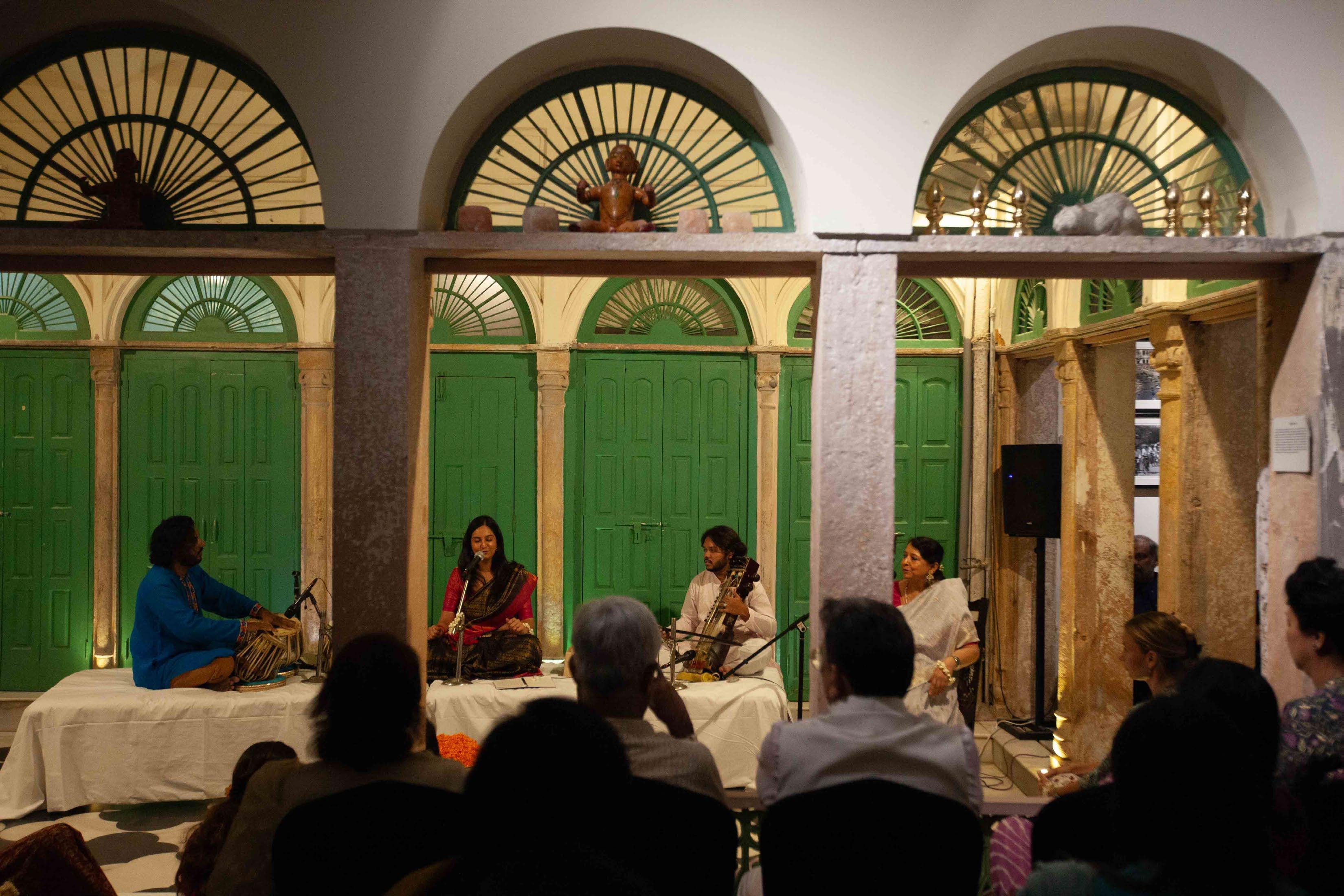
Authors and Photographers Biographies
Swapna Liddle Swapna Liddle is a leading historian whose scholarly work has profoundly shaped contemporary understanding of Delhi's history.
Her first book, Delhi: 14 Historic Walks, guided readers through its historic monuments and neighborhoods. Among her subsequent books are three that have dealt with different aspects of the seventeenth century Mughal city that is now popularly known as Chandni Chowk –Chandni Chowk: The Mughal City of Old Delhi; Shahjahanabad: Mapping a Mughal City, and The Broken Script: Delhi Under the East India Company and the Fall of the Mughal Dynasty, 1803–1857. She has also authored a book on New Delhi – Connaught Place and the Making of New Delhi, and co -authored Gardens of Delhi, highlighting the city's oftenoverlooked public gardens.
Liddle has long been associated with the Delhi Chapter of the Indian National Trust for Art and Cultural Heritage (INTACH), where she has contributed to conservation efforts at historic sites. She has also curated several exhibitions focusing on the art, architecture, and history of Delhi.
still the largest exhibition of Indian photography ever staged in the United States.
Gaur has published three books and has forthcoming titles, including a major scholarly volume on the experimental printmaker Krishna Reddy. As a patron of the arts, he serves on the boards of the Philadelphia Museum of Art and Grounds for Sculpture, where he champions South Asian art and fosters global dialogue.
Umesh Gaur is a distinguished collector, scholar, and photographer. He has a long-standing connection to Chandni Chowk, Old Delhi, where he spent his childhood and has been photographing there for over fifty years.
Based in the United States, Gaur is recognized as one of the largest collectors of Indian art in the country and in 2004 was named among the Top 100 Art Collectors in America. His collection which consists of modern and contemporary painting, works on paper and sculptures, also includes most significant holdings of modern and contemporary Indian photography outside India. Portions of this collection have been gifted to the Smithsonian’s National Museum of Asian Art, forming the basis of a series of exhibitions that have brought Indian photography to international attention. Earlier, he spearheaded the landmark 2007 exhibition India: Public Places, Private Spaces at the Newark Museum,
Harvey Stein is a New York–based photographer, educator, and author whose work over five decades has explored communities through street photography and portraiture. He has taught at the International Center of Photography since 1976.
His ten acclaimed books are: Parallels: A Look at Twins (1978) and Artists Observed (1986). Since then he has turned his lens repeatedly to New York, resulting in Coney Island (1998), Coney Island 40 Years (2011), Coney Island People 50 Years (2022), Harlem Street Portraits (2013), and Briefly Seen: New York Street Life (2015). Other book include Movimento (2006) on Italy, Mexico: Between Life & Death (2018), and Then and There: Mardi Gras 1979 (2020).
For the past decade, Stein has traveled extensively in India. His current series India: Between Dream & Reality, is focused on environmental portraits. Stein’s photographs are in over sixty major museum collections worldwide and have been widely exhibited internationally
Margarita Mavromichalis is a Greek photographer whose work explores cultural identity, human resilience, and the poetry of everyday life. She is particularly drawn to street photography and environmental portraiture. Raised in a diplomatic family, she lived across continents before moving to New York in 2009, where she studied at the International Center of Photography and later taught. After returning to Greece in 2014, she immersed herself in documenting one of the most urgent humanitarian
crises of the 21st century—the arrival of thousands of refugees on the island of Lesvos.
Recently, her focus has been on Chandni Chowk and Varanasi in India. She has traveled there more than 25 times.
Her photographs have been widely recognized and exhibited internationally in New York, Boston, San Diego, Budapest, Athens, Paris, Berlin, Barcelona, London, and Tokyo. Her work is included in the collections of the Museum of the City of New York and the Brooklyn Historical Society. Honors include the Pollux Award (2016), Julia Margaret Cameron Award (2018, 2020), Prix Pictet nomination (2019), Budapest International Foto Awards Gold Medal (2021), and Leica Oskar Barnack Award nomination (2023).
Carol K. Huh is the Associate Curator of Contemporary Asian Art at the National Museum of Asian Art, making her the first to hold this position in the museum’s history. She earned her Ph.D. from Georgetown University.
Under her curatorship, the museum has launched a dynamic decade of contemporary programming, including the opening of its first dedicated modern and contemporary galleries. Notable exhibitions include Unstill Waters: Contemporary Photography from India (2022–23), which spotlighted landscape and environmental themes through works by artists such as Ravi Agarwal and Atul Bhalla. More recently, she curated Body Transformed: Contemporary South Asian Photographs and Prints, a powerful exploration of identity through photography and printmaking featuring artists like Jyoti Bhatt, Jitish Kallat, Chitra Ganesh, and Pushpamala N.
Acknowledgements
List of photographs and Photo Credits
